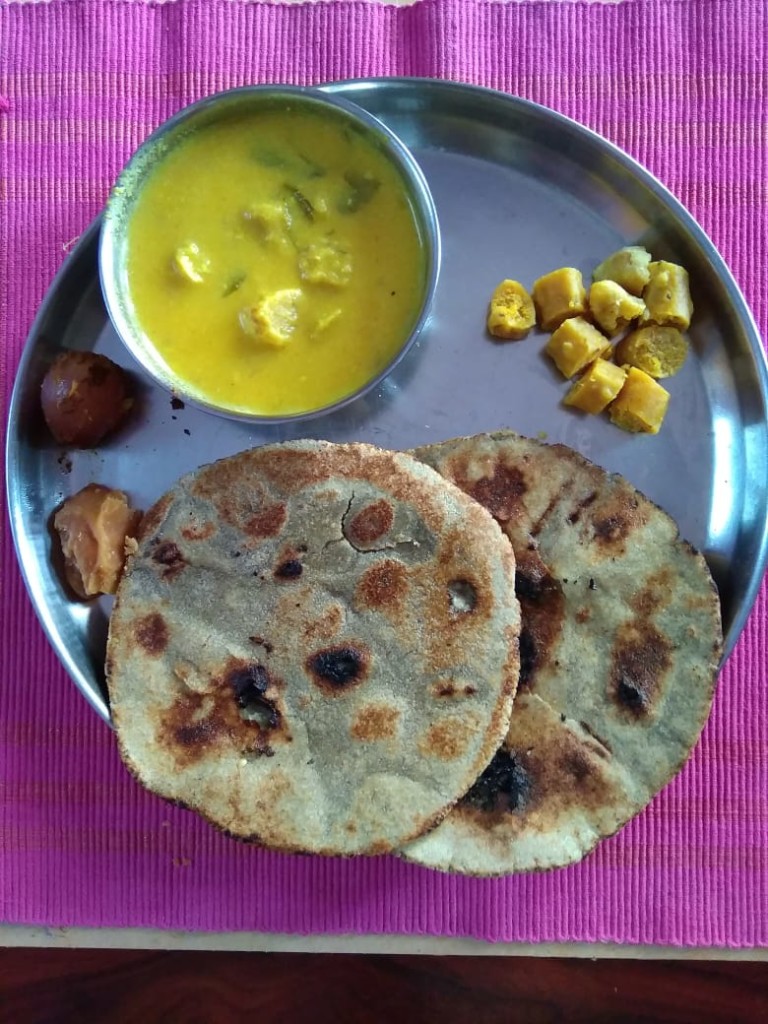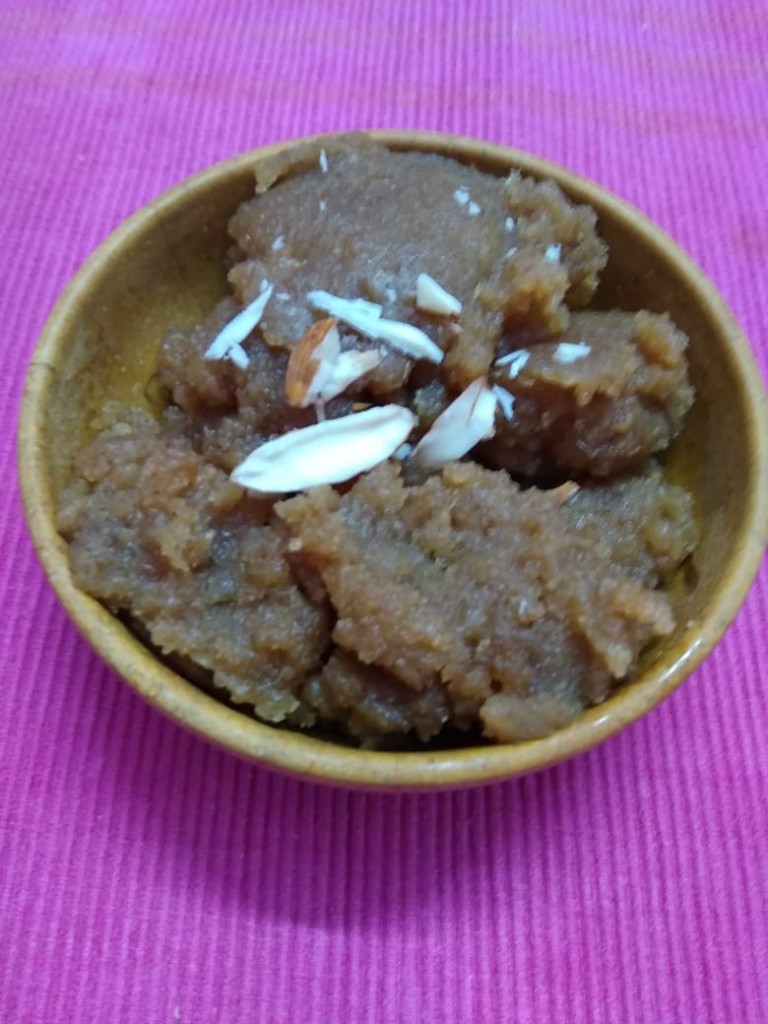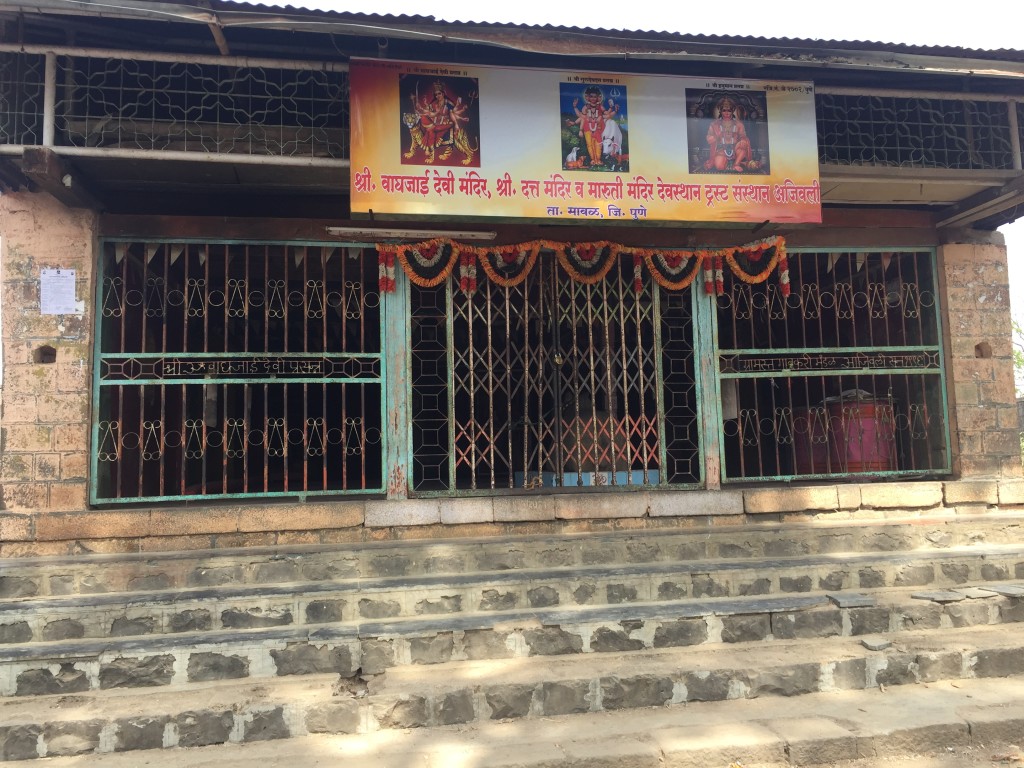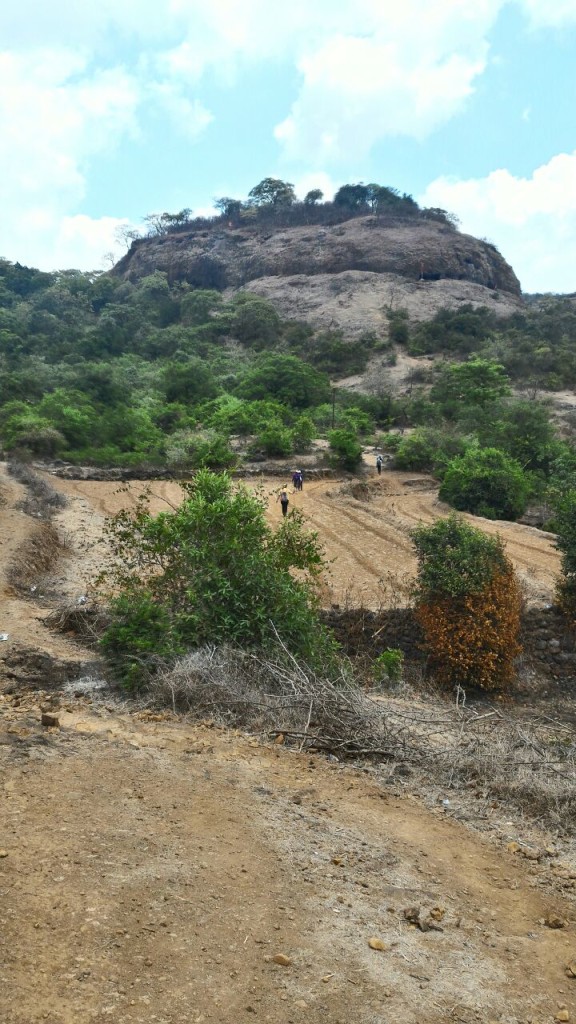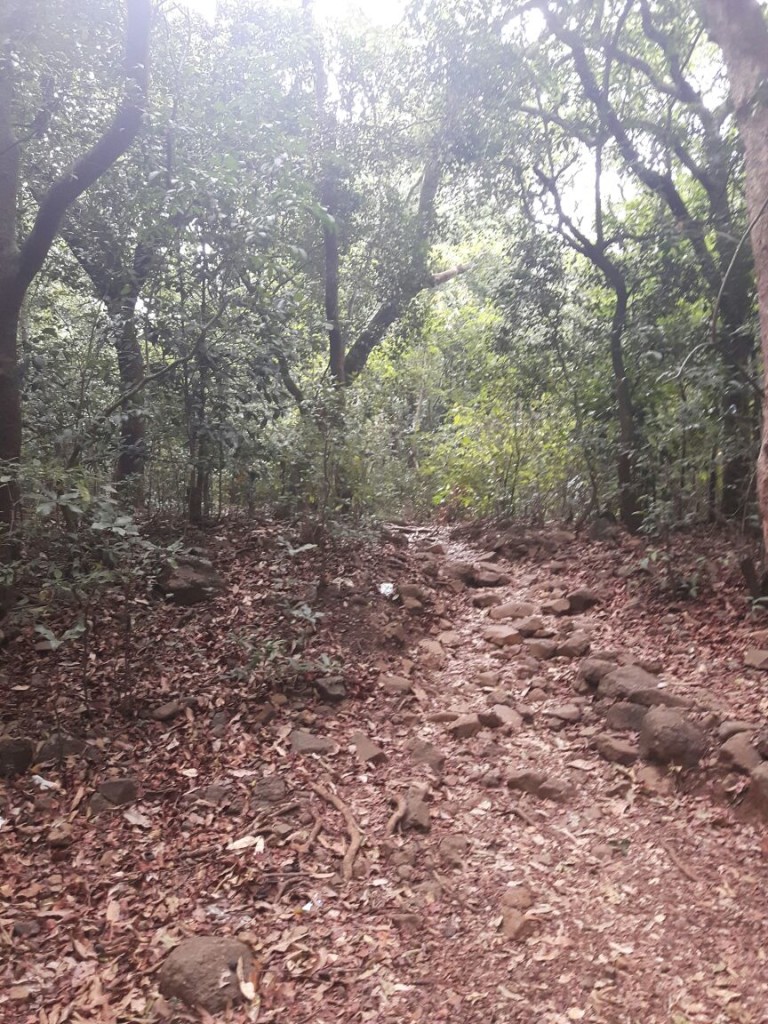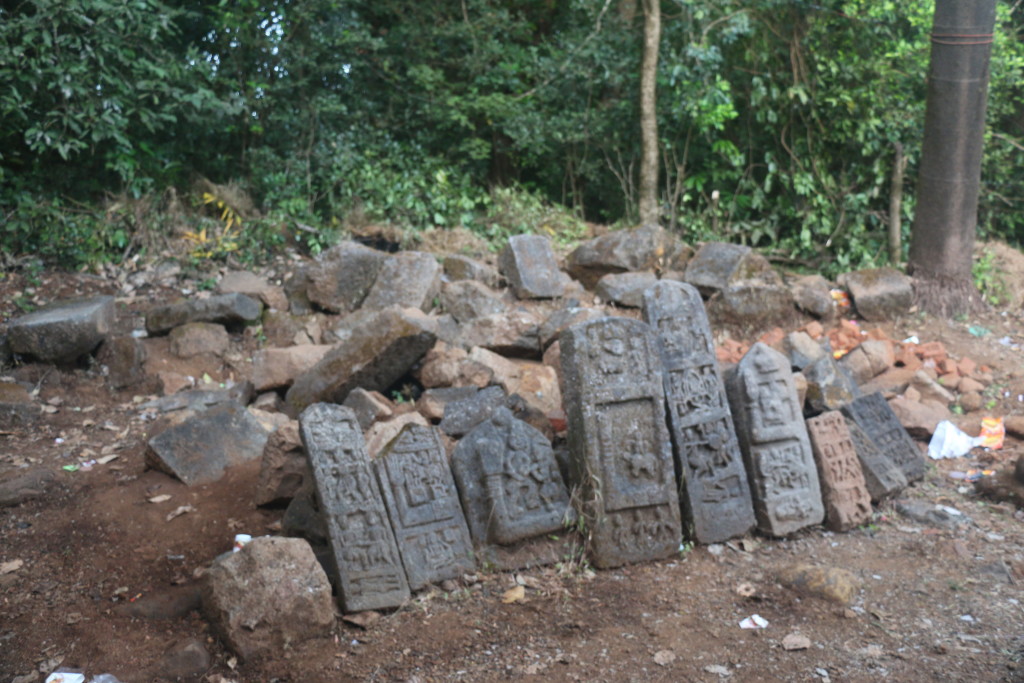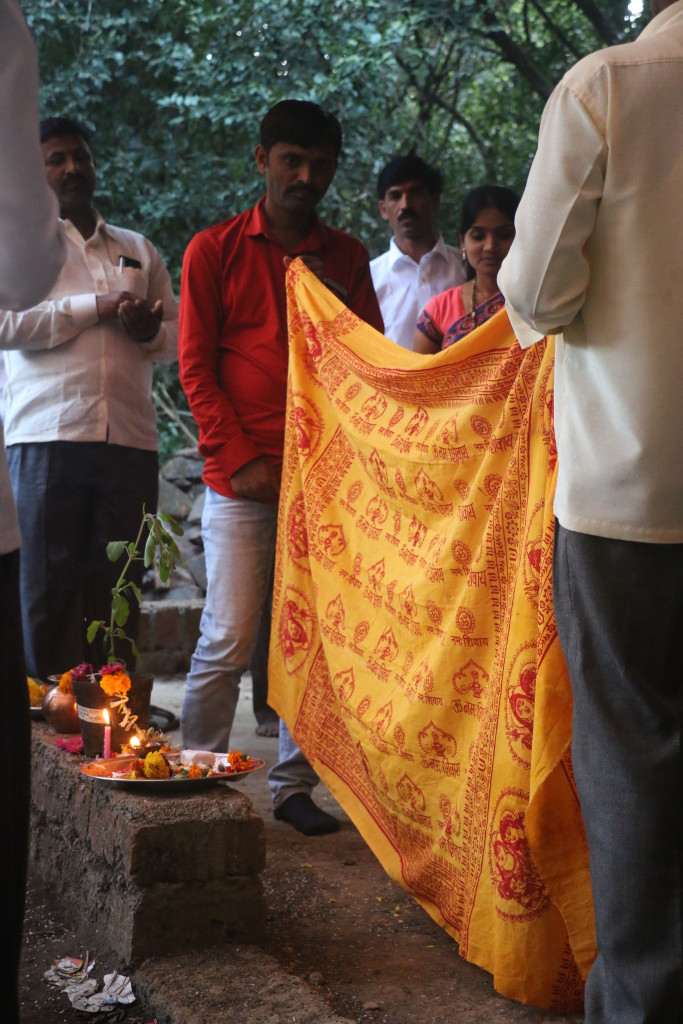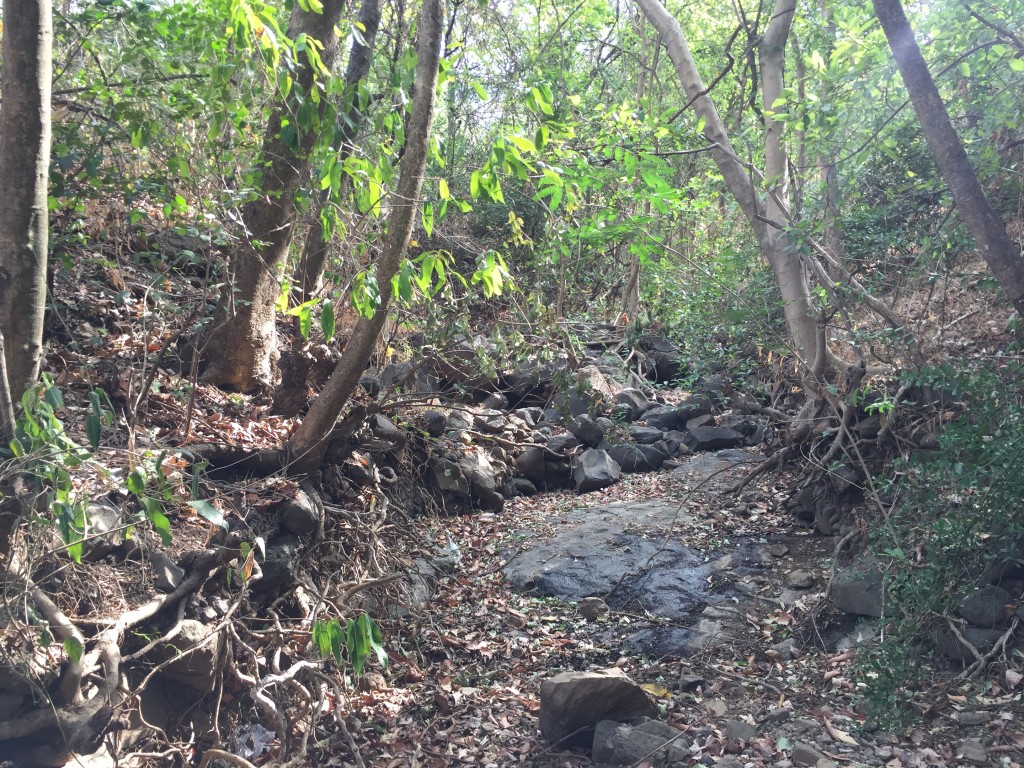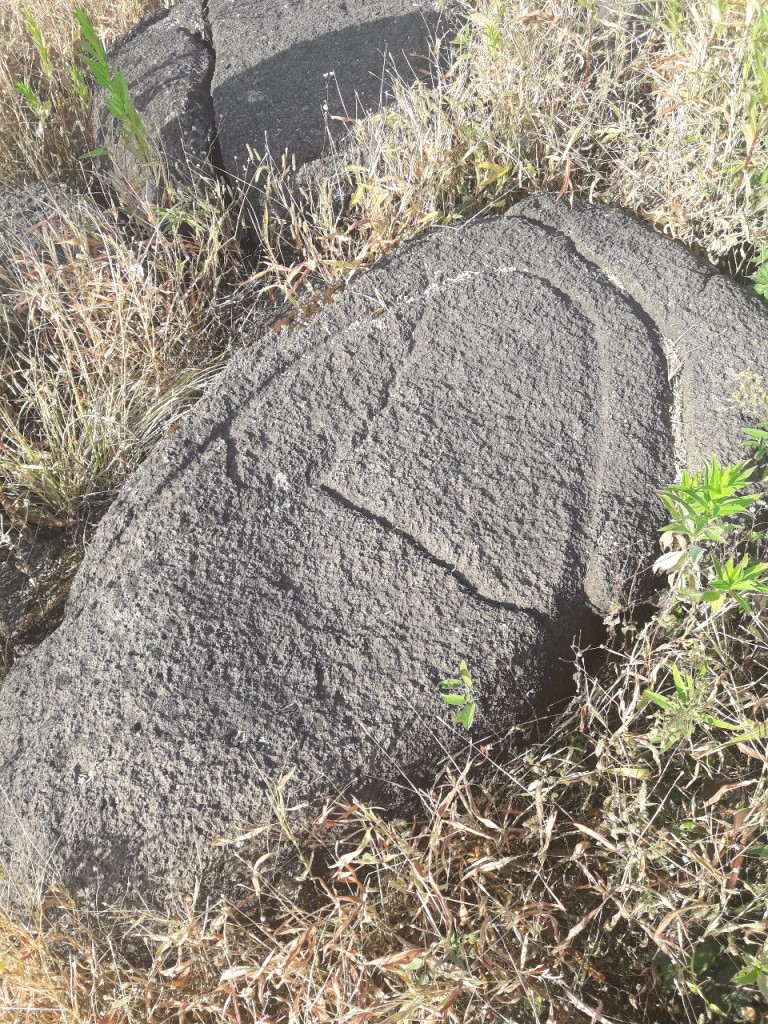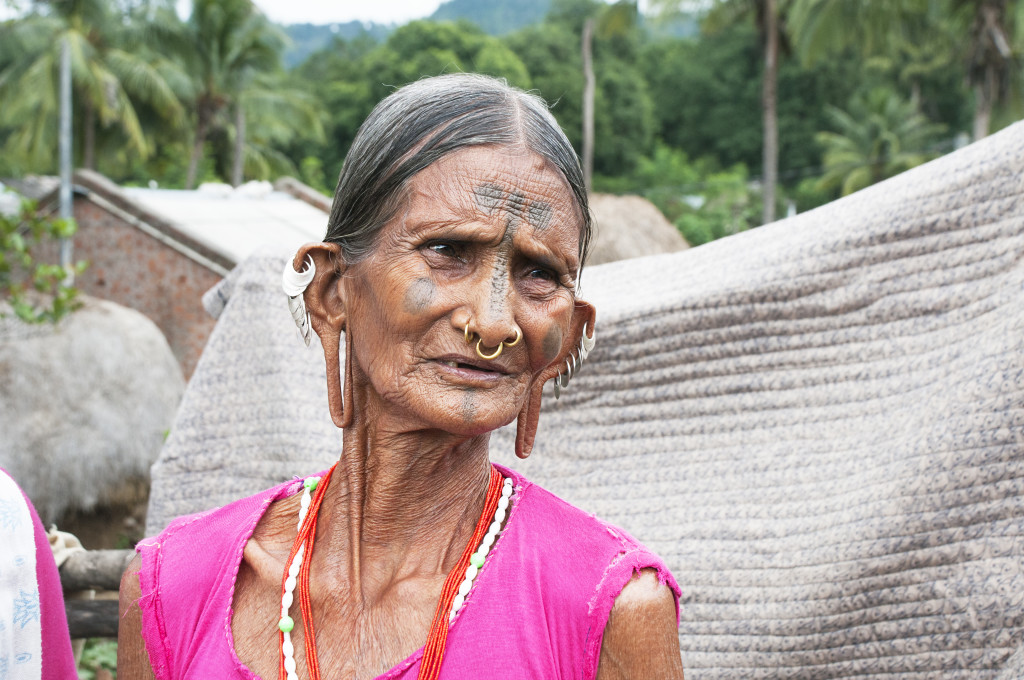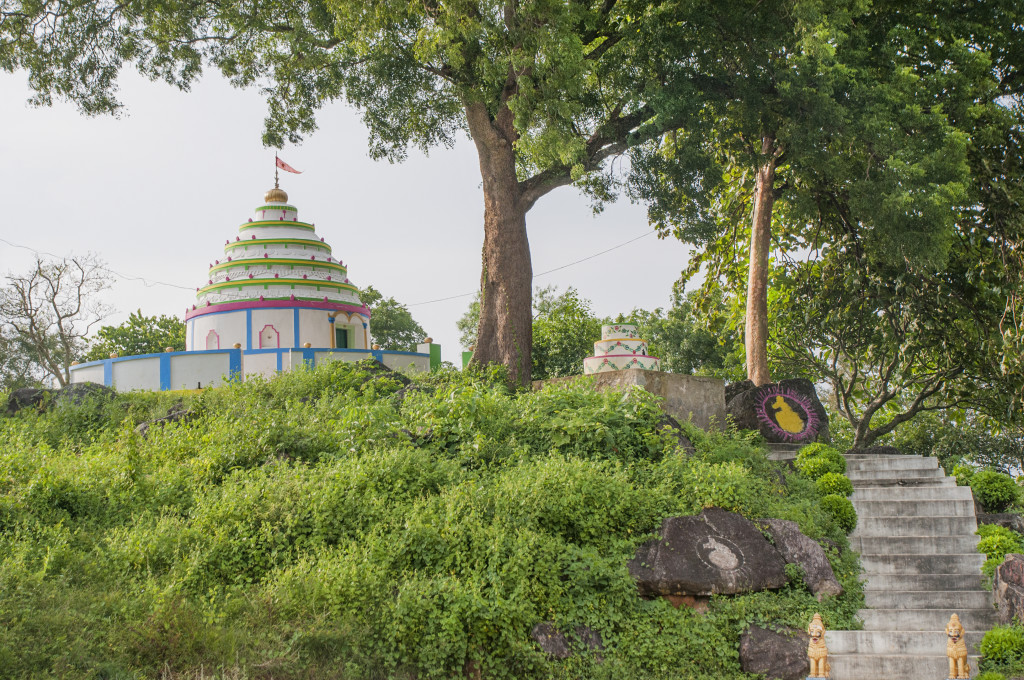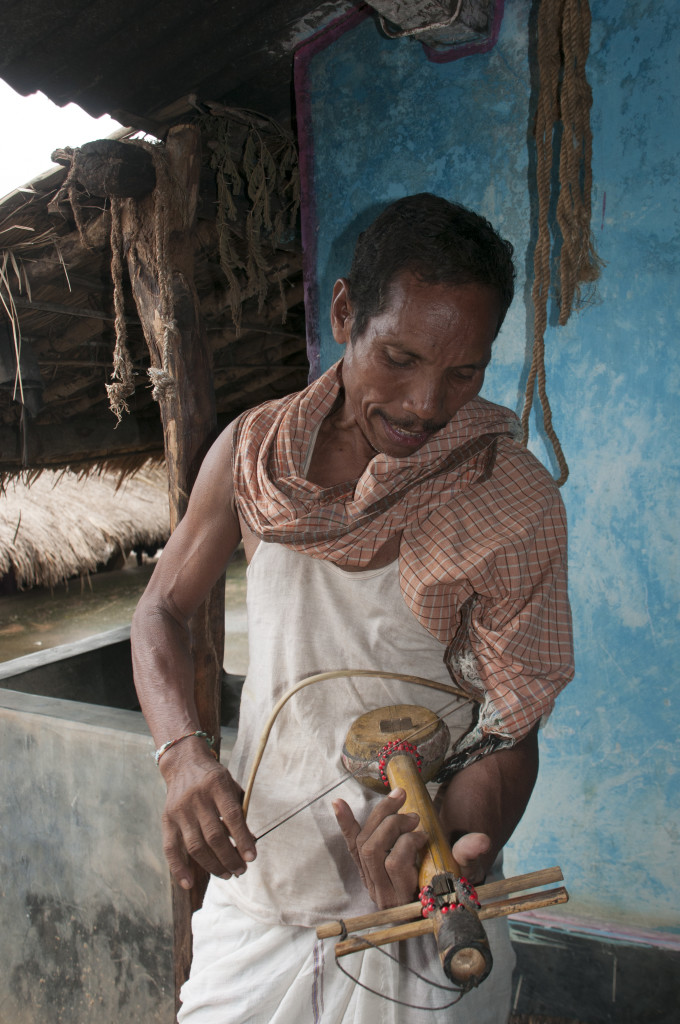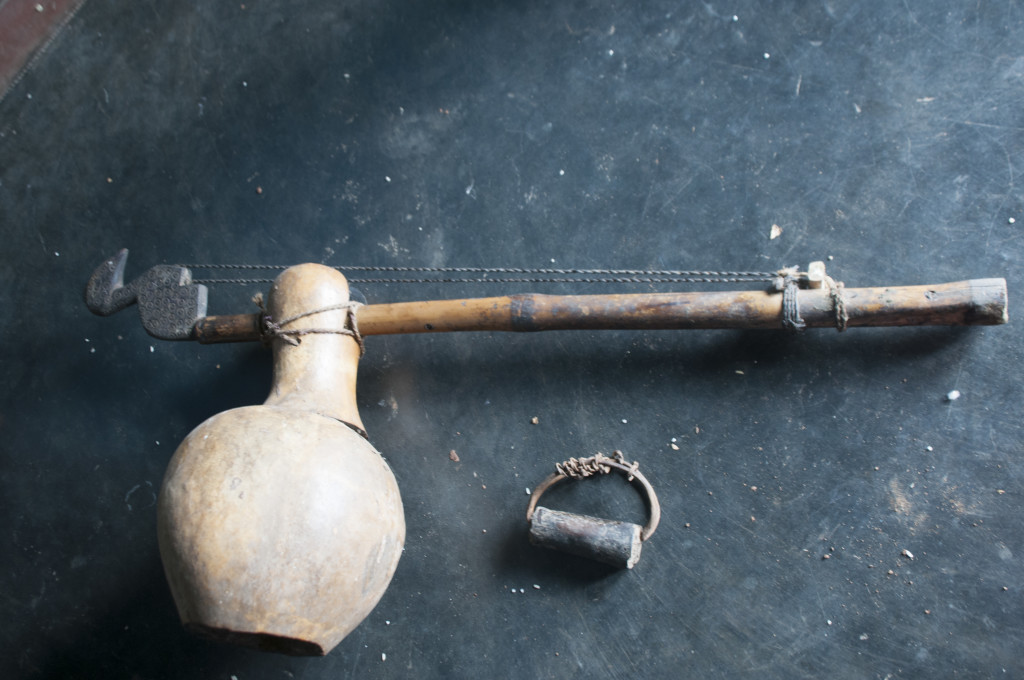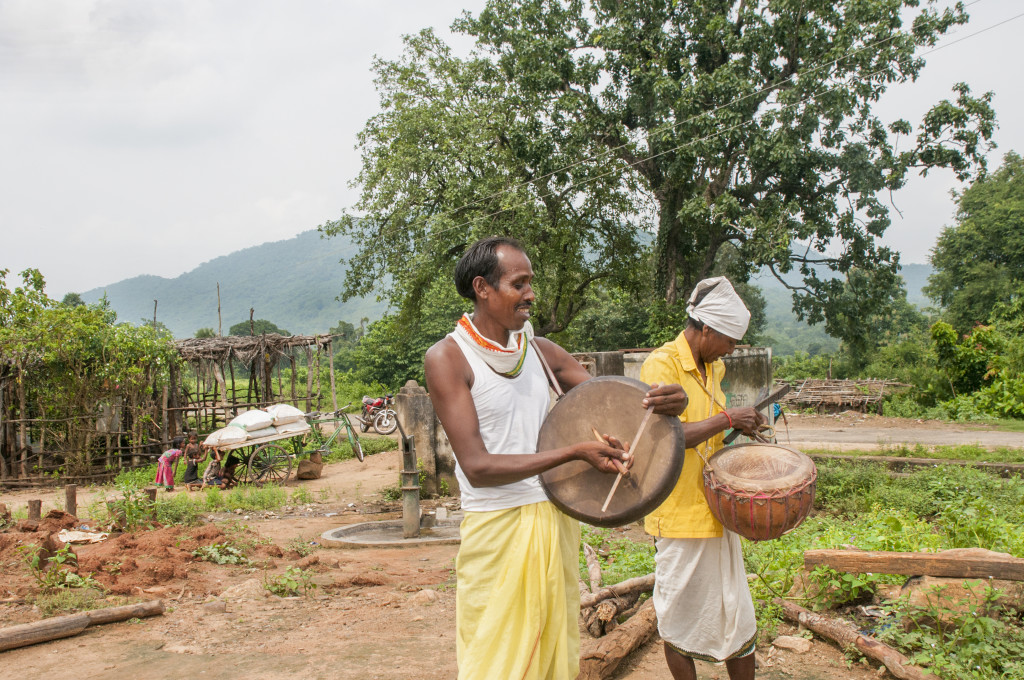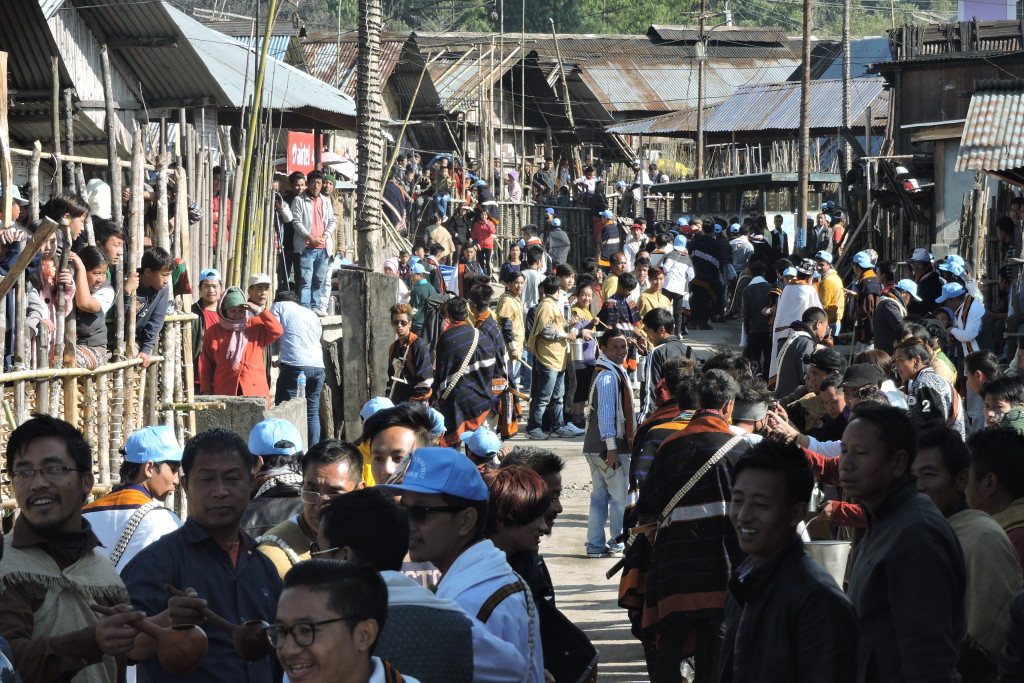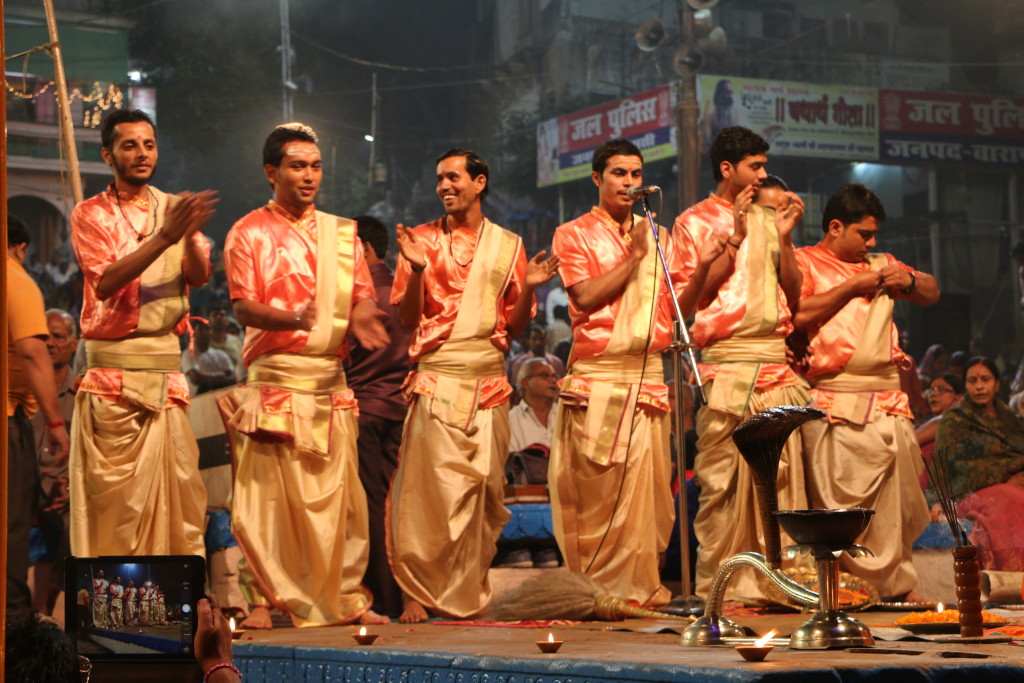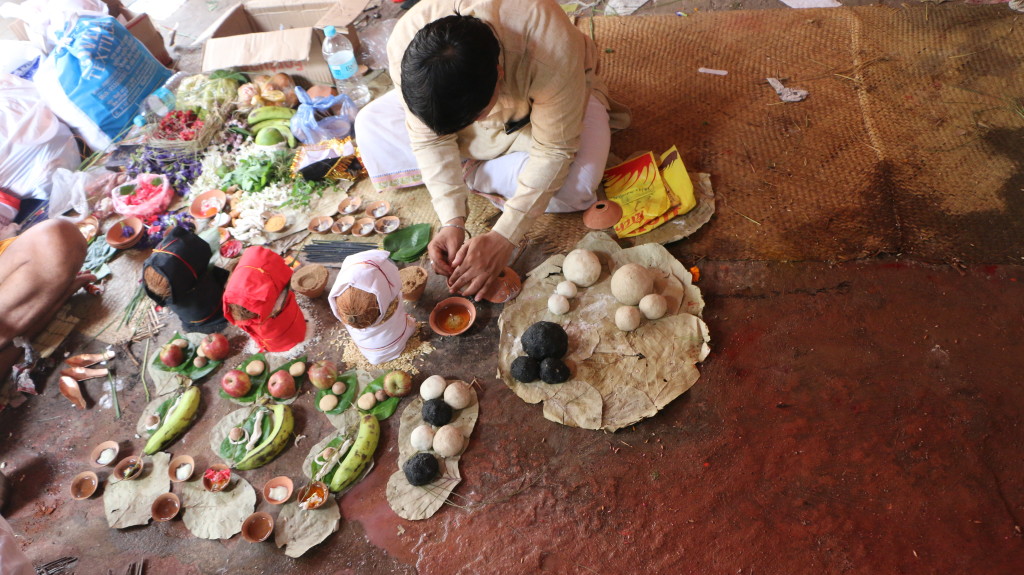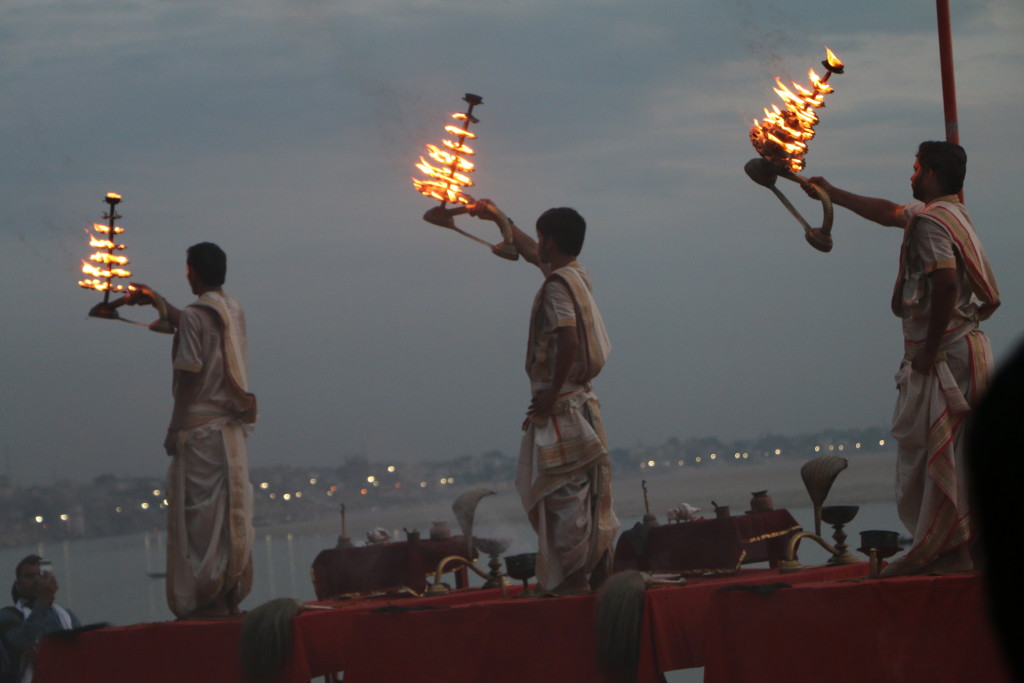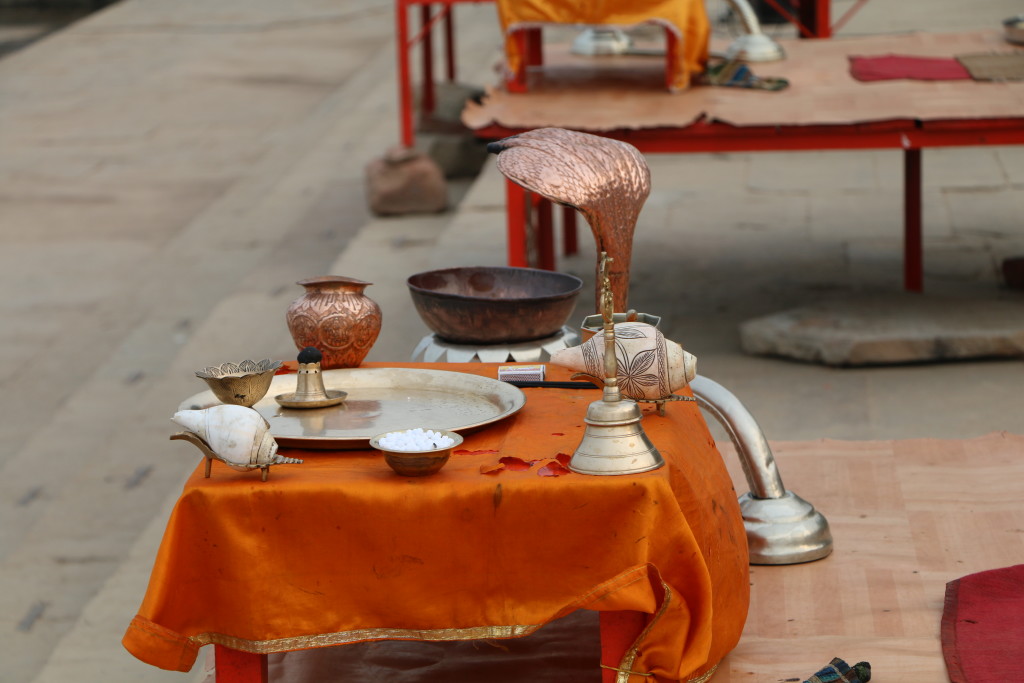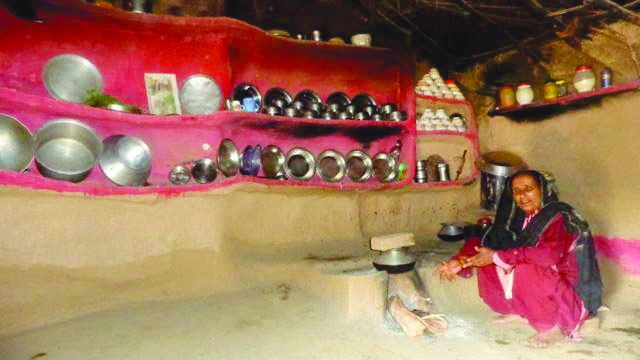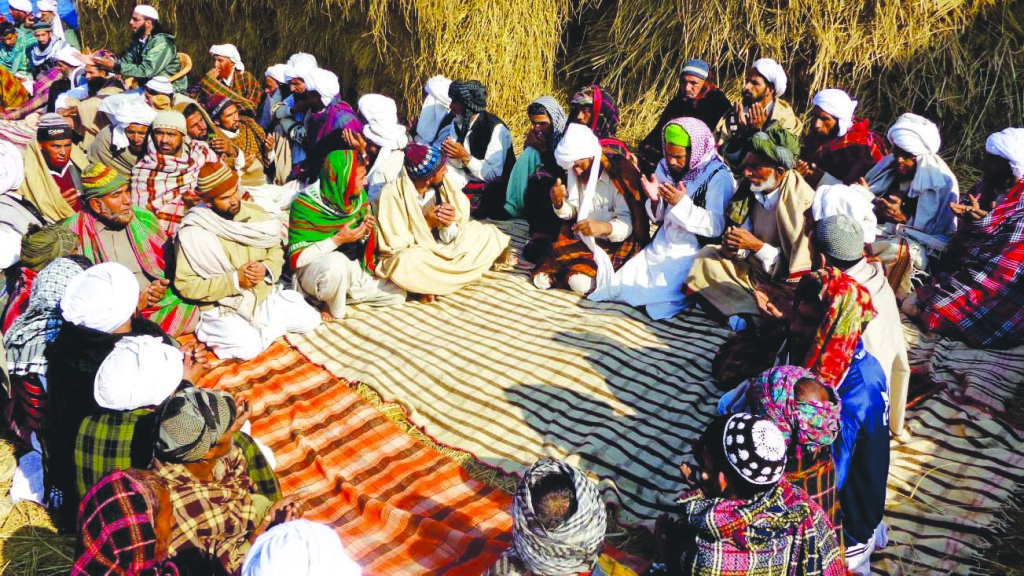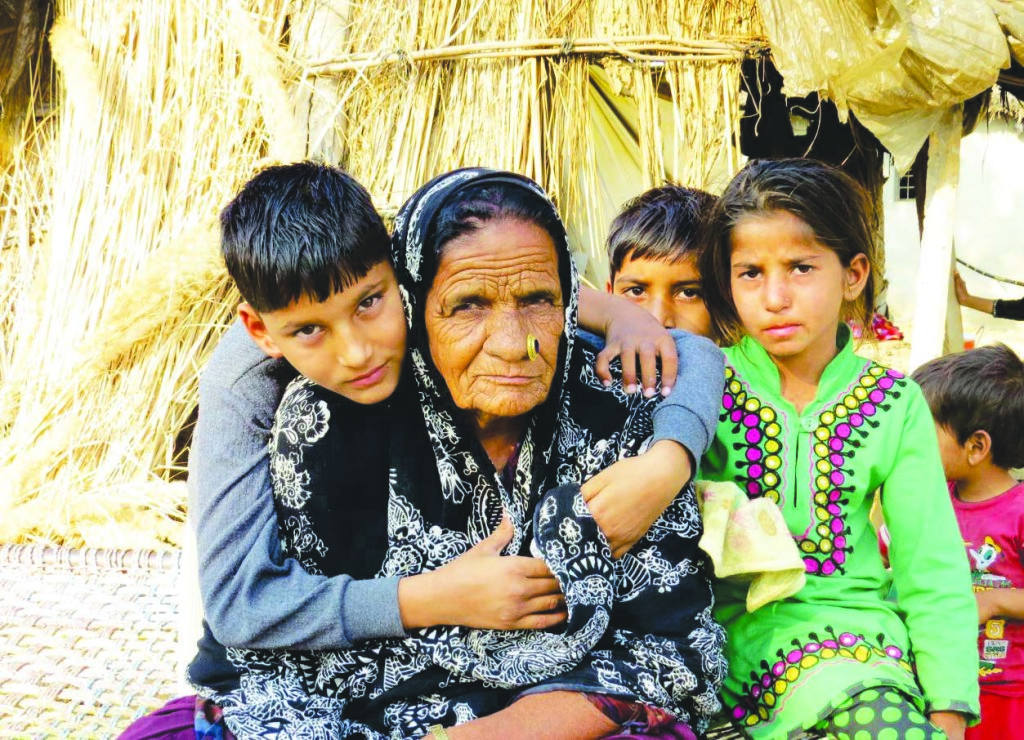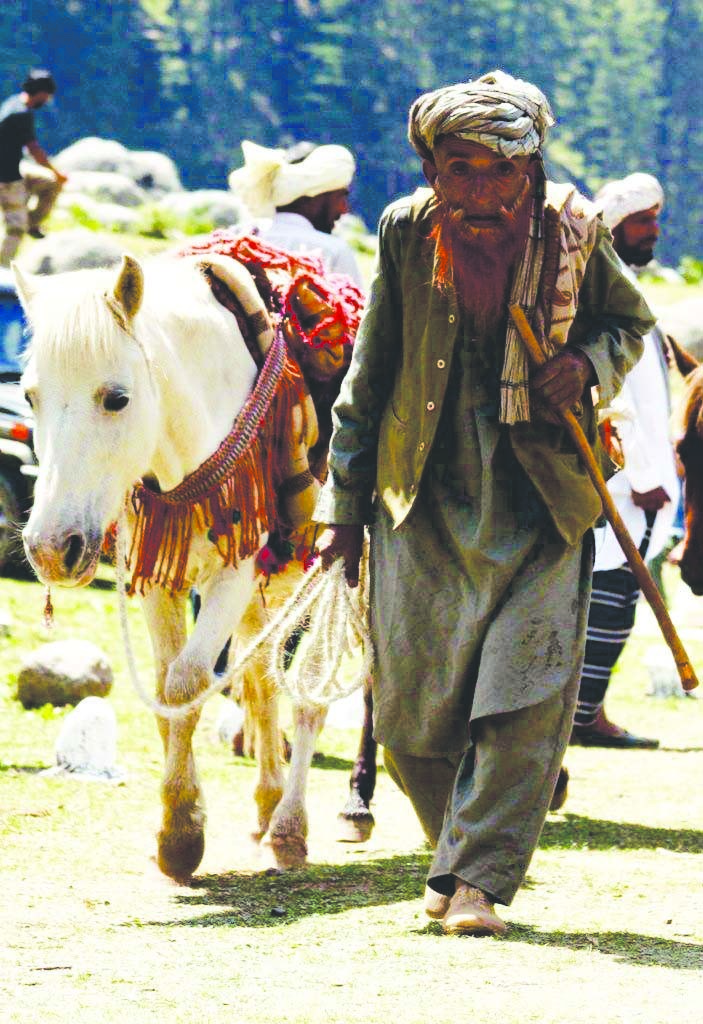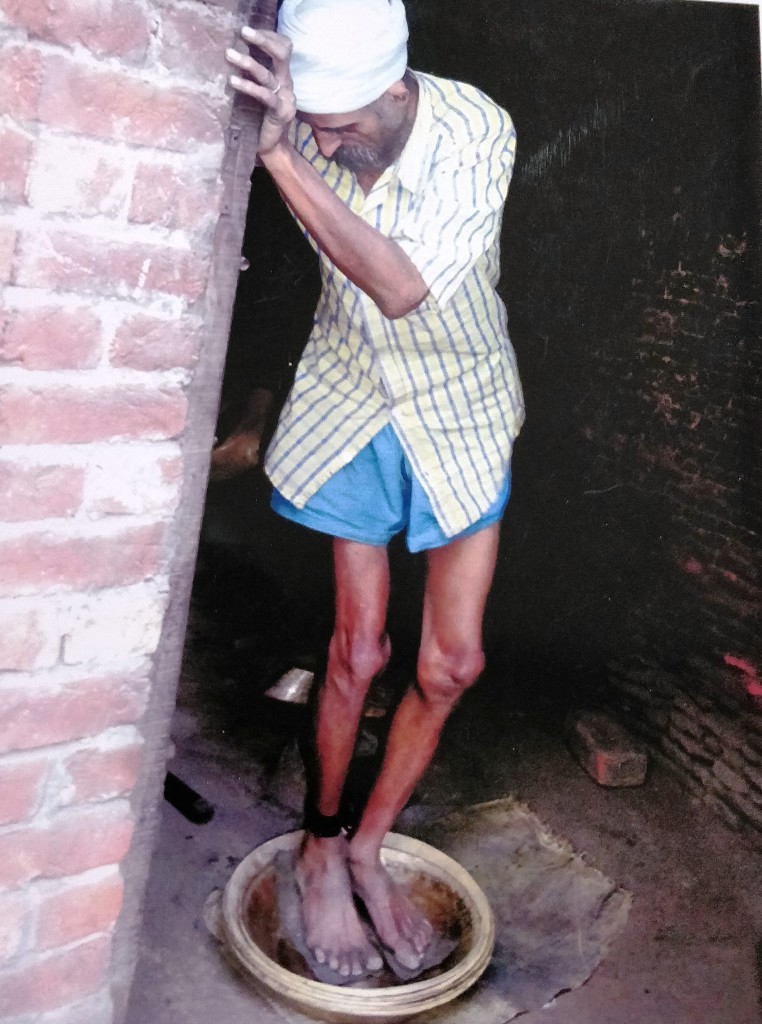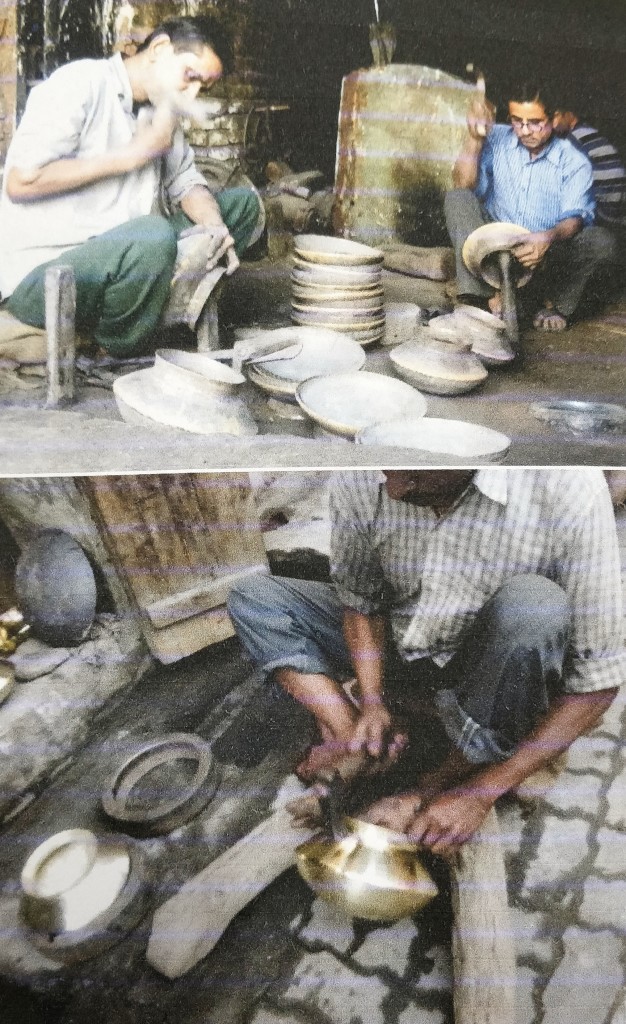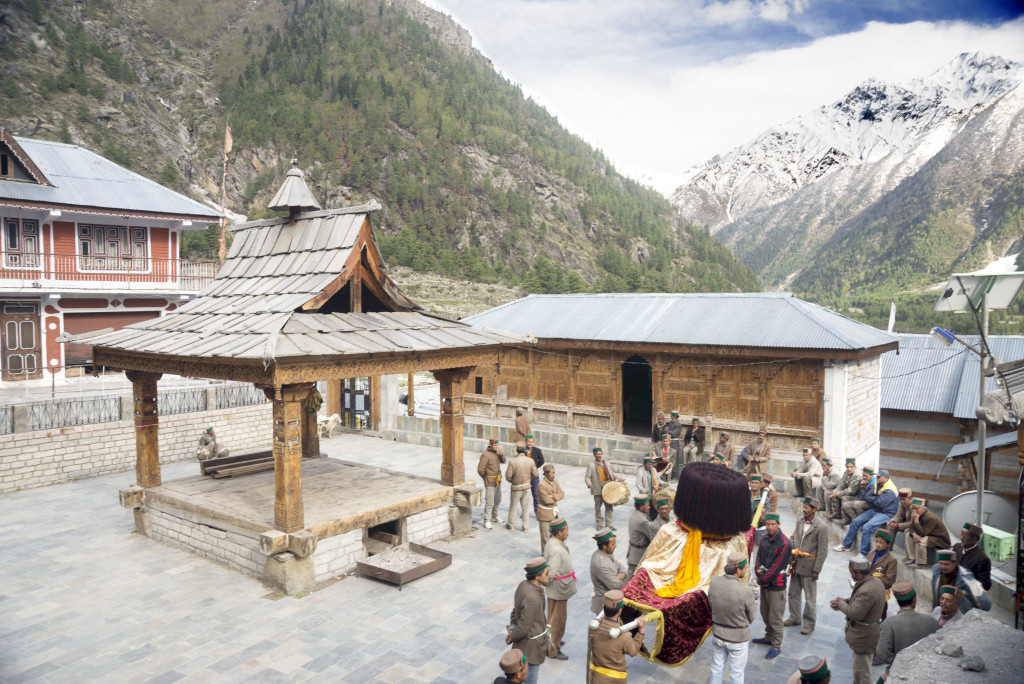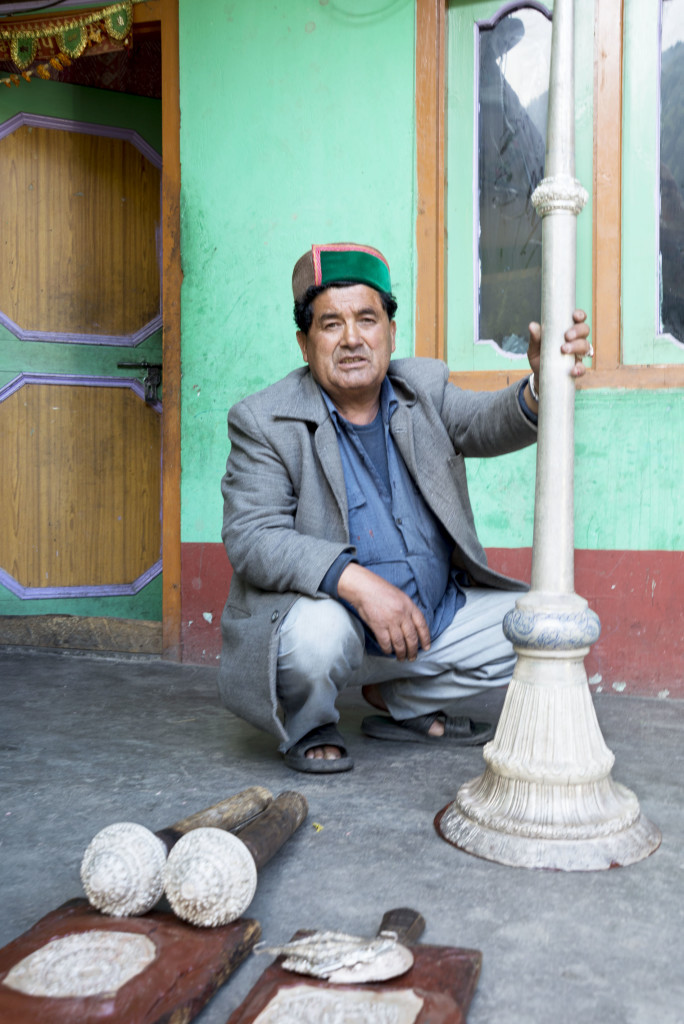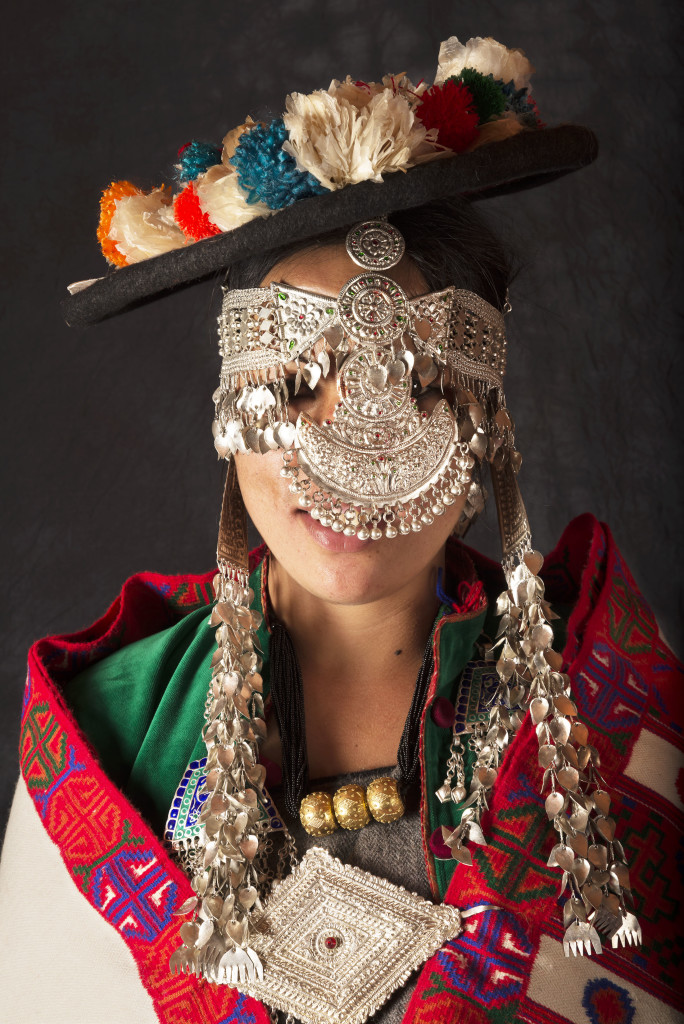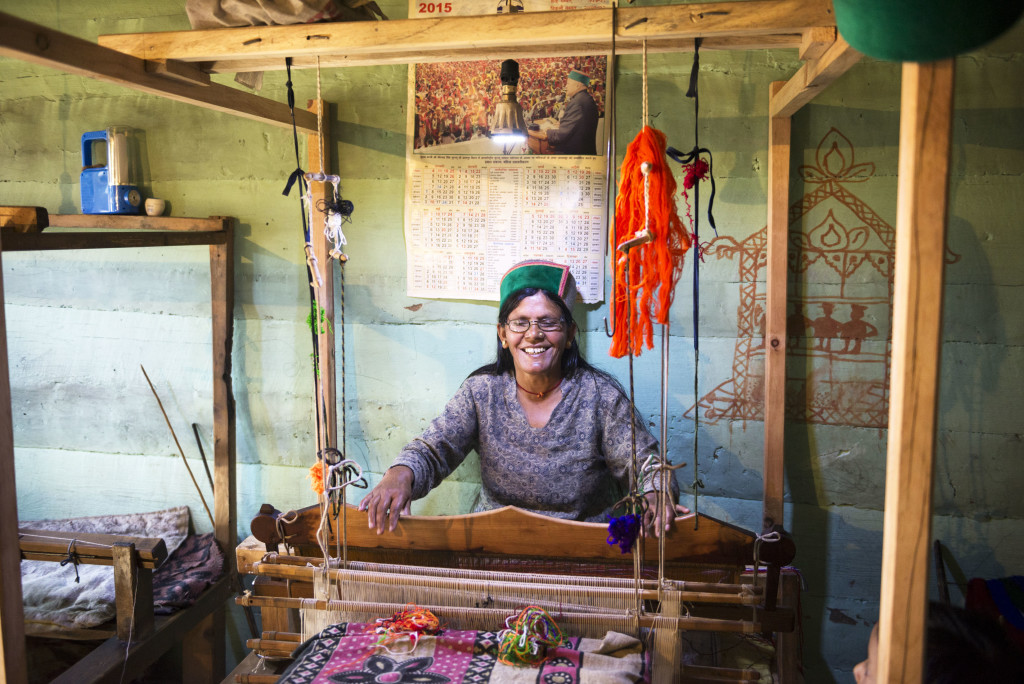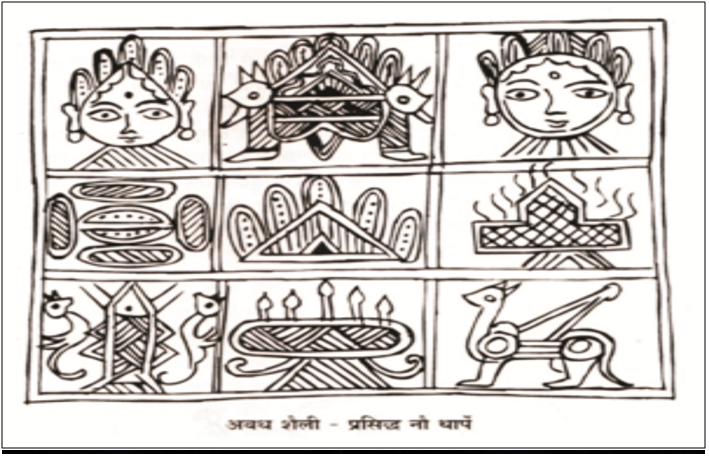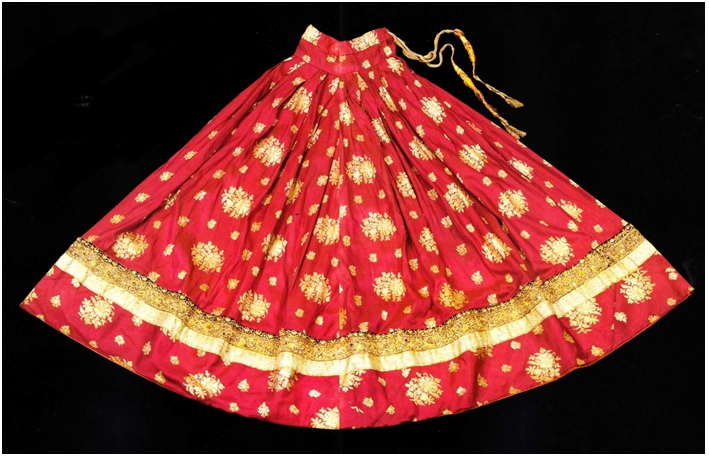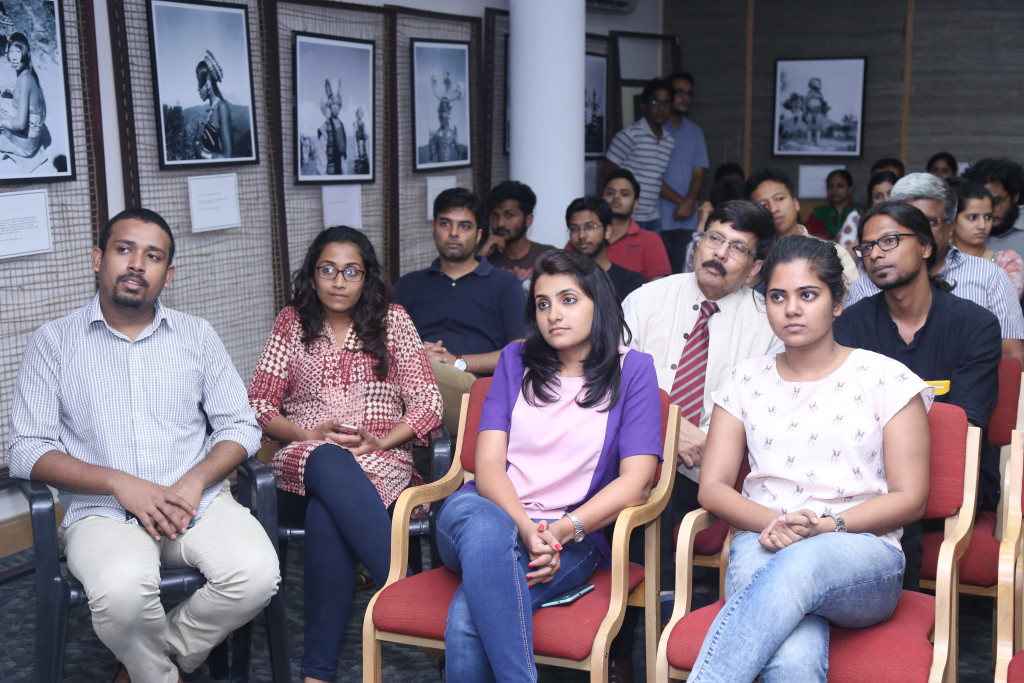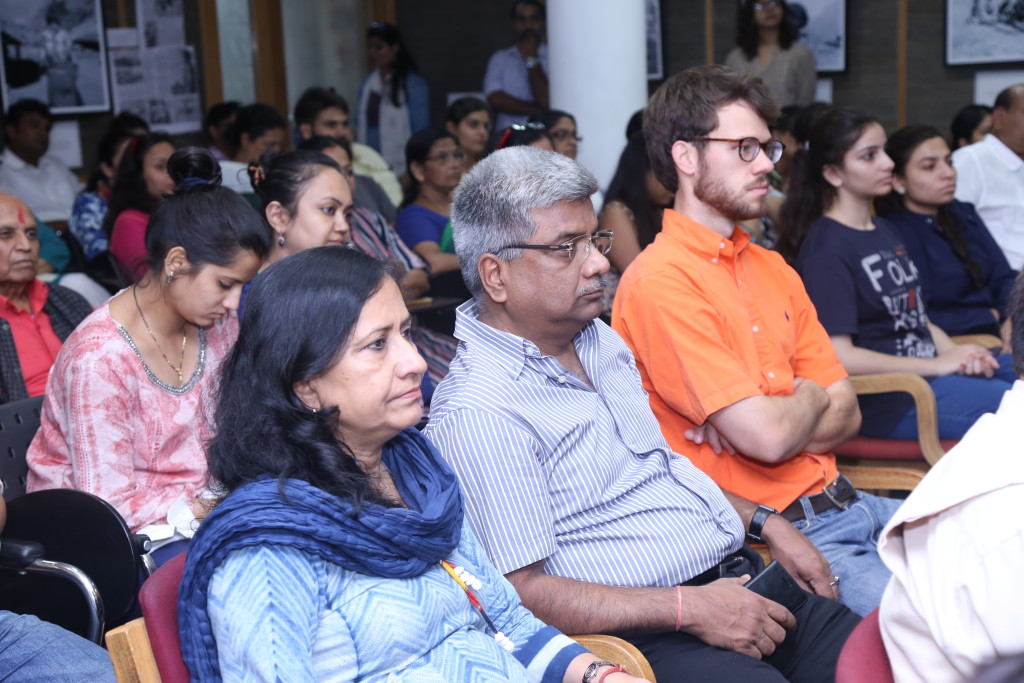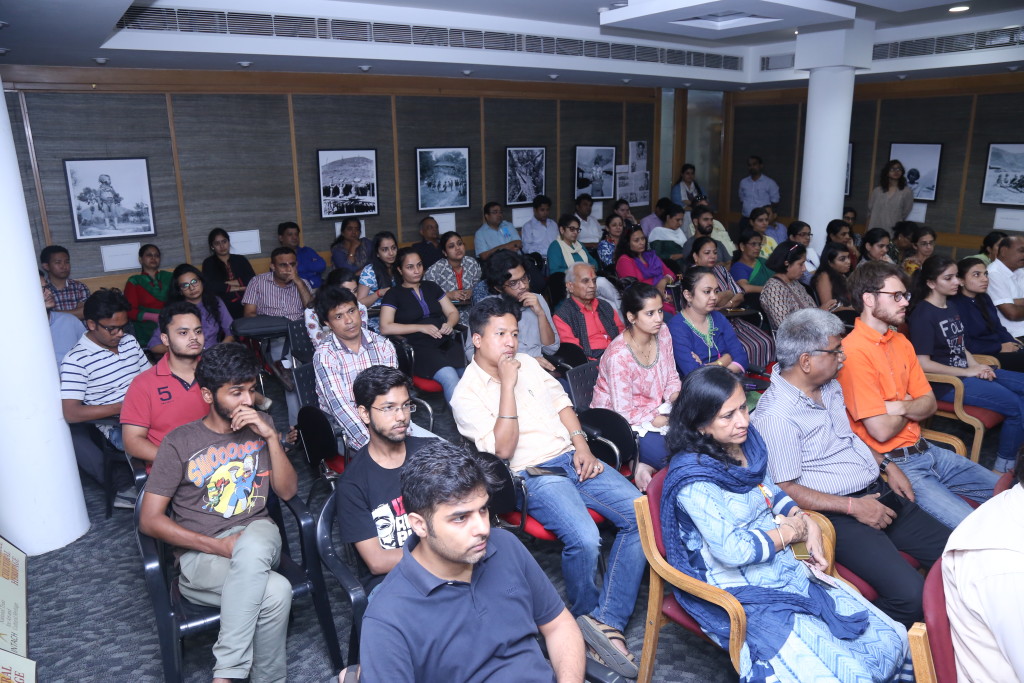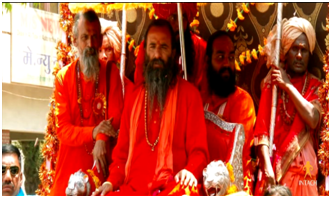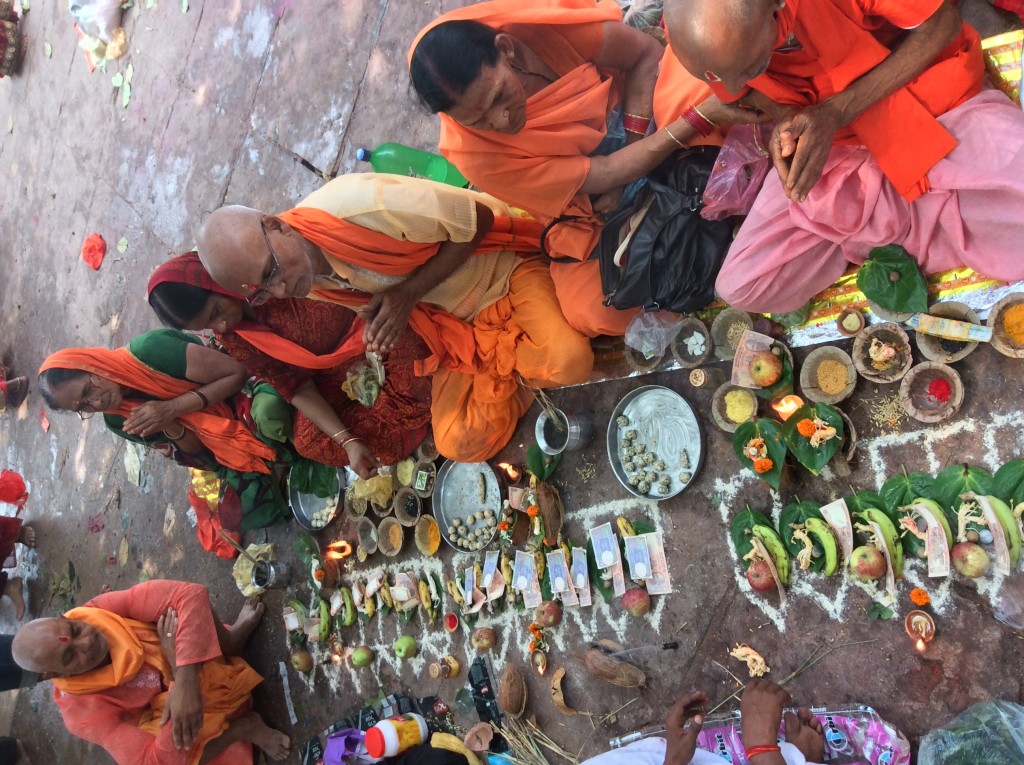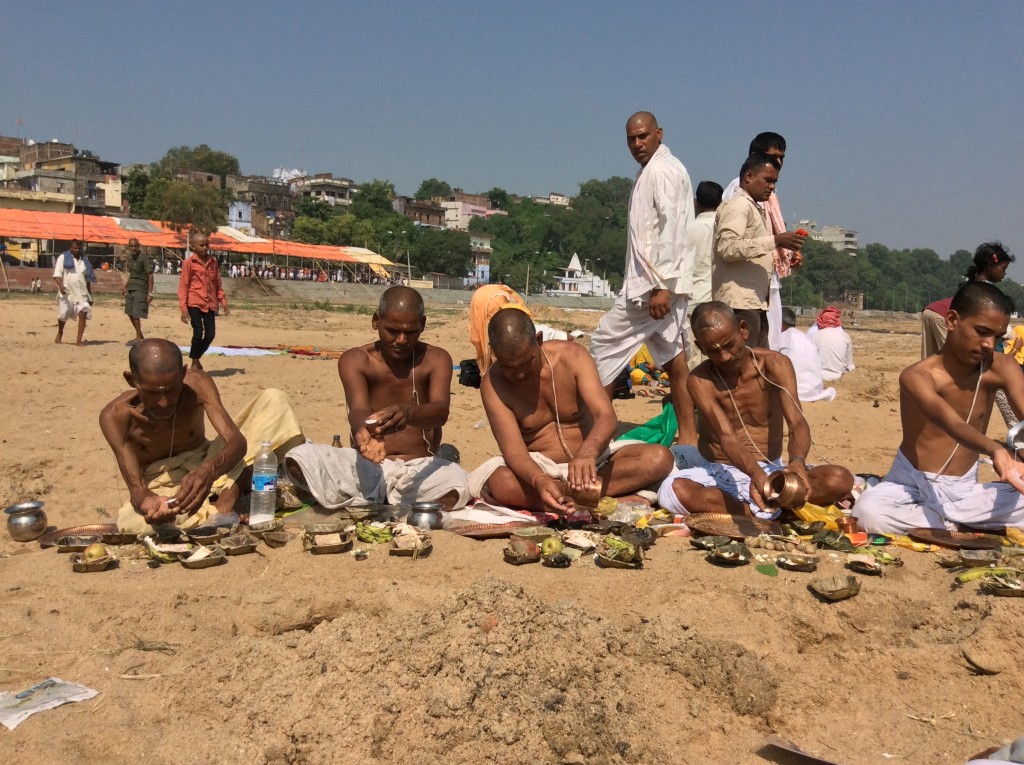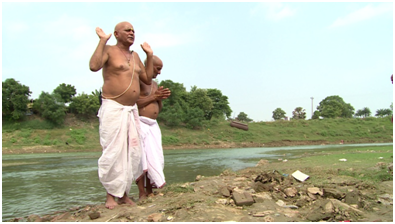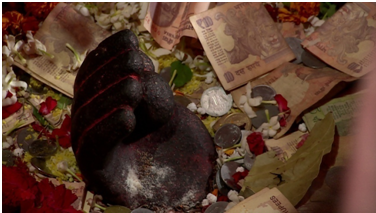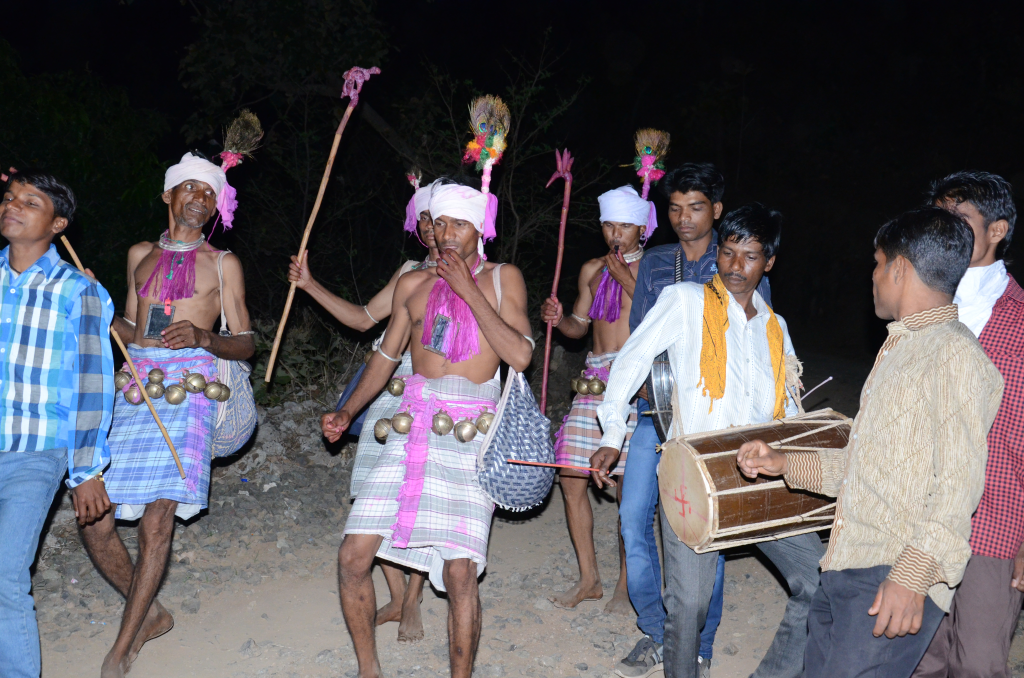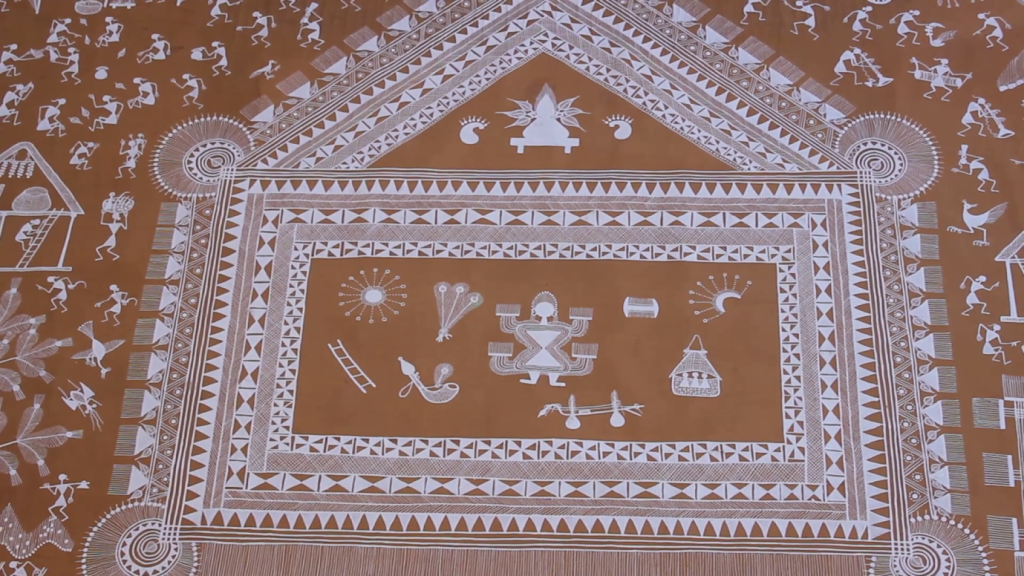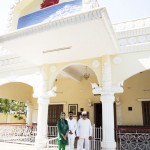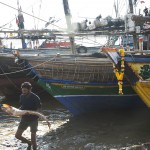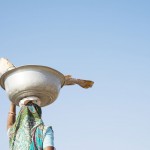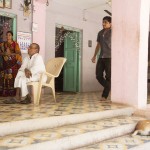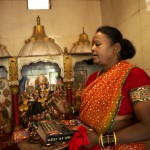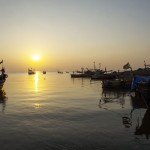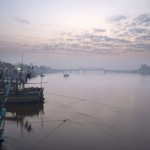Foods of India, Sacred and the Ordinary
Cuisines Other Elements of Intangible Cultural Heritage Research and Documentation of ICH Elements Uncategorized
The Intangible Cultural Heritage (ICH) Division is actively engaged in documenting India’s diverse food culture through a project titled “Foods of India: Sacred and the Ordinary.” This project aims to explore selected ingredients, highlighting their cultural, ritualistic, and culinary significance. It examines how each ingredient is contextualized within sacred temple offerings, ritualistic traditions, and exclusive regional cuisines, with folklore and historical perspectives integrated into the narrative.

A key focus of the project is to trace the journey of each ingredient from its raw form to a delicacy, documenting harvesting techniques, associated rituals, worship practices, and traditional recipes. Currently, the project is investigating the cultural, ritual, and folkloric significance of twelve food ingredients across ten states: West Bengal, Assam, Manipur, Meghalaya, Tamil Nadu, Kerala, Karnataka, Gujarat, Madhya Pradesh, and Uttar Pradesh.
Collaborating with temple priests, chefs, anthropologists, historians, and homemakers, the project seeks to understand the intricate connection between food, culture, and tradition.
Case Studies and Food Categories
To ensure a comprehensive study, the project has selected ingredients across a range of edible genres:
- Cereal-Millet: Rice
- Aquatic Flora: Lotus
- Nuts and Oil Seeds: Poppy and Sesame
- Seed and Fruit: Coconut and Mahua
- Animal-Derived Food: Fish and Chicken
- Dairy Product: Milk
- Insect-Derived Food: Honey
- Herbs: Betel leaf and Betel Leaf
- Lentil: Moong

These ingredients were chosen not only for their culinary and ritual significance but also for their widespread availability across India. This wide availability allows for the documentation of regional variations and oral traditions, enriching the study with a comparative outlook. The selection also ensures the inclusion of both vegetarian and non-vegetarian categories, with each ingredient featuring prominently in both sacred and everyday cuisines.
Through meticulous research and documentation, the Foods of India: Sacred and the Ordinary project seeks to shed light on the profound cultural importance of food across India’s diverse regions. By exploring the deep-rooted connections between food and heritage, this initiative aims to foster a greater understanding and appreciation of India’s rich culinary legacy.

Dhaulpur Cultural Documentation
Research and Documentation of ICH Elements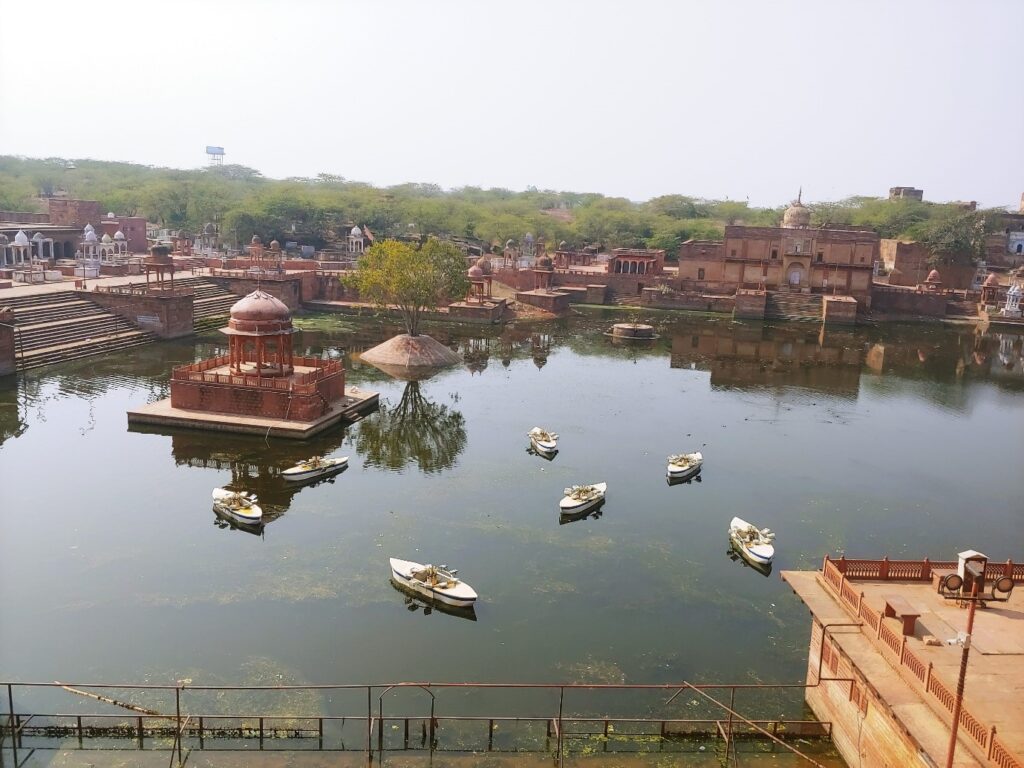
The documentation explored several prominent landmarks across Dhaulpur, including Jubilee Hall, Nihal Tower, and the Mughal Garden. The annual Sharad Mahotsav, which draws thousands of visitors each year, was also documented in detail. As part of the documentation, Shri Daljeet Singh shared the rich history of his forefathers’ establishment of a mining unit in Sarmathura, a tehsil of Dhaulpur, and the creation of a narrow-gauge railway for transporting the renowned Dhaulpur stone.
Temples such as Ram Mandir and Hanuman Mandir in Chawni, along with historical water bodies like baolis, were captured to add depth to the region’s cultural history. Significant events, such as Mahadeepdaan at Machkund and special prayer ceremonies, were recorded to provide further insight into local traditions.
The documentation also highlighted the efforts of the Krishna Circuit campaign team, which is working to include Ranchordh Nagari—an enchanting site in Dhaulpur—in the Krishna Circuit. Given Dhaulpur’s historical ties to Braj, the documentation examined the linguistic and cultural influences of Braj culture on the region.
The chhatris of Dhaulpur, known for their architectural grandeur and sacred significance, were also studied. Additionally, City Jubilee Hall was visited for secondary research purposes, enriching the historical narrative.
The team met with key resource persons during the fieldwork, including Shri Sanjay Sharma, CEO of the Manjari Foundation; Dr. Arvind Sharma, former Block District Education Officer; and Shri Nitin Aggarwal, Chairman of the Shri Ranchordh Dham Vikas Samiti. These interactions provided invaluable insights into Dhaulpur’s cultural and historical legacy, further enhancing the documentation.

This comprehensive effort captures the essence of Dhaulpur’s vibrant cultural heritage, contributing to its preservation and promotion for future generations.

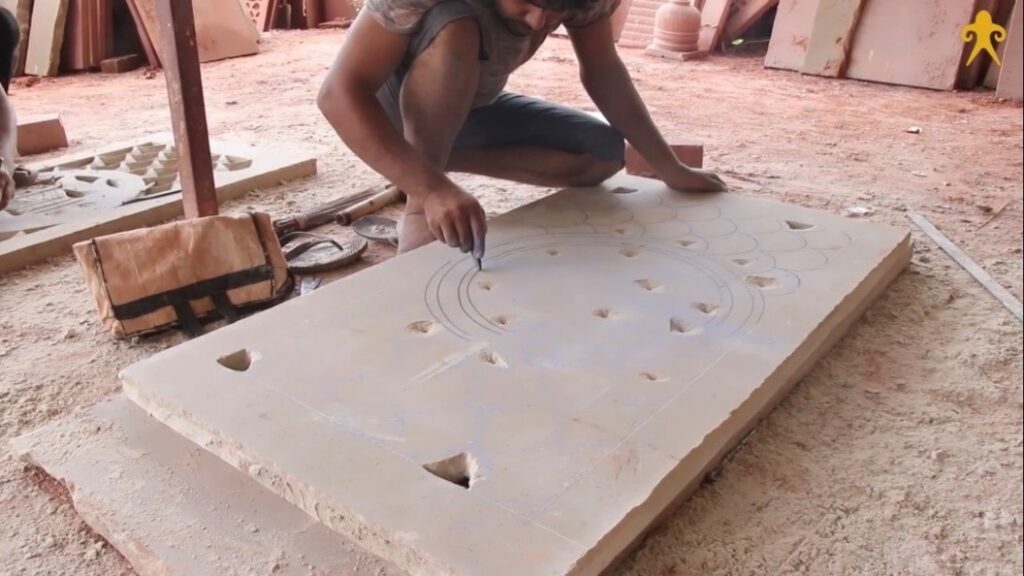
The Documentation work can be accessed on YouTube by visiting following link https://youtu.be/vBwUfOF6Jc0?si=b_BUPqM-LQny_NT_
The Intangible Heritage of Lucknow
Other Elements of Intangible Cultural Heritage Projects Research and Documentation of ICH ElementsIn 2017, the INTACH Lucknow Chapter conducted a comprehensive study on the intangible heritage of Lucknow. The study explored various aspects, including costumes, cuisines, rituals, traditions, local festivals, dance, music, arts and crafts, vanishing skills, and the social fabric and communities of Lucknow.
Awadh has always been one of the wealthiest regions in India, both in terms of wealth and culture. It was the cradle of Indian civilization, the target of numerous invasions, and a melting pot of various regions and peoples. Awadh boasts a fascinating history. Around 800 B.C.E., the Aryans migrated to the Gangetic plains in search of fertile land. By the late Vedic period, mahajanapadas began to form, with Ayodhya serving as the capital of the Kosala mahajanapada. The great Indian epics, the Ramayana and the Mahabharata originated in this region.
In 1580, during Emperor Akbar’s reign, Ayodhya was combined with its neighbouring cities and became one of the twelve subas (provinces). It became known as Awadh. The title of Nawab immediately comes to mind when one thinks of Awadh. The first individual to receive this honorific title was Sadat Khan, also known as ‘Burhan-ul-Mulk,’ the Subedar of the region. After him, the title of ‘Nawab’ was passed down hereditarily rather than being bestowed by the Mughal rulers.
Lucknow became the capital when Asaf-ud-Daula, the fourth nawab, moved the capital from Faizabad to Lucknow. This period was marked by opulence and a unique cultural synthesis known as ‘dhoop-chhaiyan.’ During this time, art forms like Kathak, thumri, khayal, dadra, ghazals, and sher-o-shairi emerged. Hinduism and Islam beautifully converged, with Hindus adopting elements of Islam (for example, a Muslim crescent adorns the top of a Hanuman temple in Aliganj) and Muslims celebrating Hindu festivals (for instance, Orthodox Muslim women celebrated Navratri). This mutual respect was referred to as the ‘Ganga-Jamuna tehzeeb.’
With the arrival of the British, the power of the Nawabs diminished, although they largely maintained their lavish lifestyles. Itr, or perfumed oil, was highly valued, and the palaces were scented with it. It was also during the Nawabi period that the popularity of paan peaked. The hukkah became refined upon reaching the Awadh court, and Wajid Ali Shah’s favourite hukkah was made of pink hand-blown glass.
The language underwent some changes. Awadhi, as it was spoken during the time of Tulsidas, was initially influenced by Farsi or Persian, which was later replaced by Urdu.
Unfortunately, many beautiful materials and skills from the Awadhi era have now been lost. Fine muslins and Tanda jamdanis have disappeared, while the Banaras brocade made with real zari has become very expensive, and kinkwab brocades are now hard to find. Skills that were once patronized, such as chatta-patti ka kaam and daraz ka kaam, have been lost over the centuries. Additionally, the popularity of crochet lace and smocking, which were introduced during the British period, has also lost popularity.
Some costumes have thankfully survived. Traditional Khadi continues to thrive, and silk-based textiles such as chiffon, georgette, and net are still widely used. While block printing is not as booming an industry as it once was, it remains popular in Lucknow. Indian designers are becoming aware of the risks faced by Lucknow’s textiles and have made efforts to incorporate chikankari, zardozi, and kamdani into their collections. During the Nawabi period, the Rumal held significant importance; it measured 110 cm × 110 cm and was made of muslin. In the summer, it was embroidered with chikan work, while in winter, Jamavar was used.
The city known for its ‘Nawabs and kebabs’ truly lives up to its name. In fact, the introduction of kebabs to India is attributed to the first Nawab of Awadh, Saadat Ali Khan. Culinary historians refer to the period during Nawab Asad ud Daula’s reign as the “Renaissance of cuisine.” It was during this time that dishes such as parind puri, patili kebab, moti pulao, and arvi ka salan were created. The Nawab was reportedly so fond of kebabs that he employed specialized rakabdars to invent a new dish every day.
In comparison to Mughal cuisine, Laknawi cuisine is milder and features smoother textures. The famous galawati kebab is believed to have originated because the Nawab, being a couch potato, had lost his dentures by that time. Consequently, a kebab was created with a paste-like consistency. The Tunde Kebab is named after its one-armed creator, referred to as ‘Tunde.’ Hajid Murad Ali perfected this recipe, which was subsequently named Tunde ke kebab in his honor. His son opened a shop at the old chowk in Lucknow in 1905 called Tunde Kebabi, which has been selling some of the best kebabs for generations, including the Galawati-inspired Kakori kebab. The INTACH Gwalior Chapter has successfully documented many Awadhi recipes and compiled a list of restaurants in Lucknow along with their specialties in its study.
Since the first Nawab of Awadh was a Shia, the Shia Nawabs of Lucknow observed Muharram with great splendour, organizing grand processions through the streets and setting up sabils to offer sherbet and drinking water to passersby. Even today, Muharram holds great significance in the city. The grand Shahi Zari procession starts from Bara Imambara on the 1st of Muharram. The silver staffs and Alams used in the procession have been in use since the time of the Nawabs. Majlises and Jiloos are held, and the ‘Aag ka Matam’ takes place in the compounds of Bada Imambara and Shah Najaf Imambara, witnessed by thousands of mourners and non-Muslim spectators. During Muharram, Lucknow is filled with drenched in a sea of grief but it also fosters a sense of community and belonging. Other festivals and fairs include Bada Mangal (a festival dedicated to Lord Hanuman), Ganga Snan Mela, Chandrika Devi ka Mela, Aathon ka Mela, Buddeshwar ka Mela, and Uttarayni Mela.
Lucknow is also home to unique traditions such as dastangoi, a form of storytelling, Ram Leelas, Qawwalis, bird fights, cock fights, patang bazi (kite flying), bait bazi (a poetry game), and traditional body tattooing known as Godna.
The last part of the project explores social fabric and communities of Lucknow. The Dhobi community includes both Hindu Dhobis, who identify as Rajak, and Muslim Dhobis, who belong to the Sheikh Muslim order. While many still practice their traditional occupation of washing clothes, others have moved into sectors such as private and government jobs, wage labor, agriculture, and white-collar employment. Other communities include the Kalwar, traditionally involved in the production and sale of country liquor; the Bhar, followers of the Shaiva panth; the Bhumar, traditionally landowners and agriculturists; the Chamar, historically leather-workers; and the Dhuniya, a caste of cotton carders. These are just a few examples of the diverse communities that reside in the city of Lucknow.
Documenting the Intangible Heritage of the Saura Tribe, Odisha
Cultural Mapping Projects Tribes and CommunitiesIn 2018, the Tribal Fund for Documentation and Conservation conducted a study on the intangible cultural heritage of the Saura tribe, supported by the Intangible Cultural Heritage Division of INTACH’s Delhi Chapter.
The Saura (or Saora) tribe is one of India’s ancient tribes. According to legend, Saveri, a devotee of Lord Ram mentioned in the Ramayana, belonged to this tribe. While the Saura are primarily concentrated in Odisha, particularly in the Gunupur division of Rayagada and Parlakhemundi in Gajapati, they are also found in Andhra Pradesh, Jharkhand, Madhya Pradesh, and Assam. The Indian government classifies the Saura tribe into 25 sub-divisions based on factors such as occupation, food habits, dress patterns, and social customs. However, the tribe itself recognizes only two main divisions: the Lanjia Saora, who reside in the hills and maintain their traditional customs, and the Sudha Saora, who live in the plains and have integrated into mainstream society.
The traditional language of the Saura tribe is Sora, a Munda language that belongs to the Austroasiatic family. What makes Sora unique is that it is one of the few tribal languages with its own script, developed by S.P. Mangei Gomango in 1966 and known as ‘Sorang Sompeng.’ The project undertaken observed variations in dialects and word usage among the Saura people, although the locals were not fully aware of the specifics of these dialects. Through increased interaction with the outside world, many Saura individuals have also become fluent in Odia and Telugu, and those with formal education can speak English as well.
Traditional Saora villages consist of thatched houses made of mud and stone, arranged in rows facing each other. These small hamlets, containing 15-20 houses, are called sahi and each sahi belongs to a specific birinda, or lineage, in Saora society. Inside the houses, tutelary deities are represented by small clay pots tied with ropes and hung on the walls, which are adorned with iditals, or sacred murals.
Iditals are painted icons on the interior walls of houses, traditionally created to appease gods and ward off evil spirits. These murals depict scenes of village life, including daily activities, animals, hills, forests, and community events such as sowing ceremonies, harvesting, music, and dance. However, with many Saora people converting to Christianity and Hinduism, the practice of painting iditals on their home walls is gradually disappearing. Despite this decline, the art form has found a new life as a source of livelihood, with iditals now being created on canvas, cloth, and paper, and marketed with the support of various agencies.
The Saora people have diverse sources for their food and nutritional needs. They grow millets, pulses, and oilseeds on highlands as mixed crops. They consume liquor made from ragi (finger millet), mahua (Madhuca indica), and salpa (Caryota urens). Rice and sitri khudu (millet soup) form their staple diet. A wide variety of vegetables, such as gourd, eggplant, pumpkin, and green leafy vegetables, are part of their diet. The arasal drink, made from the sap of the fishtail palm, acts as a vitamin supplement when taken in the early morning and becomes a mildly alcoholic drink by the end of the day.
In terms of livelihood, traditionally the Saoras are agriculturists and practice shifting cultivation, which they call bagado chaas. However, due to ecological imbalance and a growing population, many have shifted to settled cultivation. The women are primarily responsible for agricultural activities and generating income for their families. The khuradi, or axe, is frequently seen in the hands of these women engaged in agriculture. Men are more involved in hunting and gathering minor forest produce. Nowadays, the people of the tribe also practice paddy cultivation and cash cropping. Nonetheless, they still use the barter system of trade within their community. For their shopping needs, they visit the haat, or local weekly market. The commercial sale of their agricultural goods is never handled directly by them; middlemen or panosare involved in this process.
Clothing-wise, traditionally the Saora people wore very minimal clothing; the men only wore a loincloth called kordiol, while the women used a white cloth called gatunga to wrap around the lower part of the body. They mostly did not wear clothing on the upper part of their bodies, but occasionally donned a piece of cloth called sarunga. Those who still follow the traditional style are called the Lanjia Saora, while those who have adopted a more modern style are referred to as Sudha Saora. The men of this sub-division prefer wearing trousers and shirts, and the women prefer wearing salwar-kameez. The researchers of the project were only able to find individuals wearing traditional garments in the interior villages of the Gunupur division. Available literature indicates that the Dom weavers traditionally made the garments for the Saoras, but they are now difficult to trace and contact. The art of tattooing, called Tantangbo, was earlier performed on women as soon as they reached puberty. This was done to make them look unattractive and ensure they were not captured by the region’s Rajas. The tattoo included two big dots on the cheeks and two on the forehead, with a line running down the middle. However, Saora women no longer believe in this practice. A similar trend is observed in jewelry; earlier, women would adorn themselves with multiple rings in their nostrils and have many ear piercings. Traditional jewelry included pagoda (a thick ring worn on the neck), jatang (a silver chain), piripiriya (silver earrings), and many others.
The Sauras have no supreme deity but worship many different deities on various occasions, such as the idols of Jodisum, Lurnisum, and Manduasum. In their traditional religion, the role of the shaman is essential. The male shaman is called kudun, while the female shaman is referred to as kudun boi. An interesting burial ritual called the guar ceremony is observed by the Sauras, during which eating, drinking, dancing, and merry-making take place, and the kudun performs key rituals and sacrifices a buffalo. In recent years, however, many have converted to either Christianity or Hinduism. The Saura tribe, known for its rich culture and unique traditions, is working to adapt to modern changes while keeping its distinct identity and way of life.
Endangered Traditional Cuisines of Jaisalmer Region
Cuisines Research and Documentation of ICH ElementsIn 2018, the INTACH Gwalior Chapter initiated a project to document and list the traditional cuisines of the Thar Desert. The culinary traditions of this region are influenced by various dry fruits, such as chilgoza, almonds, and raisins, as well as spices like saffron. The predominantly non-vegetarian Rajputs have impacted dishes like like laal maas, safed maas, khad khargos, and jungli maas. Foods that can be stored for several days and eaten without reheating are preferred. Additionally, the scarcity of water and fresh green vegetables has influenced cooking practices.
The primary survey of the project revealed that the cuisine of the Jaisalmer region is categorized based on the different castes within the community. Additionally, these castes are further divided into various classes. For instance, the Hindu community is differentiated into various classes that use the same local ingredients for cooking, but their recipes differ. A major common ingredient across all communities and classes is milk and its by-products, along with bajra. Wheat and rice are used infrequently, while common lentils include Chana dal and Moong dal. Usage of Urad dal, Arhar dal, and Rajmabeing almost negligible. The survey also noted a significant change in food patterns in the region over the past 25 years, attributed to tourism development, which has ironically influenced lifestyles and eating habits. Various methodologies were employed in the survey, including primary data collection from locals, secondary data collection from existing literature, and the use of interview schedules and questionnaires.
One of the main reasons for conducting the survey was the absence of chefs and elderly women familiar with traditional recipes. The survey identified a division between recipes: those that are Lost and those that are Living. The lost recipes are no longer practiced in any Jaisalmer kitchen; for example, since the Royal Dussehra ritual is no longer celebrated, the cuisine associated with it is not prepared. In contrast, living recipes are still present in the kitchens of Jaisalmer. While they may have been modified, they continue to be practiced. INTACH has successfully documented 60 vegetarian recipes from the Jaisalmer region that can still be enjoyed during special festive occasions.
A few recipes documented by INTACH Gwalior Chapter are listed below:
1.Wheat Flour Seera
Preparation Time: 5 mins
Cooking Time: 15 mins
No. of Portions: 4
Ingredients:
Wheat Flour – 250 Gms
Ghee – 125 Gms
Sugar – 150 Gms
Luke Warm Water – 750 Gms
Method: Place the saucepan on the stove and pour ghee into it. Once it crackles, add the whole wheat flour and stir well. Continue stirring until it roasts and turns a reddish-brown colour. Next, pour in lukewarm water while continuously mixing. Add sugar to the batter and stir continuously to prevent lumps. Once everything is well mixed, garnish with dry fruits and serve hot.
Significance: This desert is usually cooked as a sign of warm hospitality to the guests and is a convenient recipe since all the ingredients are easily available at home.
2.Bisnan
Preparation time: 15 mins
Cooking time: 1 hour
No. of portions: 5
Ingredients:
Thick Bajra flour – 250 Gms
Buttermilk – 100 Gms
White Butter – 200 Gms
Method: Take a saucepan and put it on the gas stove. Heat fresh white butter in it until the butter turns into ghee. Then, slowly keep adding small portions of bajra while stirring continuously. Similarly, keep adding buttermilk and stir continuously. Let it cook on medium flame until the batter dries and the bajra flour is properly cooked. Now, switch off the flame and transfer it into a bowl.
Significance: This is a healthy dish which is prepared in winter season and is served with desi sugar.
The survey conducted by the INTACH Gwalior Chapter revealed some intriguing findings. Most recipes do not include mustard seeds, and spices, except for asafoetida and cumin, are typically used in their raw form. Ghee is preferred over refined oil because it is easily accessible, as many households commonly keep cows. Garlic, onion, and ginger are used less frequently, while tomatoes and coriander are added sparingly due to the dry climate. Locals have a fondness for desserts, often enjoying them with their main dishes rather than after the meal.
Following their survey, the INTACH Gwalior Chapter has made several recommendations. They suggest continuing the project to document the remaining recipes (both vegetarian and non-vegetarian) that have yet to be recorded. Eventually, they plan to compile a book of these recipes for the younger generation to appreciate the culinary heritage of Jaisalmer.
Study of the Intangible Heritage of the Apatani Tribe, Arunachal Pradesh
Cultural Mapping Other Elements of Intangible Cultural Heritage Tribes and CommunitiesThe project on the Intangible Cultural Heritage (ICH) of the Apatani Tribe aimed to document specific aspects of ICH in the Apatani tribe in Arunachal Pradesh, following the guidelines of UNESCO’s 2003 Convention on ICH. Conducted between 2015 and 2017, the project was led by Dr. Bina Gandhi Deori, Assistant Professor in the Department of Ancient History, Culture, and Archaeology at Visva Bharati, Santiniketan, and was submitted to the INTACH Delhi Chapter.
Arunachal Pradesh, the north-eastern most state of India, remains largely unexplored due to its remote location, challenging mountainous terrain, and difficult-to-access topography. Additionally, globalization has negatively impacted the region’s indigenous cultures. The Apatani tribe, for example, lacks a written script, so their traditions are passed down orally, and much of their material culture, made primarily of bamboo and wood, is perishable. The project’s focus on Intangible Cultural Heritage (ICH) includes documenting the Apatanis’ oral traditions and expressions, performing arts, social practices, rituals, festive events, and traditional craftsmanship of the Apatanis in the Lower Subansiri district.
The project utilized both primary and secondary sources. Primary data was gathered through site visits, surveys, interviews, photographic documentation, museum visits, and scheduled observations, while secondary data was obtained from official records, published books, research papers, journals, and online references.
The tribe is commonly known as the Apatani, although they refer to themselves as Tanii. Colonial records mention them as ‘ApaTanang.’ In fact, they were one of the first tribes in Arunachal Pradesh to have contact with the British in the mid-20th century. Ethnographers Christoph von Haimendorf and Ursula Graham Bower, who studied them in the 1940s, were greatly impressed by their peaceful existence and well-organized social life.
According to the 2011 census, the Apatani population stands at 29,546, residing in 35 villages, seven of which are considered older than the others. Like other Tani tribes, they trace their lineage to the legendary ancestor Abo-Tani. Traditionally, they worship Danyi-Piilo, the Sun and the Moon. However, over the years, many Apatanis have converted to Christianity due to various factors.
The Apatanis possess a rich oral tradition, including forms like Miji-Migun and Busi-Ayu, which cover rites, rituals, historical narratives, and even texts for recreation. Unfortunately, the Apatani language, Tanii Agun, is gradually disappearing from usage. In 2009, UNESCO classified it as a ‘definitely endangered’ language in its Atlas of the World’s Languages in Danger.
One of the reasons for the decline of the Apatani language is the rise of English-medium convent schools in Arunachal Pradesh, which promote communication in English while discouraging the use of indigenous languages. Hindi has also emerged as the lingua franca across the state.
Fortunately, many Apatanis are recognizing this issue and are encouraging the use of the Apatani language at home. NGOs like the Popi Sarmiñ Society are dedicated to preserving Apatani culture by publishing a bilingual quarterly journal, ‘Popiriscope,’ in both English and the Apatani language, focusing primarily on Apatani culture.
For the Apatanis, festivals serve as important social bonding events among families, clans, and villages. The major festivals they celebrate are Muruñ, Myoko, Dree and Yapung. The study highlights that, since their economy is largely based on agriculture and livestock breeding, the festivals are intended to ensure: (i) protection of crops from pests and a bountiful harvest, (ii) the health of their livestock, and (iii) prosperity and well-being of all clansmen. The shaman plays a key role in performing many festival rituals and acts as a healer. It is believed that the spirits communicate with the shaman through the medium of eggs and chicken liver. However, modernity, economic challenges, and the spread of Christianity have led to a steady decline in the shaman’s role.
Food and feasting are also key elements of Apatani festivals. Apatani cuisine is primarily plant-based, incorporating bamboo shoots and fermented soybeans, similar to much of the Northeast. Two notable dishes are Pikey Pila, a traditional spicy dish, and Tapyo, a locally made Apatani salt, which is believed to naturally help treat goitre.
Traditional dances such as Daminda and Pakhu Ittu are commonly performed during many of their festivals. The Apatanis also use various unique musical instruments, including the Elu, Tajor, and Gangu. The Apatanis have a highly developed indigenous farming system based on wet cultivation. Their integrated paddy-cum-fish farming method is well-known in other parts of Southeast Asia, including China, Japan, Indonesia, Vietnam, and Malaysia.
The study highlights the traditional medicinal practices of the Apatanis, noting that they utilize over 158 plant species. It emphasizes the need for prompt documentation and conservation of these traditional medicinal plants to enhance the potential of herbal medicine. The study also provides a list of various herbs, detailing their botanical names, local names, and uses.
Like many other indigenous communities, the Apatanis have a unique tattooing tradition that is now fading into obscurity. In the past, tattooing was more of a social obligation than a personal choice, serving as a marker of belonging to the Apatani tribe. Women traditionally sport a long line of tattoos from their forehead to the tip of their nose, along with five smaller straight lines on their chin known as Tüpè. Men typically have a small ‘T’-shaped tattoo on their chins. The ink used for these tattoos is made from a mixture of pig’s fat and soot from the fireplace. To enhance their beauty, women wear large cane plugs in their noses called Yapiñ Hulo and ear plugs known as Yaru Hukho.
Similar to the tattooing tradition, their textile traditions have also struggled to survive due to modern influences. The study highlights the importance of preserving their intangible culture amid the overwhelming effects of globalization and suggests measures that can be implemented to safeguard and revitalize Apatani culture.
Cultural Mapping of Daman
Cultural MappingCommissioned by the Government of Daman, Diu, and Dadra & Nagar Haveli, a project was initiated to document the Intangible Cultural Heritage of these Union Territories. The project focuses on capturing the knowledge, skills, and practices in which the local communities of the region are actively engaged.
Daman is a city and Union Territory in India, covering an area of 102 sq km. It is located on the west coast of the subcontinent, just south of Valsad. Surrounded on three sides by the state of Gujarat and bordered by the Arabian Sea (Gulf of Khambhat) on one side, Daman is situated between the Kolak River to the north and the Daman Ganga River, which divides the city into Nanidaman (northern part) and Motidaman (southern part). The area has a rich history and was an important location for overseas trade. The communities residing in this region include the Tandels, Patels, Portuguese, Halpatis, and Parsis. Due to its diverse and complex history, Daman has developed a unique blend of multiple cultures, each retaining its individual identity.
The history of Daman dates back to roughly the 8th and 13th centuries, when it was a stronghold of the Chowda Rajputs and later came under the control of Muslim rulers. In the late 16th century, the Portuguese seized the territory, becoming an important colony. Daman was incorporated into India on December 19, 1961, ending the colonial rule in the region.
The legacy of Portuguese influence is still visible in the architecture and cultural aspects of the area. The Indo-Portuguese dialect is still spoken by several members of the Portuguese/Christian community. Their traditional attire and cuisine have largely remained unchanged. Major festivals include Christmas, Good Friday, and Easter, and they also participate in the ‘mando’ dance.
The Tandels and Patels are considered the original inhabitants of Daman. The Tandels are primarily a fishing community residing in Nanidaman, while the Patels have traditionally been agriculturists and farmers. The cultural and social lives of these communities reflect their occupations. For instance, the Tandels worship ‘Samudryanarayan,’ their ocean deity, along with their boats as part of a daily ritual before going fishing. Their major festivals, including Nariyal Purnima and Dimla, occur during the monsoon season when fishing is prohibited due to breeding periods. Other deities worshipped by the Tandels include ‘Satyanarayan’ and their Kul Devtas. A unique tradition within this community is the practice of ‘Samuhik Lagna’ or community weddings, which remains prevalent in Daman.
In contrast, the Patels have rapidly urbanized, with many shifting away from agriculture to work in industries. However, their festivals and predominantly vegetarian cuisine still connect them to their heritage. They worship Hindu deities like Lakshmi Mata and Holi Mata, as well as crop-specific gods like Ravali, Mahhar Dev, and Kanhari. The Patels also celebrate Portuguese-influenced festivals such as New Year’s and Valentine’s Day. One of their distinctive cultural expressions is the ‘Ghor’ folk dance, performed during Diwali and Dussehra.
The Halpatis, another community in the region, are primarily cultivators or tribals, residing in Nayla Pardi Village. They are among the few communities that still practice the traditional craft of weaving straw mats. Their religious practices blend ascetic traditions with Hindu beliefs, and they have a spiritual leader known as “Bhuwa,” who holds indigenous knowledge and is believed to protect the community.
Though the Parsi community is marginal in this region, they have maintained their cultural identity, evident in their lifestyle, clothing, culinary habits, and religious practices.
The culture and heritage of Daman, along with its resident communities, are under threat due to rapid industrialization and modernization. These changes have significantly altered their traditional lifestyles and impacted the region’s ecology.
This documentation was published in 2014
The Intangible Heritage of the Kannaura Tribe of Himachal Pradesh
Cultural Mapping Other Elements of Intangible Cultural Heritage Traditional Knowledge Tribes and CommunitiesThe Tribal Fund for Documentation and Conservation launched a project in 2016 to document the intangible heritage of the Kannaura tribe in Himachal Pradesh and was submitted to the INTACH Delhi Chapter.
The Kannaura tribe resides in the northeastern district of Kinnaur in Himachal Pradesh, which shares its eastern border with Tibet. This district is often called the ‘land of the gods.’ The Kinner Kailash Mountain, believed to be the winter residence of Lord Shiva, is located here and holds sacred significance for the community. Due to their mountainous environment, the Kannaura people remained largely isolated for many years, and the terrain remains challenging to navigate. While infrastructural projects like the Nathpa-Jhakri Dam have been initiated to promote development, they have negatively impacted the locals by depleting natural resources. Until 1962, the Kannaura were largely dependent on Tibet for food, clothes, and other resources.
According to legend, the members of this community are direct descendants of the Pandavas from the Hindu epic Mahabharata. Unfortunately, there are few historical references to the community, as much of this material is believed to have been destroyed by the Gurkhas during their invasion of Bushahr between 1803 and 1815. The project conducted in Kannaur interacted with locals and revealed that in ancient times, the district was part of the princely state of Bushahr, ruled by the Guge Empire until the 11th century, after which it was taken over by the Thakurs. In the 14th century, the Rajas usurped control, and their reign continued until India gained independence in 1947. After independence, Kinnaur became part of the Chini tehsil in the Mahasu district, but it was designated as a separate district in 1960.
The Kinnauri language is part of the Tibetan-Burmese dialect group. During the 2016 project, seven local dialects were identified: Kinnauri, Sunnami, Shumcho, Thabrskad, Jangrami, Orasukad, and Chamskad. Unfortunately, Kinnauri lacks its own script, hence it is documented using the Devanagari script. The language is not taught in schools and is rapidly declining in the region.
The Kinnauri people are traditionally agriculturists and shepherds. Initially, apples in the region were cultivated solely for personal consumption, but they are now increasingly being sold in the market. The locals also work as weavers, silversmiths, and wood carvers. Trade with Tibet was once a vital source of livelihood, but it diminished after the Sino-India war, leading to challenges for the people of Kinnaur.
The housing structures in Kinnaur are both charming and intriguing. The village gates, known as Konkani, are believed to protect against evil spirits and are primarily found in the upper Kinnaur villages. Traditionally, houses are constructed using the kath-kuni style, which combines stone and wood, giving them a rustic appearance. These homes are designed to be responsive to the climate; the kitchen is often the largest room, as temperatures can drop significantly in the region, and the fire is kept burning, serving as a gathering spot for family members.
The diet of the Kinnauri people now increasingly includes fruits and vegetables, as agricultural practices have shifted, enabling them to produce these foodstuffs locally. Kinnaur is renowned for its cultivation of apples, wild apricots, and particularly Chilgoza, or pine nuts, which naturally grow only in this region of India. Meat prepared in saltwater is a staple in their diet. For beverages, cha (salted tea) and rukh—a type of liquor made from apples, chuli, and jowar mixed with jaggery—are common household items.
For ages, locally woven fabrics have made up the community’s traditional attire, offering protection against harsh climatic conditions. During festivals, men wear a traditional outfit consisting of a chuba (a long white jacket) and sutan (white pajama). In everyday life, they opt for a grey coat paired with black or grey sutan. Women’s traditional attire includes a doru (woolen saree), a tomaksh (green jacket), and a topru challi (shawl). The laddi pattu, a special type of shawl, is woven specifically for brides. Other significant items of clothing include the thepang, a green cap, and the gachang, a waist belt. Nature plays an important role in the lives of the Kannaura people, which is reflected in the designs of their ornaments, often inspired by natural elements like flowers, the moon, and leaves.
The Kinnauri people primarily follow two religions: Lamaism and the indigenous Shu (devta) religion, both practiced in harmonious coexistence. Labrangs, or Buddhist monasteries, in the region can have one or many lamas, with the chief lama overseeing all religious activities. In 1992, the Dalai Lama conducted the Kalachakra, a complex teaching and ritual of Tibetan Buddhism, near Reckong Peo. Shu should not be mistaken for Hinduism, as the Kinnauris do not consider themselves Hindus. They worship their indigenous deities, do not follow religious scriptures, and have no tradition of chanting mantras. Nature and its elements also play a central role in their worship. Some locals believe their devis and devtas are followers of Lord Shiva.
Just as every village in Kinnaur has its own deity, each village also has a unique song that narrates its history and that of its deity. Women are expected to be well-versed in local folklore and are often called upon to sing these songs during special occasions and social gatherings. Both men and women participate in dances that accompany the songs. There are two main types of dances: Kayang, where men and women form a necklace-like formation, and Chashimag, in which dancers arrange themselves in a semi-circle. Traditional musical instruments like ranshik, kansal, nagada, dhol, kannal,shehnai, bugjal, and baam are played during religious ceremonies and festivals, mostly by the silversmith and goldsmith communities. Some festivals are dedicated to worshiping deities, while others honour ancestors. Notable festivals include Phulech, Dakhren, Sazo, and Budh Purnima.
Ganga: A Love Beyond Reason (2024) – Audio-Visual Documentation
Arts and Crafts Cuisines Fairs and Festivals Language, Folklore and Mythology Oral traditions and Performing Arts Other Elements of Intangible Cultural Heritage Outreach Activities Projects Research and Documentation of ICH Elements Rituals and Practises Traditional Knowledge Video Collections
This year (2024), the ICH Division embarked on a significant project, producing a one-hour documentary film titled ‘Ganga: A Love Beyond Reason’, which delves into the rich cultural heritage of key, yet lesser-known intangible cultural heritage aspects of districts spanning Uttarakhand, Uttar Pradesh, Bihar, and West Bengal.
The film captures and documents these unique domains of ICH, showcasing the special cultural treasures and traditions along the Ganga River. These include indigenous knowledge systems, folklore, performing arts, oral history, fairs, festivals, crafts, and more. The documentary features:
● Archaeological Sites and Historicity: Exploration of ancient sites and their historical context; Historians/Archaeologists perspectives
● Stakeholders/Cultural practitioners’ perspectives
● Pothi System: Traditional genealogy registers of Haridwar and Garhmukteshwar
● Block Printing: Techniques of the Sadh community
● Tabla Gharana of Farrukhabad: A distinguished school of tabla music
● Kajri of Mirzapur: Traditional folk music
● Carpet and Brassware industry of Mirzapur
● Varanasi Aarti: The lesser-known aspects of the iconic worship ritual at the Ghats of Varanasi
● Zari and Zardozi of Chandauli: Detailed embroidery styles
● Manjusha Art: A traditional art form
● Bhagalpuri weaving and sarees
● Foodways: Culinary traditions along the Ganga River, in places like Kannauj, Varanasi, and Farukkhabad, among others, as well as the sweets of Kolkata
● Boatmaking: Traditional boat craftsmanship
‘Ganga: A Love Beyond Reason’ not only highlights these cultural practices but also emphasizes their significance and the urgent need for their documentation and preservation. On the occasion of Ganga Dusshera, the film was screened in the multipurpose hall of INTACH, Delhi, and received much appreciation from the viewers present. The film has been uploaded on the following INTACH YouTube channel for a broader reach.
YouTube Link: https://youtu.be/LL9G4qBPqyU?si=jQVZffiDpDkXQ0Ry
Documenting the Intangible Heritage of the Khiamniungan-Nagas
Cultural Mapping Other Elements of Intangible Cultural Heritage Tribes and CommunitiesThe INTACH Nagaland Chapter conducted a project in 2017 aimed at documenting the intangible heritage of the Khiamniungan-Nagas. This project was authored by Sentila Y. Yanger, the State Convenor of the INTACH Nagaland Chapter.
The Khiamniungan-Nagas are one of the sixteen tribes of Nagaland, residing in the sub-divisional headquarters of Noklak within the Tuensang District. Interestingly, Noklak is a name derived from the colonial era; the tribespeople originally referred to the area as Thangyukiam. This small community is spread across only 42 villages in Nagaland, while a significantly larger population of the tribe lives in Myanmar, with 165 villages there. The shared histories and cultural connections with their counterparts in Myanmar are evident through ongoing cross-border trade, cultural exchanges, matrimonial alliances, and friendships that persist to this day.
The origin story of the Khiamniungan tribe remains unclear and difficult to trace due to a lack of written records. Most of the information available has been collected from oral traditions, folklore, and myths. The name Khiamniungan translates to “sources of great waters,” derived from Khiam (water), niu (big) gan (source). According to these oral traditions, only the Tsui and Lam clans existed when the tribe migrated from the mythical Khiamniungan. Today, there are four major clans: Tshui, Lam, Chio, and Meya. Various origin stories exist within the tribe; one claims that a great flood forced the people to seek shelter in the higher hills, while another myth states that the early ancestors emerged from a large opening in the ground, and upon reaching the surface, they declared that they were destined to be ‘above the open ground’.
The Khiamniungan dialect belongs to the Sino-Tibetan language. The Thang dialect, spoken in Noklak village, serves as the lingua franca for communication among the tribespeople. Before Christianization, the community practiced animism. Interestingly, the spread of Christianity has contributed to the Thang dialect’s current status. The conversion to Christianity began in 1947, and early efforts included translating the Bible into Thang. The language is also taught as a vernacular language in schools. Five other dialects share similarities with Thang, except for the distinct dialect of the Wuivillage.
The Morung-Kam serves as a distinctive space in the Khiamniungan villages. Access is restricted to males, specifically responsible adults, and women are strictly forbidden from entering. The Kam functioned as a command centre for strategic planning, where senior warriors taught tactics related to warfare and head-hunting to novices. It also served as a venue for disseminating administration, oral traditions, craft skills, and various subjects important to their lives. Similarly, the Pou Hoi functioned as a male dormitory, which women could enter only on special occasions when invited to dance. Boys typically entered the dormitory at age 15 and would remain until they married. However, the tradition of male dormitory culture no longer exists.
The marriage customs of the Khiamniungan tribes prohibit unions within the same clan or its subdivisions, as such relationships are considered incestuous. Intermarriage between the four major clans is allowed, although historically, marriages between the Shiu and Meya clans were restricted. Traditionally, weddings were simple affairs; a chicken would be prepared for the couple to share, and they would invite family and friends to celebrate. Today, marriages follow Christian rituals, but invitations are still extended to all friends and even casual acquaintances, a practice that remains unchanged. The role of shamans has diminished significantly due to Christianization, with only a subtle presence remaining today. In the past, shamans included both men and women, with male shamans referred to as Aepo or Musonand female shamans as Ainn or Aeniu. Shamanism and witchcraft practices were hereditary, passed down from father to son and mother to daughter.
Weaving is a skill exclusively practiced by women and is considered taboo for men. In the past, cotton was commonly used for weaving textiles, but the introduction of coloured yarn has largely replaced the traditional practice of growing cotton. Textiles are woven using backstrap looms or loin looms and are inspired by narratives that help identify the wearer’s origins, along with other indicators such as gender, social status achieved through merit feasts, and textiles for commoners. The Nokhu, Pathso and Pesu range of groups are recognised by the blue horizontal-colored bands in the male shawl and with white horizontal bands in the Tang and Pangsha groups. However, these traditional textiles are primarily worn during cultural events. The jewelry and ornaments worn by Khiamniungan women beautifully complement their traditional textiles. Women adorn themselves with multiple strands of yellow and orange glass beads of varying lengths, and they creatively incorporate natural elements like seeds, iridescent insect wings, and shells into their ornaments.
The tribe has lost many of its festivals due to the Christianization of the area, as some of its rituals were not in alignment with Christian doctrines. Nevertheless, a few festivals are still celebrated, including the Khaolsaose-Hoka festival, a post-harvest celebration held in January; the Miu festival in April, which signals the upcoming paddy sowing season; and the Yahpong Laang festival in June, where the two main khels (sectors) of the Shui and Lam clans take turns observing festivities at the village outskirts, leading to the new jhum fields.
Cultural Mapping of the People of the Palani Hills
Cultural Mapping Projects Tribes and Communities UncategorizedIn 2016, the INTACH Kodaikanal Chapter undertook a systematic and authentic documentation of the intangible heritage and lifestyle of the communities living in the Palani hills. The Palani hills, covering approximately 100 sq km, form part of the Western Ghats in Tamil Nadu and are divided into lower and upper regions. The natural vegetation varies from moist deciduous forests in the lower areas to high-altitude shola forests in the upper hills. The communities inhabiting these forests have adapted to their environment and continuously evolved to respond to the changing landscapes.
The report, authored and edited by Nishitha Vasanth and Priyashri Mani, focused on exploring the historical origins, evolution, livelihood strategies, and traditional practices of the indigenous communities in the Palani hills. These communities include the Paliyans, Puliyans, Mannadiars, Arunthatiyars, Aasaris, Telugu Chettis, Primali Kallars, and Sri Lankan repatriates. Additionally, the report briefly discusses other groups such as the Mudaliyars, Kannadiars, Muslims, Indian Christians, and Kannada Chettis.
These communities have historically engaged in diverse occupations. For example, the Paliyans are traditionally hunters and gatherers of forest produce, and also practice agriculture. The Puliyans primarily work as wage labourers, while the Aasaris specialize in carpentry and masonry. The Chettis, on the other hand, are traditionally businessmen and small traders. While Tamil is the most widely spoken language, many also speak Telugu and Kannada. The folklores associated with these communities are rich and captivating, with one popular origin story claiming that the Paliyans, Puliyans, Mannadiars, and Aasaris are brothers born of the same mother.
Nora Mitchell notes that the earliest inhabitants of the Palani Hills were the ‘dolmen-builders,’ as suggested by the artifacts they left behind, though their identity remains unknown. Prior to 1300 C.E., the Paliyans and Puliyans, living in small bands, were considered the original inhabitants of the hills. Between 1300 and 1800 C.E., the Mannadiars, Aasaris, and Arunthatiyars migrated to the region, and large Poligar estates were established at the foothills. From 1800 onwards, colonial interventions introduced coffee plantations, Eucalyptus, fruit orchards, and wattle plants to the hills. This period also witnessed a second wave of migration with the arrival of Chettiars and Muslims. The Primalai Kallars moved to the hills due to colonial unrest. Post-independence, the Indian government undertook large-scale planting of exotic species, and by the mid-1970s, coupes for logging and processing these species were set up. Sri Lankan Tamils formed a significant part of the workforce in these coupes.
Even today, the plantation economy forms the backbone of the villages in the lower Palani hills. The landscape and its inhabitants have undergone significant changes, yet each community has adapted in its own way. For example, while the Paliyans have largely remained withdrawn, the Chettis seized the opportunity to expand their trading activities. In contrast, the Arunthatiyars and Sri Lankan repatriates have found themselves working as bonded labourers in exploitative conditions. As of 2016, more than 15 communities reside in the Palani hills. The Paliyans, as the original inhabitants, maintain a stronger connection to the area compared to newer arrivals, like the Sri Lankan repatriates, who have only been present for about 40 years. The caste system is intricately woven into the social landscape and continues to influence the complex relationships among these communities.
The data for this study was collected over eight months through visits to 60 villages. Personal interviews with community members proved valuable for gathering evidence, with some interviews being audio recorded. Whenever possible, video and photographic documentation were also completed. Additional stakeholders interviewed included members of Sacred Hearts College and Library, representatives from a non-governmental organization, and officials from the forest department. Experts, academics, archaeologists, and epigraphers were consulted for their insights. Satellite mapping facilitated the creation of detailed village maps, and prior literature served as a valuable foundation for addressing various questions explored during the study.
Raising awareness of the unique histories of the communities in the Palani hills is crucial. Such awareness can significantly contribute to protecting the people’s land rights, cultural spaces, performing arts, craft traditions, traditional medicine, and food practices, with support from government agencies and civil society. The project also highlights the need for important restoration projects which must safeguard the historically significant relics in the region.
Cultural Documentation of River Ganga from Gaumukh to Ganga Sagar – Aligarh District
Cultural Mapping ProjectsThis Namami Gange project is being undertaken for the Jal Shakti Ministry, Government of India, under the National Mission for Clean Ganga (NMCG) scheme. INTACH is assisting the Ministry in the capacity of a knowledge partner. Three divisions of INTACH namely; Natural Heritage (NH), Architectural Heritage (AH) and Intangible Cultural Heritage (ICH) divisions have been engaged in the cultural mapping project, of three aspects natural, tangible and intangible assets along Ganga.
The objective of the project is to conduct field investigation and document existing cultural assets on either side of the river Ganga (within a radius of 5Kms, starting from its source, i.e. Gangotri, down to its point of dispersal at Ganga Sagar) and to produce for the ministry a detailed, illustrated report based on the primary and secondary resources available.
Aligarh District

The report talks elaborately about the history of the region, the legends associated with the origin of the district related to the mythological figures. It speaks vividly about the historical trajectories, the political changes and the changing power dynamics of several dynasties and the empires that were established by them that has left an imprint on the culture and heritage of Aligarh.
Aligarh has a huge plethora of local art and craft traditions that engages the local people especially the women folk in the villages like the Appliqué work, brass statues, Plaster of Paris idols and decorative idols. This report also sheds light on the major industry of Aligarh, the lock making industry that employs the largest workforce in this place and plays a crucial role in the economy of the district. This report also highlights other important facets like the important personalities and institutions and their continuing legacies like the house of the Mehdis and their speciality at sherwani making and the famous Aligarh Muslim University that is intrinsically linked with the identity of the place and how it was developed based on the ideals envisioned by Sir Syed Ahmed Khan and how over the years it has changed with the changing times. Along with this report gives a glimpse of all the places of religious and historical importance and the celebrations and festivities observed by the inhabitants of the district.
Check out more on the INTACH ICH Archive:
https://icharchive.intach.org/Detail/collections/81
Cultural Documentation of River Ganga from Gaumukh to Ganga Sagar – Khagaria and Katihar Districts
Cultural Mapping Projects This Namami Gange project is being undertaken for the Jal Shakti Ministry, Government of India, under the National Mission for Clean Ganga (NMCG) scheme. INTACH is assisting the Ministry in the capacity of a knowledge partner. Three divisions of INTACH namely; Natural Heritage (NH), Architectural Heritage (AH) and Intangible Cultural Heritage (ICH) divisions have been engaged in the cultural mapping project, of three aspects natural, tangible and intangible assets along Ganga.
The objective of the project is to conduct field investigation and document existing cultural assets on either side of the river Ganga (within a radius of 5Kms, starting from its source, i.e. Gangotri, down to its point of dispersal at Ganga Sagar) and to produce for the ministry a detailed, illustrated report based on the primary and secondary resources available.
Khagariaand Katihar Districts
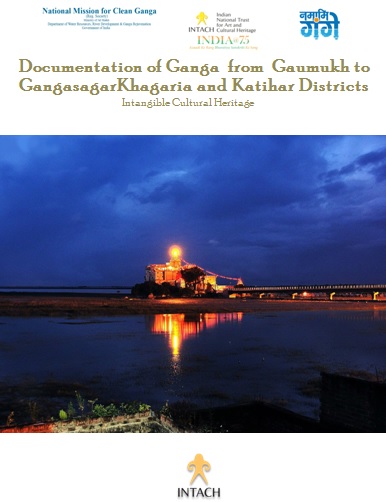
This report details the histories of Katihar and Khagaria of the Purnea and Munger region of Bihar respectively, their colourful fairs and festivals, places if historical and cultural interest and famous personalities. A special focus has been given to the various styles of beautiful, grand and diverse weddings of Katihar and Khagaria with an in-depth documentation of their rites and rituals. These rituals display the various aspects of the identities of Bihar and the centrality of the river Ganga in them. Ganga emerges as a significant influence in the creation of myths, legends, and local customs.
Several common themes within the two districts have also been detailed like their cuisine, which creates a wholesome picture of the relationship between diet and culture of the region. The languages of Khagaria and Katihar like Maithili, Angika and Surjapuri provide crucial information about identity formation as well as aids in locating the history of the region through linguistic activities. The rich history is jewelled with music, poetry and creative literature.
Check out more on the INTACH ICH Archive:
https://icharchive.intach.org/Detail/collections/81
‘Kumbh – The Nectar of Faith’
Outreach Activities Projects Research and Documentation of ICH Elements Video Collections
The film ‘Kumbh – The Nectar of Faith’ (with English subtitles) and ‘Kumbh- Asthake Amrit mein Snan’ (Hindi) was made by the ICH Division with filmmaker Himanshu Joshi. It was officially released during the INTACH Governing Council meeting held at the India International Centre (IIC) on 29th July, 2021. It has since won:
1) Winner – World Film Carnival, Singapore, 2021
2) Best Short Documentary – Pápa International Historical Film Festival, 2022
3) Best Short Documentary – Europe Film Festival, 2021
4) Jury Winner- Best Short Documentary- Halicarnassus Film Festival, 2021
5)Finalist – Fiorenzo Serra Film Festival, 2021
6) Semi Finalist – Mumbai Indie Film Festival, 2021
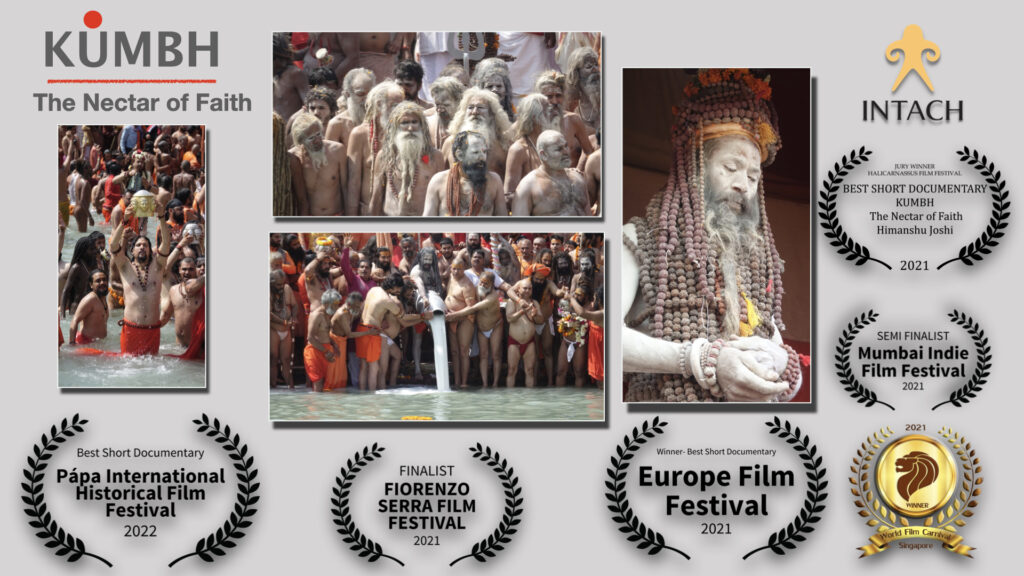
The film looks at the ethos of the MahaParv Kumbh. Inscribed by UNESCO on the Representative List of Intangible Cultural Heritage of Humanity, this event witnesses the largest peaceful gathering of devotees in the world, embodying the true spirit of inclusiveness. They congregate to four locations in India at the designated six-year cycle (Ardh Kumbh) or the twelve- year cycle (Maha Kumbh) with a single purpose—a dip in the Nectar of Faith.
What draws them in multitudes to this festival and what does the Kumbh signify metaphorically? What is the importance of the River Ganga in relation to the Kumbh? What place do these two elements hold in the tenets of Sanatan Dharma?The film explores these questions and more in a fascinating narrative that is woven by seers from different ascetic orders—Junapethadheeshwar Acharya MahaMandaleshwar Swami AvadheshanadGiri Ji Maharaj, Acharya Mahamandeleshwar Swami KailashanandGiri Ji Maharaj of Shri PanchNiranjaniAkhada, Jagad Guru Shankaracharya Swami Swaroopanand Saraswati Ji Maharaj, Sadhvi Bhagwati Saraswati Ji of the Divine Shakti Foundation, Acharya Mahamandeleshwar Laxmi Narayan Tripathi of the KinnarAkhada, as well as devotees and scholars.
The YouTube links to the films are
https://youtu.be/Y70ls2BJK4k (English subtitles)
https://youtu.be/VyUTD-ekh8U (Hindi)
Cultural Documentation of River Ganga from Gaumukh to Ganga Sagar – Buxar District
Cultural Mapping Projects This Namami Gange project is being undertaken for the Jal Shakti Ministry, Government of India, under the National Mission for Clean Ganga (NMCG) scheme. INTACH is assisting the Ministry in the capacity of a knowledge partner. Three divisions of INTACH namely; Natural Heritage (NH), Architectural Heritage (AH) and Intangible Cultural Heritage (ICH) divisions have been engaged in the cultural mapping project, of three aspects natural, tangible and intangible assets along Ganga.
The objective of the project is to conduct field investigation and document existing cultural assets on either side of the river Ganga (within a radius of 5Kms, starting from its source, i.e. Gangotri, down to its point of dispersal at Ganga Sagar) and to produce for the ministry a detailed, illustrated report based on the primary and secondary resources available.
Buxar District
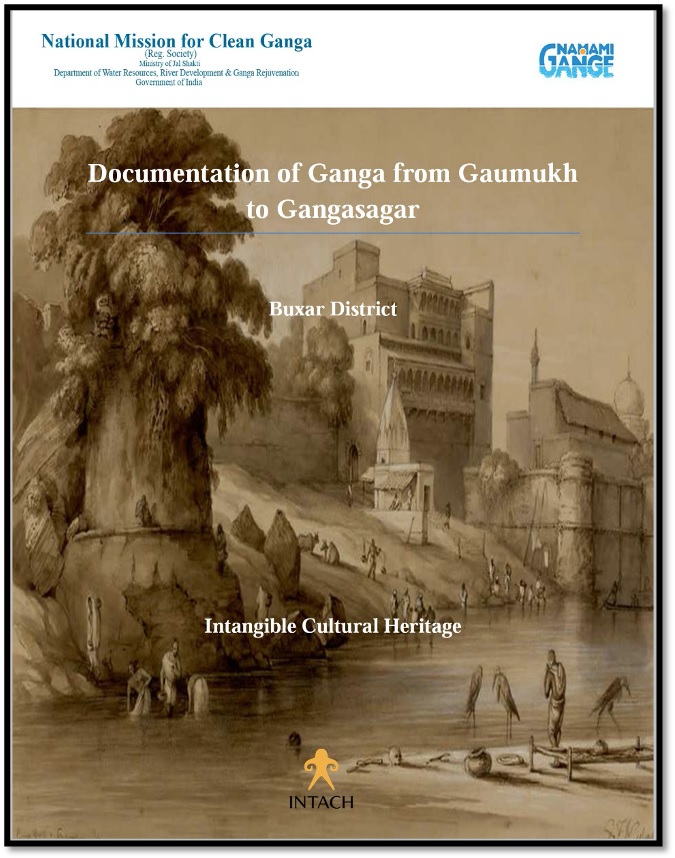
The report contains secondary research on the intangible cultural assets of Buxar district along the river Ganga. It references some important historical events and buildings or places which require immediate attention from the concerned authorities. Places such as the Shrichand temple complex, which is in ruins, have been highlighted.
The report also outlines how Buxar contributed significantly to the nation’s independence movement, and the Quit India movement specifically. It details some of the important sacred and historical complexes along river Ganga at Buxar, which include the Ram Rekha Ghat, Navlakha, Rameshwarnath, Brahmeshwarnath, and Bihari Ji Mandir. Other ICH elements such as the Panchkoshi Parikrama, and Sita Ram Vivah Mahotsav has also been touched upon.
Check out more on the INTACH ICH Archive:
https://icharchive.intach.org/Detail/collections/81
Cultural Documentation of River Ganga from Gaumukh to Ganga Sagar – Kanpur District
Cultural Mapping Projects This Namami Gange project is being undertaken for the Jal Shakti Ministry, Government of India, under the National Mission for Clean Ganga (NMCG) scheme. INTACH is assisting the Ministry in the capacity of a knowledge partner. Three divisions of INTACH namely; Natural Heritage (NH), Architectural Heritage (AH) and Intangible Cultural Heritage (ICH) divisions have been engaged in the cultural mapping project, of three aspects natural, tangible and intangible assets along Ganga.
The objective of the project is to conduct field investigation and document existing cultural assets on either side of the river Ganga (within a radius of 5Kms, starting from its source, i.e. Gangotri, down to its point of dispersal at Ganga Sagar) and to produce for the ministry a detailed, illustrated report based on the primary and secondary resources available.
Kanpur District

The history, festivals, local folklore, performing arts, personalities, language, literature and cuisine of this region have been highlighted in the report. Special focus of the report is on the Leather crafts of the region. Kanpur is known for fine quality leather tanned by the numerous tanneries in the region. The leather goes through various pre tanning and post tanning stages and processes like liming, bating, drenching, pickling, shaving, spitting, dyeing and more.
The city of Kanpur offers an incredibly rich history and cultural heritage. One of the most prominent centres in Kanpur are the Ganga ghats that touch the city, and the living traditions, crafts, festivals and rituals that are celebrated at this site. The ghat is a primary pilgrimage centre for Hindus and is set against the backdrop of the mighty Ganga. The report also features places of historical and cultural importance like Bithoor, Bhitargaon, kanpur memorial church, Lal Imli, ghats of kanpur and so on.

Check out more on the INTACH ICH Archive:
https://icharchive.intach.org/Detail/collections/81
Cultural Documentation of River Ganga from Gaumukh to Ganga Sagar – Ballia District
Cultural Mapping ProjectsThis Namami Gange project is being undertaken for the Jal Shakti Ministry, Government of India, under the National Mission for Clean Ganga (NMCG) scheme. INTACH is assisting the Ministry in the capacity of a knowledge partner. Three divisions of INTACH namely; Natural Heritage (NH), Architectural Heritage (AH) and Intangible Cultural Heritage (ICH) divisions have been engaged in the cultural mapping project, of three aspects natural, tangible and intangible assets along Ganga.
The objective of the project is to conduct field investigation and document existing cultural assets on either side of the river Ganga (within a radius of 5Kms, starting from its source, i.e. Gangotri, down to its point of dispersal at Ganga Sagar) and to produce for the ministry a detailed, illustrated report based on the primary and secondary resources available.
Ballia District
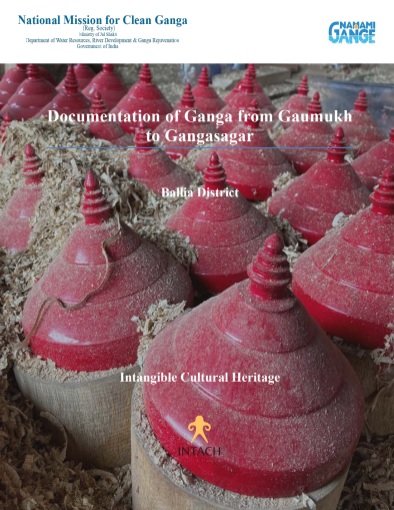
The Ballia report covers various aspects of the region, like its history and its contribution to India’s independence movement, with special reference to the 1857 Mutiny war, and the August Kranti of 1942. It looks at famous personalities from Ballia such as Mangal Pandey, Chittu Pandey, and Hazari Prasad Dwivedi. Also featured in the report are intangible cultural heritage elements and assets like folk traditions of Lorikayan and Lorikdih, cultural and sacred places, and foodways. The coverage of fairs and festivals reveals a major focus on the Mauni Amavasya Mela, and the Dadri Mela which are events held every year in an admirable show of communal harmony. The report also gives a brief introduction to the emergence of the Bhojpuri language in the region.
In addition, Lakhneshwar Dih, an archaeologically important site, and significant but dying crafts like Tikuli, Sinhora (sindoor box) and Doli (palanquin) also find mention in the report.
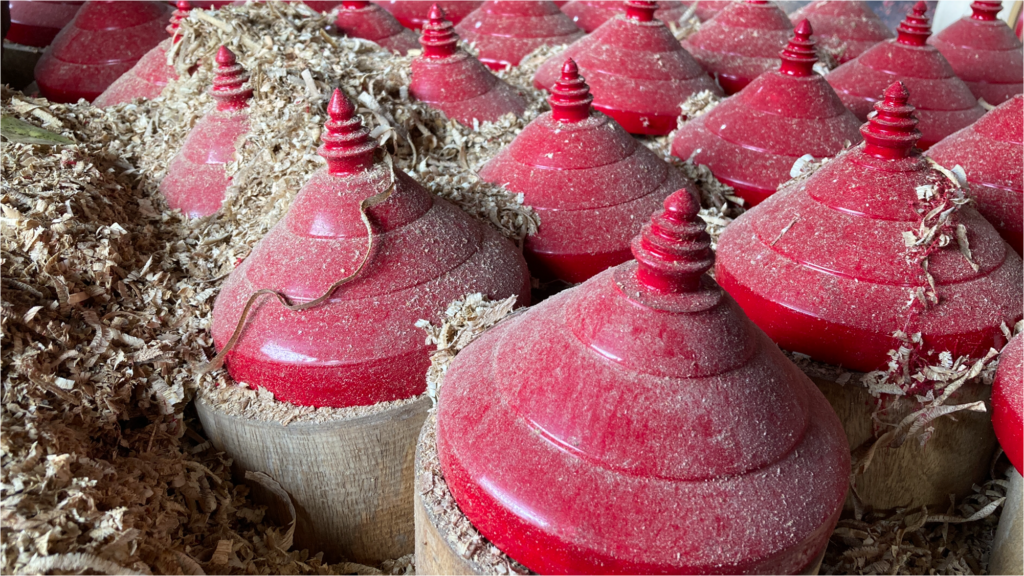




Check out more on the INTACH ICH Archive:
https://icharchive.intach.org/Detail/collections/81
Cultural Documentation of River Ganga from Gaumukh to Ganga Sagar – Bhadohi District
Cultural Mapping Projects UncategorizedThis Namami Gange project is being undertaken for the Jal Shakti Ministry, Government of India, under the National Mission for Clean Ganga (NMCG) scheme. INTACH is assisting the Ministry in the capacity of a knowledge partner. Three divisions of INTACH namely; Natural Heritage (NH), Architectural Heritage (AH) and Intangible Cultural Heritage (ICH) divisions have been engaged in the cultural mapping project, of three aspects natural, tangible and intangible assets along Ganga.
The objective of the project is to conduct field investigation and document existing cultural assets on either side of the river Ganga (within a radius of 5Kms, starting from its source, i.e. Gangotri, down to its point of dispersal at Ganga Sagar) and to produce for the ministry a detailed, illustrated report based on the primary and secondary resources available.
Bhadohi District
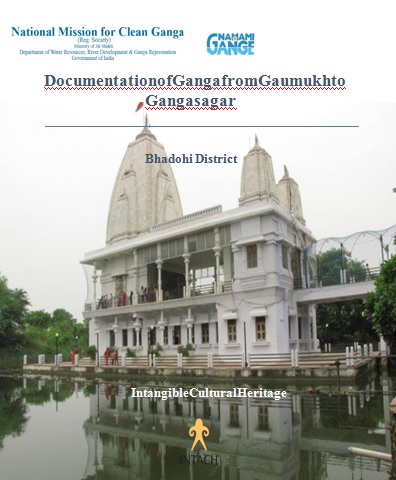
The report covers the history, festivals, crafts, temples and famous personalities of the region in depth. A lot of focus is on the carpet industry of Bhadohi that is famous worldwide as “Carpet City”. The district is biggest carpet manufacturing centre in India. It is known for its hand-knotted carpet. The Mirzapur-Bhadohi region is the largest handmade carpet weaving cluster, engaging around 3.2 million people in the industry.


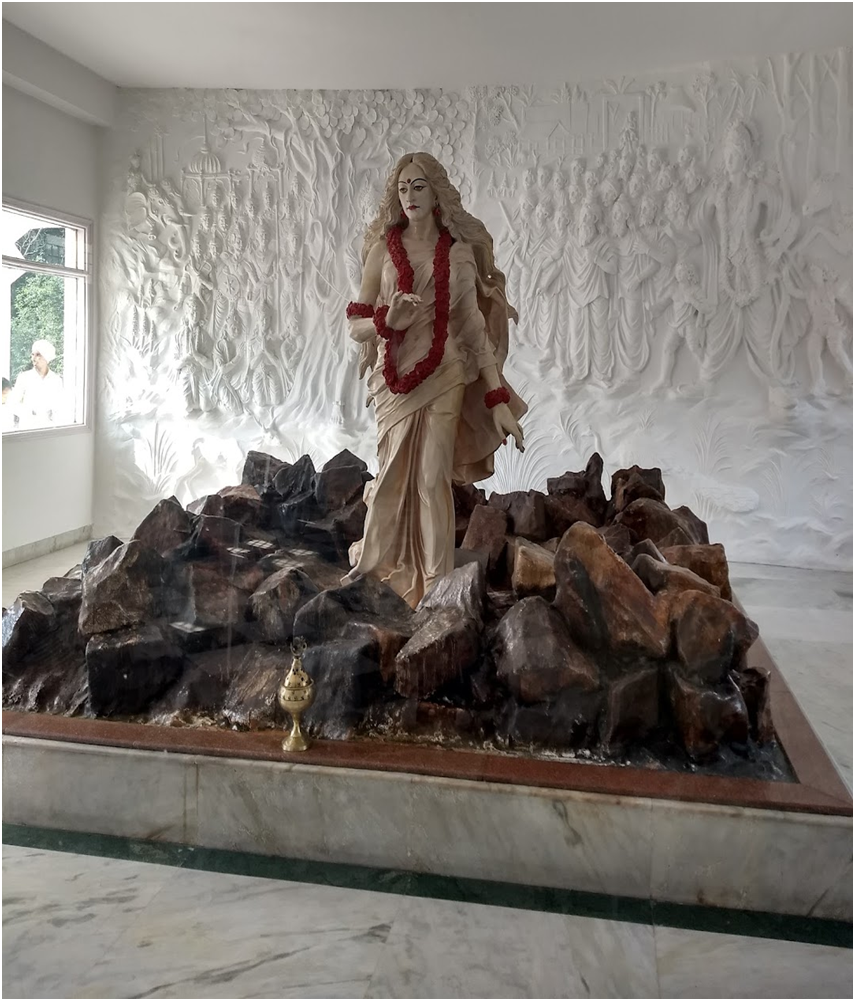
Check out more on the INTACH ICH Archive:
https://icharchive.intach.org/Detail/collections/81
Cultural Documentation of River Ganga from Gaumukh to Ganga Sagar – Bulandshahr District
Cultural Mapping Projects This Namami Gange project is being undertaken for the Jal Shakti Ministry, Government of India, under the National Mission for Clean Ganga (NMCG) scheme. INTACH is assisting the Ministry in the capacity of a knowledge partner. Three divisions of INTACH namely; Natural Heritage (NH), Architectural Heritage (AH) and Intangible Cultural Heritage (ICH) divisions have been engaged in the cultural mapping project, of three aspects natural, tangible and intangible assets along Ganga.
The objective of the project is to conduct field investigation and document existing cultural assets on either side of the river Ganga (within a radius of 5Kms, starting from its source, i.e. Gangotri, down to its point of dispersal at Ganga Sagar) and to produce for the ministry a detailed, illustrated report based on the primary and secondary resources available.
Bulandshahr District

This report details the history, folklore, cuisine, crafts, and traditional knowledge of Bulandshahr. A special focus has been given to the Khurja Pottery tradition that is famous in this region.Khurja is a small town, with hardly 7,000 houses and with a population of about 70,000 located in Bulandshahr district of Uttar Pradesh.The patterns and paintings of the pottery are of the Indo-Persian character. It is said that the industry traces its origin to the last decade of the 14th century, when Temur Lane had invaded India.
Bulandshahr is home to a plethora of religious places. Rajghat, Naroura, Karnavas, Anoopshahr, Ahar, Gajroula and ghats on the river Ganga are popular sites where ritualistic bathing takes place.The fairs, festivals and folklore along with places of interest have been been highlighted in the report.
Check out more on the INTACH ICH Archive:
https://icharchive.intach.org/Detail/collections/81
Cultural Documentation of River Ganga from Gaumukh to Ganga Sagar – Ghazipur and Chandauli Districts
Cultural Mapping Projects This Namami Gange project is being undertaken for the Jal Shakti Ministry, Government of India, under the National Mission for Clean Ganga (NMCG) scheme. INTACH is assisting the Ministry in the capacity of a knowledge partner. Three divisions of INTACH namely; Natural Heritage (NH), Architectural Heritage (AH) and Intangible Cultural Heritage (ICH) divisions have been engaged in the cultural mapping project, of three aspects natural, tangible and intangible assets along Ganga.
The objective of the project is to conduct field investigation and document existing cultural assets on either side of the river Ganga (within a radius of 5Kms, starting from its source, i.e. Gangotri, down to its point of dispersal at Ganga Sagar) and to produce for the ministry a detailed, illustrated report based on the primary and secondary resources available.
Chandauli and Ghazipur Districts

At Chandauli, the team documented the Zari and Zardozi craft people at Dulhipur tehsil. The craft has been listed under the One District One Product (ODOP) scheme of the government of Uttar Pradesh. The team also documented the knowledge holders and seers at Baba Keenaram Ashram.
At Ghazipur district the team documented the wall hanging craft of the districtalong with other intangible assets.
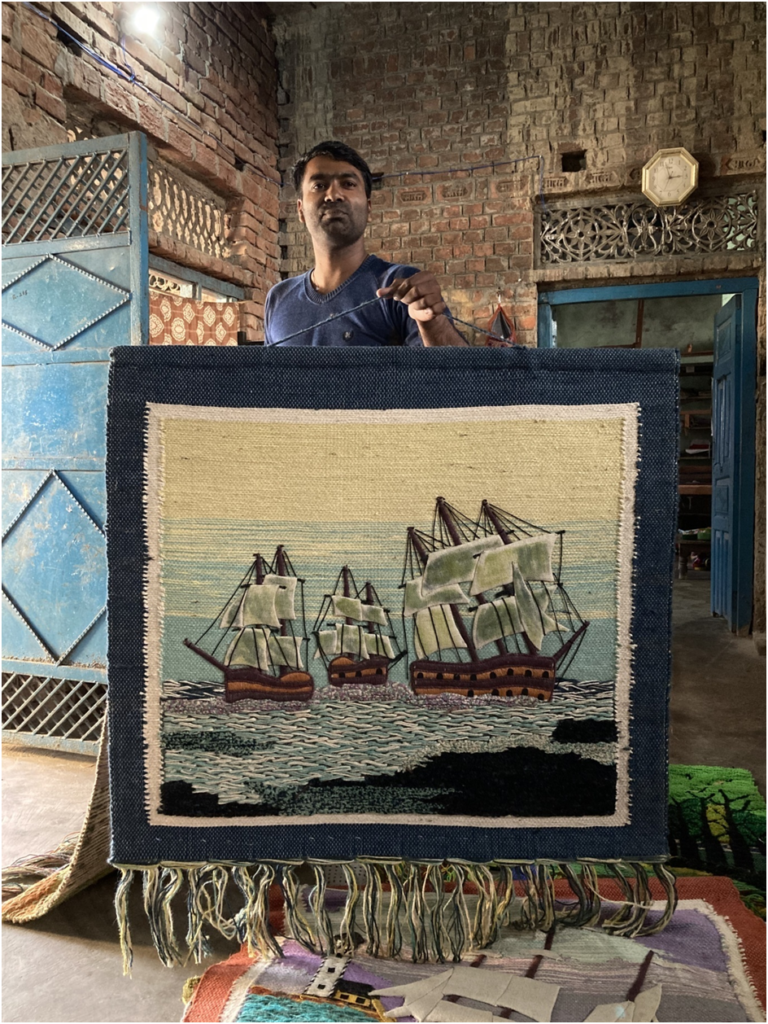


Check out more on the INTACH ICH Archive:
https://icharchive.intach.org/Detail/collections/81
Cultural Documentation of River Ganga from Gaumukh to Ganga Sagar – Kaushambi District
Cultural Mapping Projects This Namami Gange project is being undertaken for the Jal Shakti Ministry, Government of India, under the National Mission for Clean Ganga (NMCG) scheme. INTACH is assisting the Ministry in the capacity of a knowledge partner. Three divisions of INTACH namely; Natural Heritage (NH), Architectural Heritage (AH) and Intangible Cultural Heritage (ICH) divisions have been engaged in the cultural mapping project, of three aspects natural, tangible and intangible assets along Ganga.
The objective of the project is to conduct field investigation and document existing cultural assets on either side of the river Ganga (within a radius of 5Kms, starting from its source, i.e. Gangotri, down to its point of dispersal at Ganga Sagar) and to produce for the ministry a detailed, illustrated report based on the primary and secondary resources available.
Kaushambi District

At Kaushambi, the team visited several historical, religious and cultural sites, such as the ancestral house of Durgavati Devi or Durga Bhabhi at Shajadpur. She was a freedom fighter also known as ‘the iron lady’ and a member of the Hindustan Socialist Republican Association which had freedom fighters like Bhagat Singh. Also documentes was the Ghoshitarama Buddhist Monastery, Sant Malook Das Ashram, ghats such as Kubri Ghat, Vrindavan Ghat, Hanuman Ghat, Kaleshwar Ghat, Baleshwar Ghat, Sandipan Ghat, Parana Ghat, Akbarpur Ghat, and areas of Banana cultivation (which is under the ODOP Scheme).
The team also documented the Kuppi Mela of Kaushambi; as per the local belief the 100year old traditional and unique Kuppi Yudh or battle is organized during the Dussehra festival every year at Daranagar area of Kaushambi district. The ceremonial battle of Lord Rama and Ravana’s army is staged in the Kuppi war.





Check out more on the INTACH ICH Archive:
https://icharchive.intach.org/Detail/collections/81
Cultural Documentation of River Ganga from Gaumukh to Ganga Sagar – Kannauj and Hardoi District
Cultural Mapping Projects This Namami Gange project is being undertaken for the Jal Shakti Ministry, Government of India, under the National Mission for Clean Ganga (NMCG) scheme. INTACH is assisting the Ministry in the capacity of a knowledge partner. Three divisions of INTACH namely; Natural Heritage (NH), Architectural Heritage (AH) and Intangible Cultural Heritage (ICH) divisions have been engaged in the cultural mapping project, of three aspects natural, tangible and intangible assets along Ganga.
The objective of the project is to conduct field investigation and document existing cultural assets on either side of the river Ganga (within a radius of 5Kms, starting from its source, i.e. Gangotri, down to its point of dispersal at Ganga Sagar) and to produce for the ministry a detailed, illustrated report based on the primary and secondary resources available.
Kannauj and Hardoi District

The Kannauj report covers several aspects of Intangible culture; perfumery, AalahRudaal, languages, personalities and other folklores, Kannauj district was carved out of the erstwhile district of Farrukhabad on September 18, 1997. The district is part of the Kanpur Division of Uttar Pradesh. Its northern borders touch Farrukhabad district, on the eastern side Hardoi district is located; Kanpur Dehat is towards the southeast, while the district’s western and southern borders touch the districts of Mainpuri and Etawah respectively. The district is divided into three tehsils and eight development blocks. The Ganga is the main river, flowing along the northeastern border of the district. Kali and Isan are the other important rivers of the area. The Kali flows along the northern border while Isan flows through the middle of the district.
The report also deals with Sacred complexes and the folklore of the Kannauj district. It highlights some of the sacred spaces found in the district like Annapurna Devi mandir, Ajay Pal mandir, Baba Gauri Shankar, Baba Vishwanath mandir, Dargah Haji Sharif, Fort of Jai Chandra, Rajgrih and so on.
The report elaborately describes the Kannauj Perfume, also known as Kannauj Ittar or attar, as traditional Indian manufacture of perfume. This perfume production is popular in Kannauj. It has been protected under the Geographical indication (GI) of the Agreement on Trade-Related Aspects of Intellectual Property Rights (TRIPS) agreement. It is listed as “Kannauj Perfume” of the GI Act 1999 of the GovernmentKannauj perfume has a long historical background and Kannauj has had perfume trading for hundreds of years. Due to the key role of perfume production in Kannauj, the city is known as “the perfume capital of India” and “Kannauj is to India what Grasse is to France.”





Check out more on the INTACH ICH Archive:
https://icharchive.intach.org/Detail/collections/81
Publication – Oral Traditions, Continuities and Transformations in Northeast India and Beyond
Outreach Activities Projects Research and Documentation of ICH Elements
Northeast India is home to many distinct communities and is an area of incredible ethnic, religious, and linguistic diversity. This book published by Routledge, explores the shared cultural heritage among the highland and river valley communities of Northeast India and mainland South East Asia, including South China, through oral traditions. It looks at these shared cultural traditions and suggests new ways of understanding and interpreting the heritage of Northeast India. Oral traditions often bring forward an unexpected twist in understanding historical and cultural links, and this volume explores this using local knowledge and innovative engagements with oral traditions in multiple ways, from folklore and language to performative traditions.
The essays in this volume examine how communities build new meanings from old traditions, often as a recognition of the tension between conservation and creation, between individual interpretation and social consensus. They offer interesting parallels on how oral traditions behave in different socio-economic contexts, and also examine how oral traditions and memory interact with the digital world’s penetration in remote areas.
This volume will be useful for scholars and researchers of Northeast India, sociology, sociology of culture, cultural studies, ethnic studies, anthropology, folkloristics, and political sociology. This publication from December 2020 was an outcome of the oral traditions international conference organised by the ICH division in Meghalaya in the year 2016.
Link to the conference:
http://intangibleheritage.intach.org/intach-shillong-conference-2016/
Link to purchase the book:
https://www.routledge.com/Oral-Traditions-Continuities-and-Transformations-in-Northeast-India-and/Sarkar-Modwel/p/book/9780815396161
Coffee Table Book- Kashi Chitran: Living Heritage of Varanasi
Cultural Mapping Outreach Activities Projects
Varanasi, one of the most ancient cities of the world, is a precious repository of cultural heritage. It is an amalgamation of spiritual and secular influences resulting from continuous historical events and settlements, carrying with it both intangible and tangible properties, social contracts and related norms of knowledge, traditions and customs. Kashi, Banaras or Varanasi assumes a complex identity stemming from the collective memory of generations of communities settled here, and the multi-dimensional cultural constructs accommodated by the city over the ages. This bilingual publication encompasses a mapping of the city by the Intangible Cultural Heritage division of INTACH, with an aim to unravel the complex and contoured elements of city life, both historic and contemporary, attaching as much value to the ancient and the authentic, as to the transitions and transformations witnessed over time.
The Publication was inaugurated by the hands of the Shri M. Venkaiah Naidu, the Vice President of India at his residence on 23rd March 2021.


The Vice president, Shri M. Venkaiah Naidu, inaugurating Kashi chitran at his residence in New Delhi.
Co-published by INTACH and Aditya Prakashan Publishers, the Kashi Chitran publication was published in January 2021.
Under the supervision and coordination of Ms. Nerupama Y. Modwel, Principal Director, ICH Division, the team of Ms. Gunjan Joshi and Ms. Nishtha Gorke, Researchers, ICH division, worked on the project on the cultural Mapping and AV Documentation of the ICH of Varanasi (2015-2017) and the division brought out this publication as an outcome of the above mentioned project.
More information and link to the project:
http://intangibleheritage.intach.org/cultural-mapping-and-audio-visual-documentation-of-the-intangible-cultural-heritage-of-varanasi/
Traditional Cuisines of Madhya Pradesh
Projects Research and Documentation of ICH ElementsThe project has been completed by the INTACH Shivpuri Chapter to document the regional and traditional cuisines of Madhya Pradesh. Madhya Pradesh dishes out some of the most delicious platters in India. The state domiciles people from all corners of the country. Thus, recipes of various states influence its salver. Madhya Pradesh has amalgamated the recipes of the various erstwhile states and given them their distinctive flavour.
As far as daily meals are concerned, wheat, jowar and maize are the core grains and are mostly included in every meal.The report has been received by the division. The report covering the varieties of recipes specially prepared in the Chambal region of Madhya Pradesh. These traditional recipes are almost disappearing from the region and only a few people know the recipes whichare slowly getting lost.
The report has covered the recipe of Bhind ka Peda, Bajra kiMeethiMathri, Fajita. Gajak, Guldana, Sooran Ka Saag, Daana Methi, Mangochi, Alloo ka Halwa, BajrekeMahiri, Tikkad, Palak kiPoori, Gulgula, Imarti, Mohan Thaal and more.


Cultural Documentation of River Ganga from Gaumukh to Ganga Sagar – Meerut District
Cultural Mapping Projects This Namami Gange project is being undertaken for the Jal Shakti Ministry, Government of India, under the National Mission for Clean Ganga (NMCG) scheme. INTACH is assisting the Ministry in the capacity of a knowledge partner. Three divisions of INTACH namely; Natural Heritage (NH), Architectural Heritage (AH) and Intangible Cultural Heritage (ICH) divisions have been engaged in the cultural mapping project, of three aspects natural, tangible and intangible assets along Ganga.
The objective of the project is to conduct field investigation and document existing cultural assets on either side of the river Ganga (within a radius of 5Kms, starting from its source, i.e. Gangotri, down to its point of dispersal at Ganga Sagar) and to produce for the ministry a detailed, illustrated report based on the primary and secondary resources available.
Meerut District

The report covers the Intangible assets existing in the district and other lesser-known aspects such as History, Etymology (Meerut probably derives its name from the word ‘Maya Rashtra’, meaning the country of Maya), references of it in the historical texts, Meerut and Mutiny of 1857, the Delhi Chalo war cry along historical and archaeological sites belonging to various religions. The report also highlights the historically very important nearby site called Hastinapur. The report has also covered the Mahabharata Site -Parikshitgarh, Mawana District, Shukrataal Muzaffarnagar, and the Ayurvedic significance, Mollywood of Meerut- Not to be confused with the genre of films that emerge from Malayali Cinemas, Mollywood is a local name used by the peoples of Meerut to refer to their rural cinema industry.
The report has highlighted the Scissor industry and the challenges for this highly vulnerable industry of Meerut along with Musical instruments, Embroidery Cluster and Sports equipment industries. It also highlights the fairs and festivals of Meerut, the Azrada Gharana, cuisines &folk rendition of the music. The report also covered Hastinapur which is an archaeologically and culturally rich site. Many Sacred elements of this place have been covered in this report. The information about Pandureshwar temple, Jayanti Shakti Peeth, Karna Temple have been covered.
Images from Hastinapur:
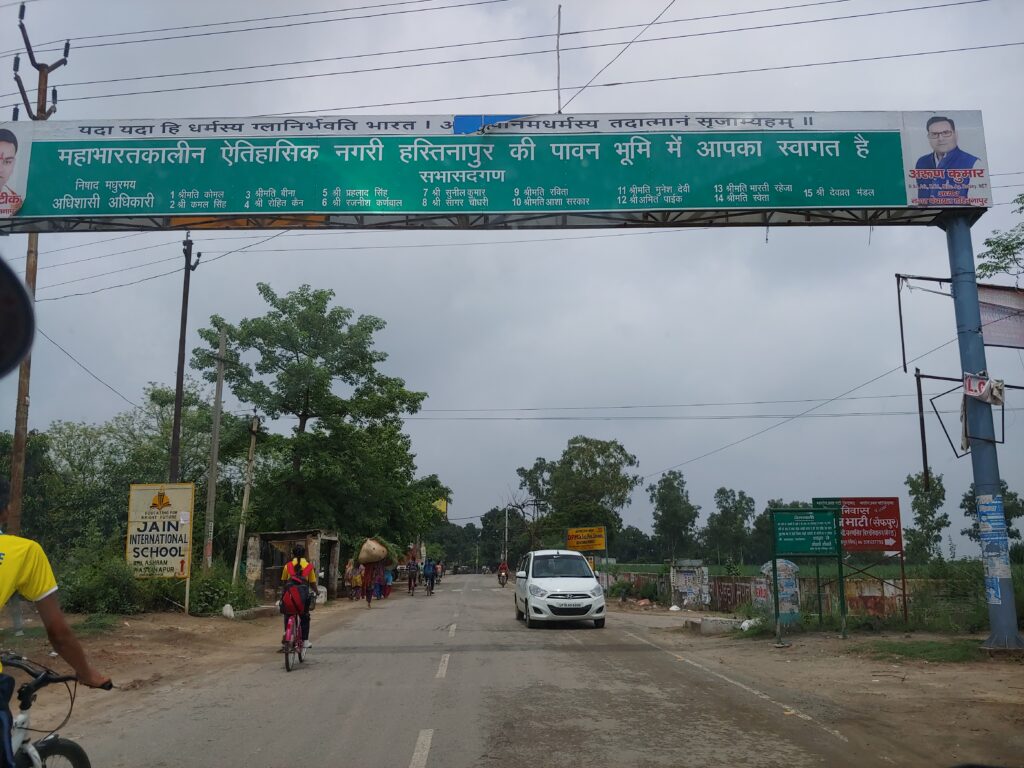
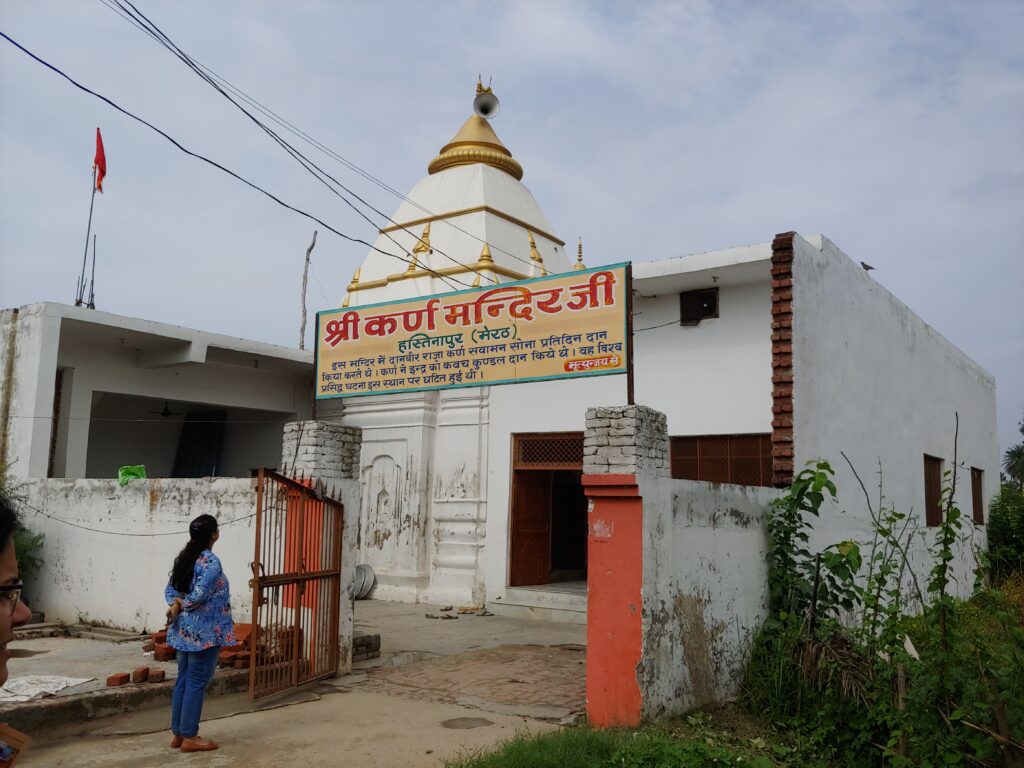

Check out more on the INTACH ICH Archive:
https://icharchive.intach.org/Detail/collections/81
Cultural Documentation of River Ganga from Gaumukh to Ganga Sagar – Garhmukteshwar and Amroha District
Cultural Mapping Projects This Namami Gange project is being undertaken for the Jal Shakti Ministry, Government of India, under the National Mission for Clean Ganga (NMCG) scheme. INTACH is assisting the Ministry in the capacity of a knowledge partner. Three divisions of INTACH namely; Natural Heritage (NH), Architectural Heritage (AH) and Intangible Cultural Heritage (ICH) divisions have been engaged in the cultural mapping project, of three aspects natural, tangible and intangible assets along Ganga.
The objective of the project is to conduct field investigation and document existing cultural assets on either side of the river Ganga (within a radius of 5Kms, starting from its source, i.e. Gangotri, down to its point of dispersal at Ganga Sagar) and to produce for the ministry a detailed, illustrated report based on the primary and secondary resources available.
Garhmukteshwar and Amroha District
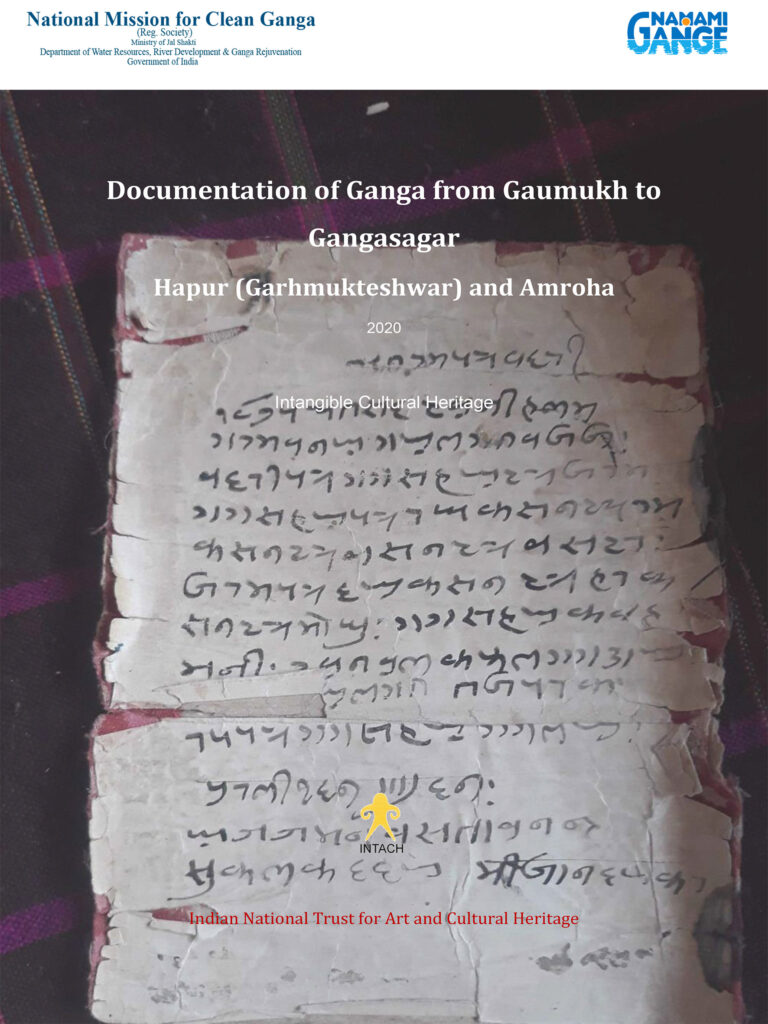
The report covers the historical and cultural significance of this place. Garhmukteshwar was the main centre of trade with the Ganges water route. In the earlier time, there was the trade of timber, bamboo etc., which was imported from Doon and Gaharwal. Along with this, jaggery was a big market. The report also covers the crafts like Modhawhich is an old industry. The report also emphasizes various rituals held in Garhmukesthwar like Deep Daan tradition, Ganga Dusshera and Ganga Jayanti. The significance of the Pothi system (Genealogy records)system of Garh has been documented and covered.Genealogy registers, of families, maintained by Brahmin Pandits locally called ‘Pandas’, who also work as professional genealogists, at Garhmukteshwar.
The report also highlighted the traditional cuisines which include sweets like‘Khajla’, Mave ka Pedha and Mave ki Kheer (which now is not being made used to be a special sweet made during the Pitrapaksha and Navratri time). Garhmukteshwar has been known for Khajla the most and it is believed that nowhere else Khajla is made the way it is prepared here. The important and unique fair also covered in the report which organized in this city is the Gadho-ka-Mela, a kind of animal market where horses and donkeys are purchased, as well as sold. This Being an important pilgrimage centre, a variety of festivals and fairs take place in this city. Every year the Garh Ganga Fair, a bathing festival, is organized on the day of a full moon in the Hindu month of Kartik at Garhmukteshwar.

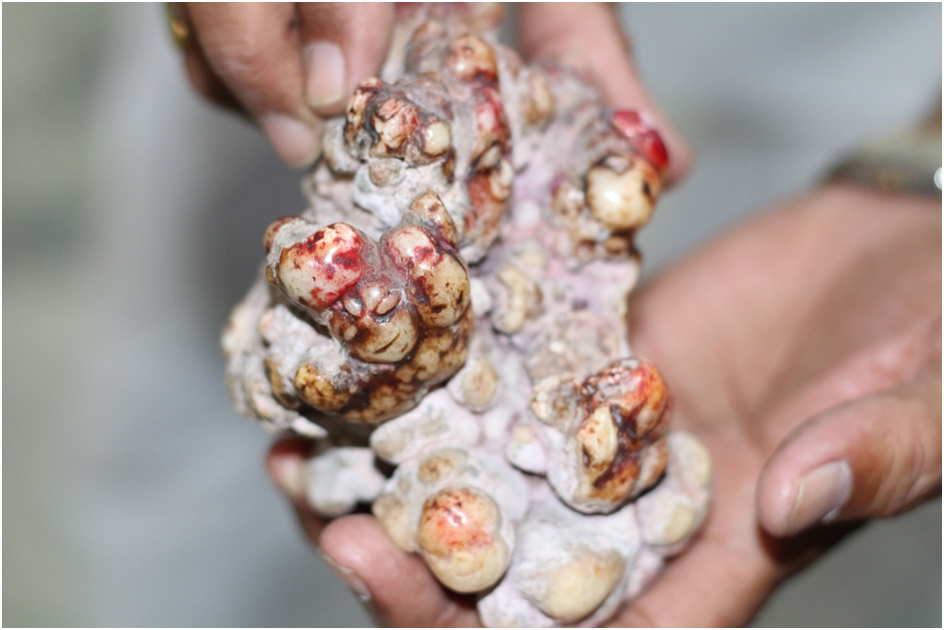
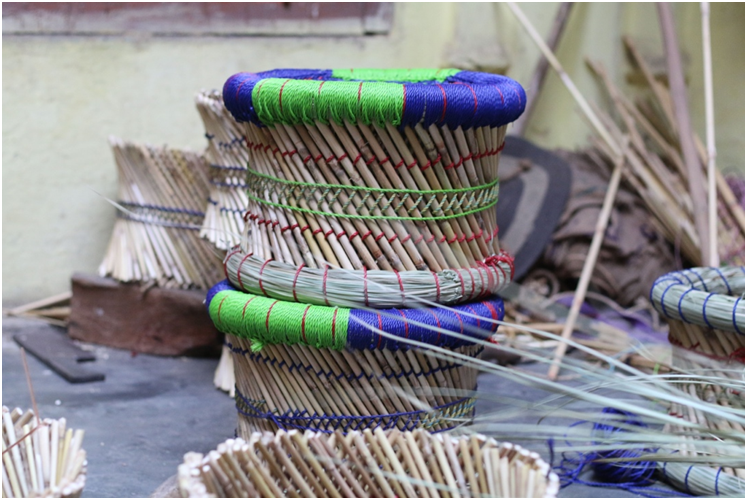
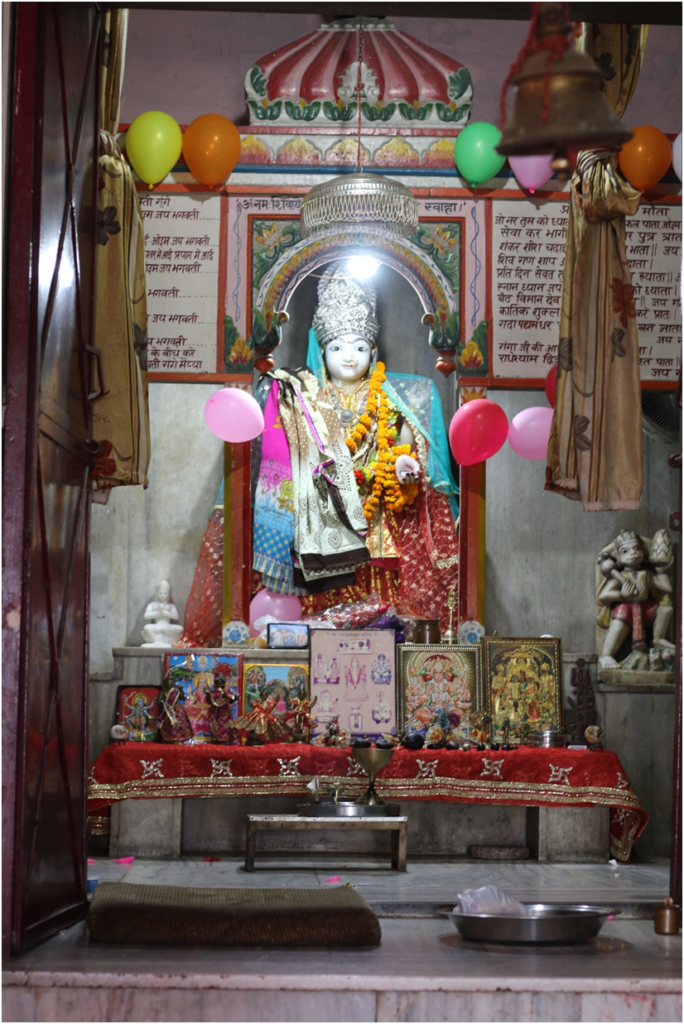


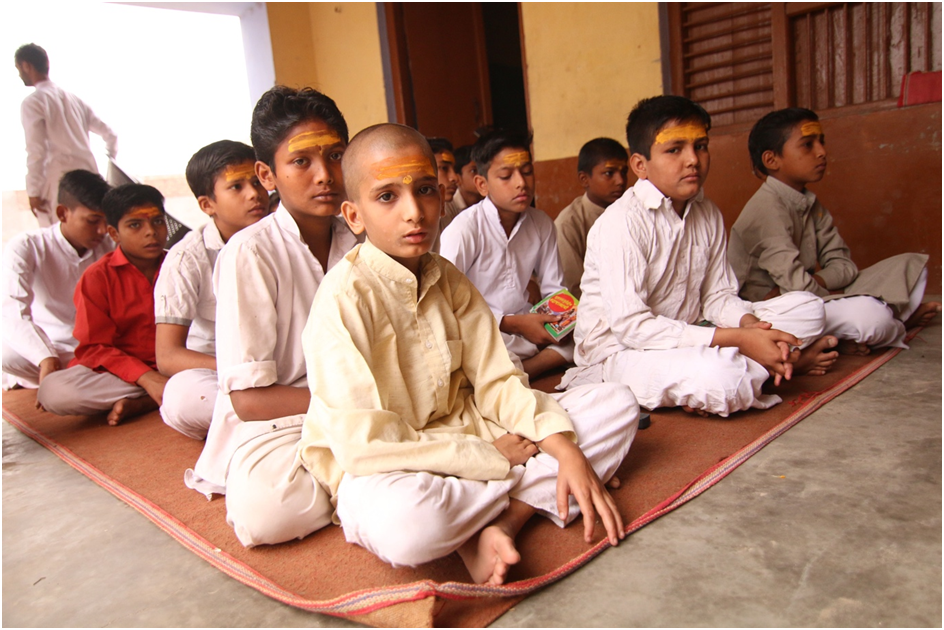

Check out more on the INTACH ICH Archive:
https://icharchive.intach.org/Detail/collections/81
Cultural Documentation of River Ganga from Gaumukh to Ganga Sagar – Farukkhabad District
Cultural Mapping Projects This Namami Gange project is being undertaken for the Jal Shakti Ministry, Government of India, under the National Mission for Clean Ganga (NMCG) scheme. INTACH is assisting the Ministry in the capacity of a knowledge partner. Three divisions of INTACH namely; Natural Heritage (NH), Architectural Heritage (AH) and Intangible Cultural Heritage (ICH) divisions have been engaged in the cultural mapping project, of three aspects natural, tangible and intangible assets along Ganga.
The objective of the project is to conduct field investigation and document existing cultural assets on either side of the river Ganga (within a radius of 5Kms, starting from its source, i.e. Gangotri, down to its point of dispersal at Ganga Sagar) and to produce for the ministry a detailed, illustrated report based on the primary and secondary resources available.
Farukkhabad District

The report covers several intangible assets (which includes history, ancient Kampilya/Panchal kingdom along Ganga at Farukkhabad district. The report writing is still in progress. This district, known as the present Farrukhabad, was well known for its very ancient Vedic, mythological and historical significance and related places. In 1714, Nawab Mohammad Khan Bangash unified 52 villages of Bisen Kshatriyas (Bumtelas) and named them Farrukhabad, In ancient times Farukkhabad was known as Kampilya. Like Kashi (Benaras), the river Ganga flows in Farrukhabad and Fatehgarh in a half-moon shape. The present-day Farrukhabad is known for its Vedic, Pauranik and historical influence on the Indian Subcontinent. This fact and the presence of numerous Shivalayas, has given it another exalted religious status- Aparakashi. The flowing Kali and Ramganga rivers seem to bind Farrukhabad’s northern & southern boundaries. The freedom movement and local freedom fighters of Farukkhabad have also been mentioned in the report. Farukkhabad was also active in India’s independence movement with several freedom fighters fighting for the cause.
The report also mentions foodways. Kapurkand (कपूरकंद) is another very famous traditional sweet of Farukkhabad. It’s generally made during festivals and other occasions and is a democratic sweet as it’s prepared both during Deepavali and Ramzaan.
Images by: Shri. Narayan Chauhan
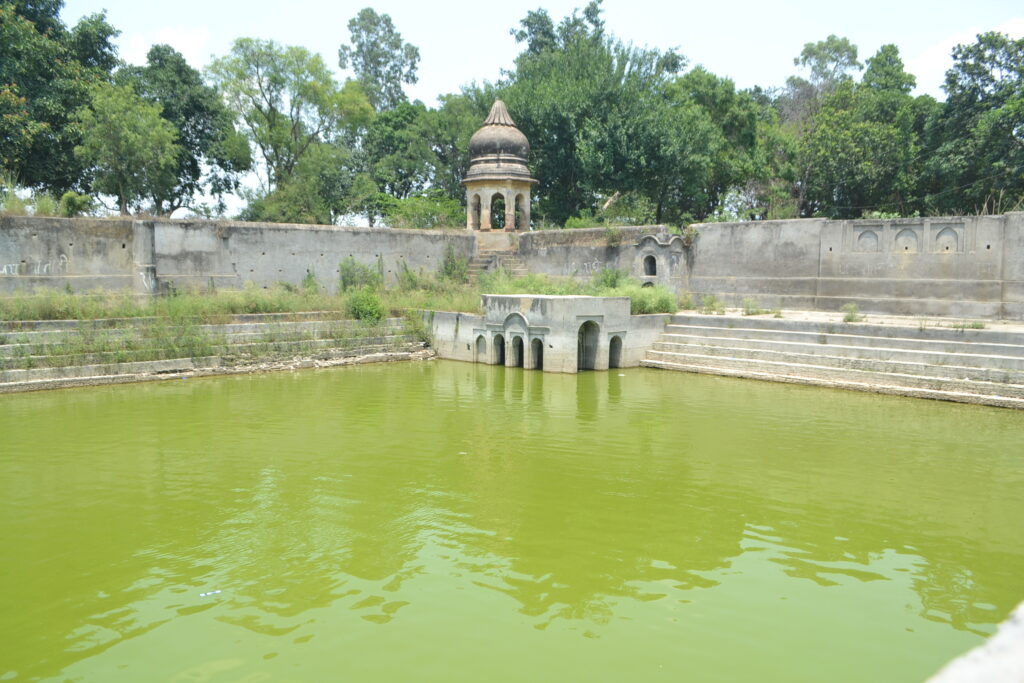



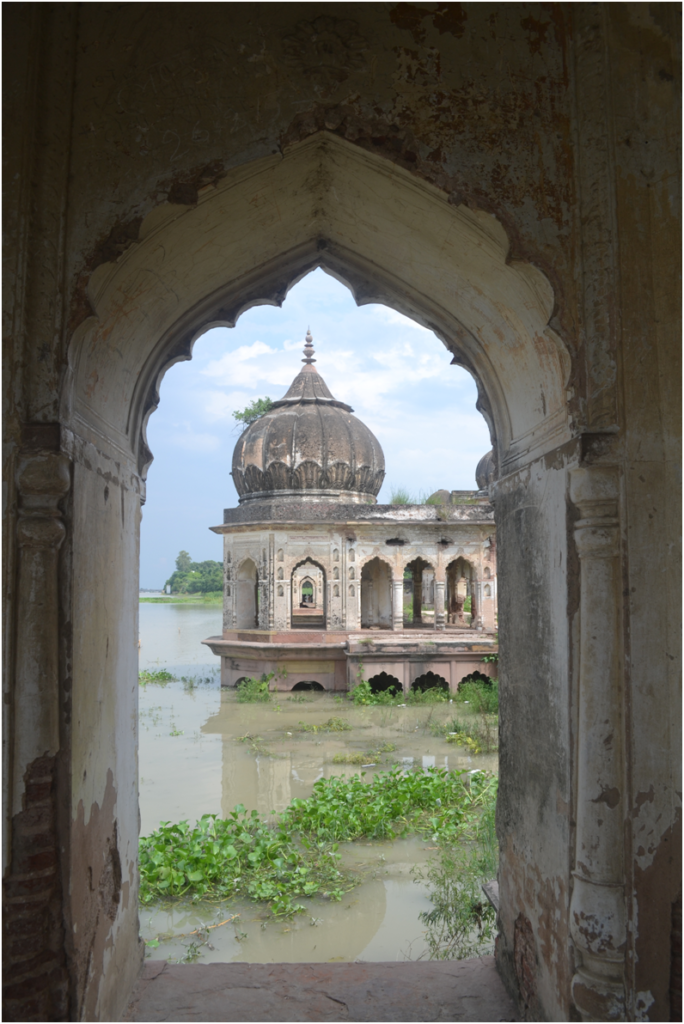
Check out more on the INTACH ICH Archive:
https://icharchive.intach.org/Detail/collections/81
Cultural Documentation of River Ganga from Gaumukh to Ganga Sagar – Munger and Bhagalpur Districts
Cultural Mapping Projects This Namami Gange project is being undertaken for the Jal Shakti Ministry, Government of India, under the National Mission for Clean Ganga (NMCG) scheme. INTACH is assisting the Ministry in the capacity of a knowledge partner. Three divisions of INTACH namely; Natural Heritage (NH), Architectural Heritage (AH) and Intangible Cultural Heritage (ICH) divisions have been engaged in the cultural mapping project, of three aspects natural, tangible and intangible assets along Ganga.
The objective of the project is to conduct field investigation and document existing cultural assets on either side of the river Ganga (within a radius of 5Kms, starting from its source, i.e. Gangotri, down to its point of dispersal at Ganga Sagar) and to produce for the ministry a detailed, illustrated report based on the primary and secondary resources available.
Munger and Bhagalpur Districts
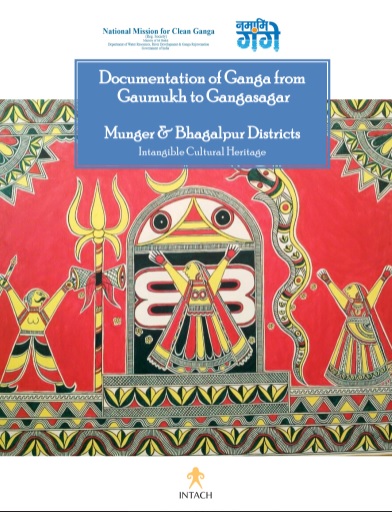
The report on Munger/Bhagalpur area charts the history of the region, from its ancient past to its modern avatar, highlighting the strategic advantages of its location on the banks of the river Ganga.
Long-established spiritual beliefs and ritualistic traditions are seen through the documentation of the Kanwar traditions of Bihar which initiate from Sultanganj are mentioned in the report. The other interesting aspects covered in the report are that of the continuing silk traditions of Bhagalpur, with the weaving of fine tussar, that proclaim its own cultural importance; as well as the heritage of Angika or Manjusha art form that is lesser known than its famous neighbour, the Madhubani style, but equally unique. The research also delves into the references to Munger in Bengali and English literature, and details some of the notable personalities from this region, like Nandalal Bose, Niranjanananda Saraswati, Tilkha Majhi and Ramdhari Singh ‘Dinkar’.
Check out more on the INTACH ICH Archive:
https://icharchive.intach.org/Detail/collections/81
Cultural Documentation of River Ganga from Gaumukh to Ganga Sagar – Muzaffarnagar and Bijnor Distrcits
Cultural Mapping ProjectsThis Namami Gange project is being undertaken for the Jal Shakti Ministry, Government of India, under the National Mission for Clean Ganga (NMCG) scheme. INTACH is assisting the Ministry in the capacity of a knowledge partner. Three divisions of INTACH namely; Natural Heritage (NH), Architectural Heritage (AH) and Intangible Cultural Heritage (ICH) divisions have been engaged in the cultural mapping project, of three aspects natural, tangible and intangible assets along Ganga.
The objective of the project is to conduct field investigation and document existing cultural assets on either side of the river Ganga (within a radius of 5Kms, starting from its source, i.e. Gangotri, down to its point of dispersal at Ganga Sagar) and to produce for the ministry a detailed, illustrated report based on the primary and secondary resources available.
Muzaffarnagar and Bijnor Distrcits

The report on Muzaffarnagar district mentions various significant aspects of the region ranging from history, geographical location, and festivities to industries, sacred spaces and personalities. The report describes the Sugar and jaggery production and trade that is the most important economic activity of the district.
It is due to this major industry that this district is famously recognized as the ‘Sugar Bowl of India’. It is believed that Muzaffarnagar is arguably the biggest mandi (marketplace) of Jaggery in Asia and the farmers produce around 60 varieties of it. Another interesting aspect mentioned in the report is the presence of the Painted Grey Ware that has been excavated from this district. Fairs and festivals that are celebrated in the district are described in the report. These include Ram Navami, Hanuman Jayanti, Vaisakh Purnima, Bargad Amavasya, Ganga Dashahara, Nag Panchami, Shivratri, Rakshabandhan, Janmashtami, Diwali, Makarsankranti, Holi, Nauchandi Fair to name a few. Religion is a dominant aspect for the people of Muzaffarnagar district. It paints its cultural vibrance and makes it an attractive tourist destination.
The report also deals with sacred spaces and the folklore of the Muzaffarnagar district. It highlights some of the sacred spaces found in the district like the Hanumatdham, Ganeshdham, Sri Ananteshwar Mahadev Mandir, the Shukrataal, Bhairo ka Mandir and the Akshay Vat Vriksha along with mentioning the stories, mythology and beliefs around the same. The pilgrimage location of Shukratal is a part of the district of Muzaffarnagar and is specifically perceived through the lens of religion due to its connections with the period of the Mahabharata. The district of Muzaffarnagar is connected to many gifted poets. Some of them find mention in the report.
Check out more on the INTACH ICH Archive:
https://icharchive.intach.org/Detail/collections/81
Himalyan Conference Journal
Outreach Activities Projects Research and Documentation of ICH ElementsHimalayan Conference Journal: A Journal consisting of research papers presented by the participants of the National Conference at Dehradun was published.The conference with the title of ‘Himalayan Heritage: Community-led Economic Regeneration’ was organized by the ICH division in collaboration with the INTACH Uttarakhand Chapter and the UNESCO C2C at the Wildlife Institute of India, on 29th and 30th November 2017 in Dehradun, Uttarakhand.

The key objectives of the conference were:To gain a better understanding of the notion of ‘belonging’, and to see how this notion is interpreted by the Himalayan people, in the framework of a distinctive set of cultural and spiritual beliefs. To map out the contemporary cultural dynamics, in a comparative study across the Himalayan region.
To identify the loss of language, indigenous knowledge, performing arts and oral traditions, and explore means to safeguard these, with impact assessment, documentation and revitalization plans. To look at means to involve the local community in strengthening their ‘rootedness’ and understanding of their unique and rich heritage.
To explore issues like tribal rights over land, forest produce and their management; and look into means to promote development and livelihoods with sustainability. To explore connected issues related to natural heritage management.To explore avenues of employment generation through traditional creative occupations related to art, craft, performance and indigenous knowledge, and existing skills, and use of these as a resource for a community’s economic development.
To educate and sensitize the youth about their cultural legacy, the new possibilities of employment-related to cultural activities, heritage tourism; and capacity building through transmission workshops with knowledge-holders.
For more details about the conference:
http://intangibleheritage.intach.org/intach-ich-national-conference-2017-himalayan-heritage-community-led-economic-regeneration/
Cultural Documentation of River Ganga from Gaumukh to Gangasagar – Begusarai District
Cultural Mapping Projects This Namami Gange project is being undertaken for the Jal Shakti Ministry, Government of India, under the National Mission for Clean Ganga (NMCG) scheme. INTACH is assisting the Ministry in the capacity of a knowledge partner. Three divisions of INTACH namely; Natural Heritage (NH), Architectural Heritage (AH) and Intangible Cultural Heritage (ICH) divisions have been engaged in the cultural mapping project, of three aspects natural, tangible and intangible assets along Ganga.
The objective of the project is to conduct field investigation and document existing cultural assets on either side of the river Ganga (within a radius of 5Kms, starting from its source, i.e. Gangotri, down to its point of dispersal at Ganga Sagar) and to produce for the ministry a detailed, illustrated report based on the primary and secondary resources available.
Begusarai District

The report detailsthe history of the region, the various sagas related to the epical and mythological stories of the Ganga and the different empires that played a crucial role in contributing to the imagery of the Ganga, both as an imperial symbol and as a sacred element. The language and literary traditions of Begusarai, festivals like the Ardh-Kumbh, Kartik Purnima Snan, and Simariyaor Kalpvas Mela have an interwoven narrative with the Ganga.
Along with the prevalent Saktah traditions of Ugratara Temple at Mahishi, the many contributions of local folk music, theatre, and art-craft traditions of this regionhave been highlighted in the report, especially Mithila paintingand Sujni embroiderywork. Mithila painting, depicting various milestones in people’s lives, was traditionally done on freshly plastered mud walls of the hut but is today also done on cloth, handmade paper, and canvas. Patna Kalam art has also been documented with details of its techniques and forms.




Check out more on the INTACH ICH Archive:
https://icharchive.intach.org/Detail/collections/81
Cultural Documentation of River Ganga from Gaumukh to Gangasagar – Patna District
Cultural Mapping ProjectsThis Namami Gange project is being undertaken for the Jal Shakti Ministry, Government of India, under the National Mission for Clean Ganga (NMCG) scheme. INTACH is assisting the Ministry in the capacity of a knowledge partner. Three divisions of INTACH namely; Natural Heritage (NH), Architectural Heritage (AH) and Intangible Cultural Heritage (ICH) divisions have been engaged in the cultural mapping project, of three aspects natural, tangible and intangible assets along Ganga.
The objective of the project is to conduct field investigation and document existing cultural assets on either side of the river Ganga (within a radius of 5Kms, starting from its source, i.e. Gangotri, down to its point of dispersal at Ganga Sagar) and to produce for the ministry a detailed, illustrated report based on the primary and secondary resources available.
Patna District

The river Ganga is not just a geographical entity here but inhabits many legends of its own and its deep connection with the region’s history and culture is palpable. The illustrated report outlines this history of Patna district and its arcane links with the river Ganga, as witnessed in the settlement,over the centuries, of several great empires along its banks. It establishes that even when Patliputra was in ruins, Magadha was the peaceful home of Buddhism, full of great shrines and splendid monasteries, chief among which was Nalanda.
Patna represents a cultural space of much linguistic diversity, and in contemporary times, a few languages like Bhojpuri, Magahi, Maithili, and Angika have been established as the vernacular majors of the region. The report looks at this linguistic plurality and complexity; it also documents boatmen communities like the Mallah and the Navik. Ritualistic fairs such as Chhath Puja, the famous Sonepur Cattle fair and other important festivals which take place through the year, and the various Shakti peeths have also been listed.




Check out more on the INTACH ICH Archive:
https://icharchive.intach.org/Detail/collections/81
Cultural Documentation of River Ganga from Gaumukh to Gangasagar – Mirzapur District
Cultural Mapping Projects This Namami Gange project is being undertaken for the Jal Shakti Ministry, Government of India, under the National Mission for Clean Ganga (NMCG) scheme. INTACH is assisting the Ministry in the capacity of a knowledge partner. Three divisions of INTACH namely; Natural Heritage (NH), Architectural Heritage (AH) and Intangible Cultural Heritage (ICH) divisions have been engaged in the cultural mapping project, of three aspects natural, tangible and intangible assets along Ganga.
The objective of the project is to conduct field investigation and document existing cultural assets on either side of the river Ganga (within a radius of 5Kms, starting from its source, i.e. Gangotri, down to its point of dispersal at Ganga Sagar) and to produce for the ministry a detailed, illustrated report based on the primary and secondary resources available.
Mirzapur District

Blessed with a fine cultural history, the area around Mirzapur, or Vindhyachal, is a lesser known gem adjoining Varanasi and Prayagraj. The study delineates the history, etymology and the gradual establishment of Mirzapur as an important trading centre of India via the river route,long before rail and road transport became the norm. The report also looks at its sacred complexes including the famous Vindhyavasini temple, and the rich living tradition of artisanship, with crafts like carpet weaving, brassware, shellac work, and Chunar pottery carving a unique niche for the region.
Although there are many popular opinions about its genesis, it is believed that the Kajri singing emerged primarily from Mirzapur. Birha and Laavani are also important folk song traditions here. Lorikayan is a popular folklore of the region and is sung with great emotion, usually in Bhojpuri. It is an oral tradition still prevalent among the people, primarily from the Ahir community, besides Gond, Dusadh, Teli, Kalavar, Kumhar, Mallah, Naai, Dhobi and Kherwar communities.





Check out more on the INTACH ICH Archive:
https://icharchive.intach.org/Detail/collections/81
Cultural Documentation of River Ganga from Gaumukh to Gangasagar – Prayagraj District
Cultural Mapping Projects This Namami Gange project is being undertaken for the Jal Shakti Ministry, Government of India, under the National Mission for Clean Ganga (NMCG) scheme. INTACH is assisting the Ministry in the capacity of a knowledge partner. Three divisions of INTACH namely; Natural Heritage (NH), Architectural Heritage (AH) and Intangible Cultural Heritage (ICH) divisions have been engaged in the cultural mapping project, of three aspects natural, tangible and intangible assets along Ganga.
The objective of the project is to conduct field investigation and document existing cultural assets on either side of the river Ganga (within a radius of 5Kms, starting from its source, i.e. Gangotri, down to its point of dispersal at Ganga Sagar) and to produce for the ministry a detailed, illustrated report based on the primary and secondary resources available.
Prayagraj District

The report covers the foremost topics related to intangible heritage, with the research comprising a mythological and historical overview, the city in antiquity, a look at Shringverpur, Pratishthanpur and Jhunsi, and the later catch and release of colonialism. The recognition of Prayagraj as Tirtharaj or the ‘king of pilgrimage’, its deep connection with the philosophy of Sanatan Dharma, the history of the Kumbh Mela and its relevance to the city, including its related rituals and folk traditions, are some of the important aspects of the study.
The famous Ganga Jamuni tehzeeb, and the impact of the literature and language of the city on the rest of the country has been documented; as also its various communities residing in close proximity to the river.The numerous sacred complexes and ghats, the fairs and festivals,craftslike moonj basketry, performing traditions like the Pattharchatti Ramlila, and foodways unique to the region have also been recorded, along with interesting traditions like that of gehrebazi, a form of horse racing, and the well-known Sufi Daire of Allahabad.

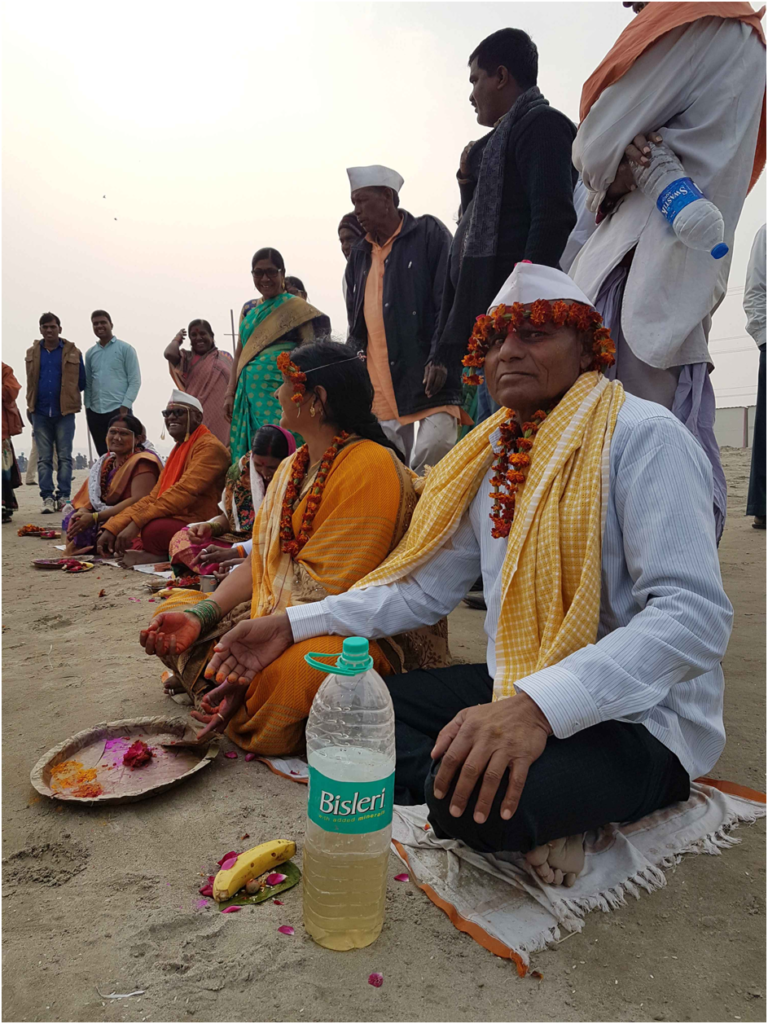






Check out more on the INTACH ICH Archive:
https://icharchive.intach.org/Detail/collections/81
Cultural Documentation of River Ganga from Gaumukh to Gangasagar – Varanasi District
Cultural Mapping ProjectsThis Namami Gange project is being undertaken for the Jal Shakti Ministry, Government of India, under the National Mission for Clean Ganga (NMCG) scheme. INTACH is assisting the Ministry in the capacity of a knowledge partner. Three divisions of INTACH namely; Natural Heritage (NH), Architectural Heritage (AH) and Intangible Cultural Heritage (ICH) divisions have been engaged in the cultural mapping project, of three aspects natural, tangible and intangible assets along Ganga.
The objective of the project is to conduct field investigation and document existing cultural assets on either side of the river Ganga (within a radius of 5Kms, starting from its source, i.e. Gangotri, down to its point of dispersal at Ganga Sagar) and to produce for the ministry a detailed, illustrated report based on the primary and secondary resources available.
Varanasi District
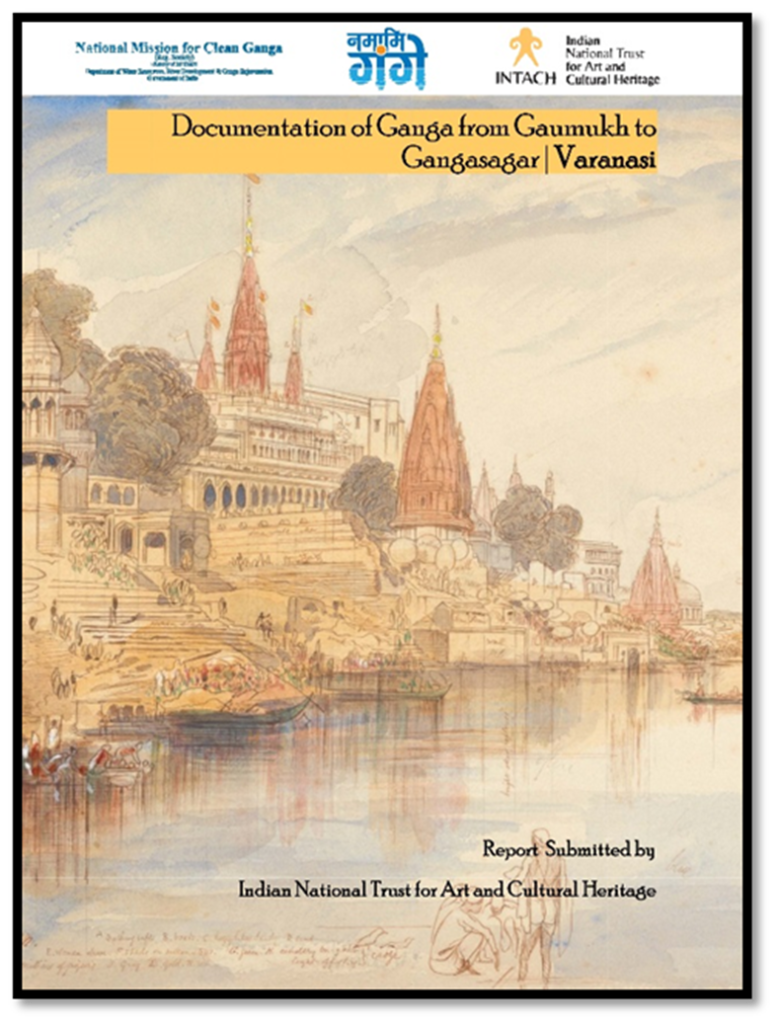
Kashi, Banaras or Varanasi reflects a unique identity that has resulted from the combined living memory of the communities settled here, and the multi-dimensional cultural influences accommodated by the city over the years. One of the most ancient cities of the world, it is a repository of heritage, with a series of invasions and inhabitations informing its secular and spiritual nature, each carrying with it a plethora of both intangible and tangible properties, social contracts and related norms of knowledge,traditions and customs.
The steadfast river Ganga, the famous galis, the magnificent ghats, the countless temples, the kunds and places of religious interest, the historic Banaras Hindu University, the sadhus and varied cults, the profound theories of life and death, the commerce, the craftsmanship and culinary flavours, and the vitality of the Banaras gharana and its exponents in the field of music and dance, make the intangible cultural heritage of Varanasi truly exceptional. These intangible inheritances have been listed and documented in this report. The report also highlights the connection of the river Ganga with the city and its people. From the daily Ganga aarti to the last rites and rituals, the river plays a very crucial part in the lives of its residents and the millions of tourists and pilgrims that arrive here for its darshan.


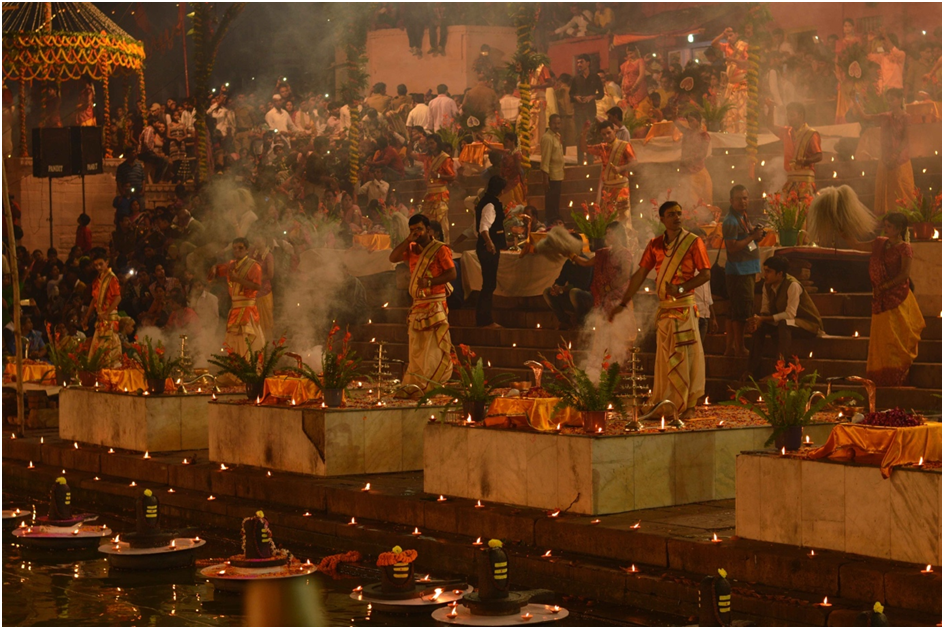






Check out more on the INTACH ICH Archive:
https://icharchive.intach.org/Detail/collections/81
The Ramayana Project: Vignettes of Ramayana
Outreach Activities Projects Research and Documentation of ICH ElementsThe essence of the Ramayana has been expressed in a diverse array of regional cultures and artistic mediums across India. In an effort to review the transmission, mobility, adaptation and concrete expression of the Rama theme among different communities and regions in India, and to study at close quarters the power of the ‘oral word’, a series of films have been made under the Ramayana Project of the ICH Division.
One of the most important literary works of ancient India, the Ramayana has had a profound impact on art and culture in the Indian subcontinent and South-East Asia.It’s stories defy categorization of art as folk or classical, rural or urban, textual or oral. Literary, oral, kinetic and pictorial aspects intermingle to generate multiple renditions of the text in different locales and contexts, each rendition with unique variations and linguistic distinction.
These 17 short films aim to understand and capture the ethos of the Ramayana. They portray how the story in the epic has changed to include local flavour without losing the central theme and message. The films, through experts, bring out the nuances of the distinct Ramayanas as performed in different parts of India.

For instance, the Yakshagana films from the region of coastal Karnataka illustrate how the performative aspect of the text makes it fluid, accessible and adaptable. It accounts for its preservation, survival, and transmission; with the two distinct styles within it appealing to both a rural and urban audience. These films look at the origins, structure, unique features, character-creation, and training aspects of this art form through exponents, creative artists and scholars in the field like Prof. M. L. Samaga, Dr. Prabhakara Joshy, Prof. Purushottam Bilimale, and Keremane Shivananda Hegde.

Giving the perspective of a scholar, DrShastri quotes Valmiki on how ‘grief flows as verse’, and how the story has impacted the world, to stress the universal appeal of the Ramayana, while DrRomilaThapar gives the historian’s view on the faith and belief element of the narrative. The perspective of an institution is given through interviews with well-regarded acharyas of the Chinmaya Mission, an institution engaged in the dissemination of Vedanta, the science of the self as expounded in the Vedas, particularly the Upanishads, and other Hindu scriptures such as the Bhagavad Gita and the Ramayana.
Telling the story of the Ramayana through string puppetry, puppet master BhaskarKogga Kamath says that Uppinakudru puppetry, the puppet play of Yakshagana, is an art form that existed as early as the 12th century, as mentioned in DaasaSahitya and SharanaSahitya. His organization goes back 350 years, with the art form, taught in the guru shishya tradition, incorporating the history and culture of 6 generations. However, the lack of interest and enthusiasm in the current generation toward this dying art form may well be its death knell.

A still from the Uppinakudru Puppetry film
The Ayodhya films express the deep integration between the ethos of Rama and that of Ayodhya. The common man of Ayodhya is far removed from the commercialization, and pomp and show, associated with Rama. The concept of Rama, his story, his values is a part of the daily life of the residents of this city. The devotion with which people touch the waters of the river Sarayu speaks volumes of their belief about the river and its importance to the city. For them, it is linked inextricably with Rama.
For more information please check the link: https://icharchive.intach.org/Detail/collections/67
Coffee Table Book -KarmasuKauśalam: Excellence in Action
Outreach Activities Projects Research and Documentation of ICH ElementsThis beautifully illustrated coffee table book was created by the ICH Division for the LalBahadurShastri National Academy of Administration (LBSNAA) at Mussoorie. Made to commemorate 60 years of the Academy as a premier institution to train officers of the civil services in India, this publication contains rare old photographs and an engaging text replete with the musings and memories of the Academy alumni and instructors. It captures the wide range of activities and studies taken up by the officer trainees, and encapsulates the true spirit of the dictum ‘unity in diversity’. The division worked on various aspects of the publication to prepare the LBSNAA Coffee table book, which was printed both in Hindi and English. It was released by the Prime Minister of India on 31st October, 2019, during the Aarambh Conference for Officer Trainees of the 94th Civil Services Foundation Course at Kevadia, Gujarat.

Cover of KarmasuKauśalam: Excellence in Action, the coffee table book on the LBSNAA

The release of the LBSNAA Coffee table book by the Hon’ble Prime Minister, Shri NarendraModi, at Kevadia, Gujarat, on 31st October, 2019
Documentary on the Raas (Raax)Mahotsava of Majuli, Assam
Outreach Activities Projects Research and Documentation of ICH ElementsAn audio-visual documentation project, Raas (Raax)Mahotsavaof Majuli, was undertaken by theINTACH Assam Chapter and ICH Division. The detailed documentation outlines aspects of the Raas (Raax)festival held at Majuli in Assam, and its significance in the life of the people of the world’s largest river island. The film looks at four Satras—Uttar KamalabariSatra,DakshinpatSatra, SamaguriSatra and GaramurSatra—as well as the Mising Community’scelebration of this festival. While the ingenious use of masks is one of the primary aspects ofthe SamaguriSatra, contemporary mass cultural elements have made inroads into the GaramurSatra presentation. The Mising celebrate the Raas in their individual style, not so much as an extension of religious influence, but as an adaptation of borrowed elements from the mainstream celebrations of various Satras. The film has been directed by filmmaker Reema Bora.

Performing Freedom: Denotified, Nomadic and Semi-Nomadic Communities
Cultural Mapping ProjectsDenotified and Nomadic Tribes/Communities (DNTs) are the most marginalized social groups in Indian society. A total of 126, presently estimated to be 150, tribes/communities, were labelled and listed as ‘Criminal Tribes’ by the colonial British government through various legislations, beginning with the ‘Criminal Tribes Act’ of 1871. On the recommendations of various statutory bodies appointed by the Government of India after independence, the ‘Criminal Tribes Act’ was repealed in 1952. However, the apprehension that their free movement may cause ‘nuisance’ led to the enactment of the ‘ Habitual Offender Act’ under which these communities continued to be under a highly ‘biased’ surveillance until very recently. The stereotypes and stigma engrained in the general view, for nearly five decades after independence, denied these communities access to any meaningful citizenship rights and they had practically no access to land, education, livelihood, healthcare, and human rights.
On the appeal of DNT Rights Action Group, the Government of India appointed the National Commission for the Denotified, Nomadic and Semi-Nomadic Communities in 2005. In order to advice this commission, a study has been brought out, under the guidance of Dr. Ganesh Devy, to provide information related to the cultural expressions such as language, performance traditions, art forms, music, dance, and festivals of these communities. To study and analyze the intangible heritage components of these communities, and their co-relation to their livelihoods, this project was undertaken by Prof. Devy and the Dharwad Chapter of INTACH. The communities studied include the Lambada, Seharia, Banjara, Gondhali, Doombari, Potraj, Nathpanthi, Nandi, Pardhi, Ghisadi-Lohar, Bahuroopia,and Vasudev.

for more information follow the link: https://icharchive.intach.org/Detail/collections/119
ICH Listing and Documentation Project: Endangered traditional Cuisines of Jaisalmer Region
Research and Documentation of ICH ElementsA project on the documentation of endangered traditional cuisines of Jaisalmer region was undertaken by Gwalior Chapter to document and digitize the unique recipes with the aim to give life to many lost traditional cuisines.With time old ladies and chefs who were masters in these recipes will disappear from existence.
During the primary survey, it was seen that the whole cuisine of the Jaisalmer region is divided based on the different caste prevailing in the community. Furthermore, these castes are divided into various other classes of community. For instance, Muslim community is further divided in various classes similarly Hindu community is separated by various classes. These communities use same local ingredients to cook food but their cooking “recipe” is different from each other.
These facts emerged from the survey and research and there have been drastic change in the food pattern of this region in last 25 years that needs to be noticed and documented. The reason behind this change is the tourism development in this region which has become the most significant economic activity leading towards modification not only in lifestyle but also in the eating patterns. As Jaisalmer has become important tourist destination, varied global cultures including their cuisines have entered in the houses of the Jaisalmer too. In this situation, it was decided to list and document the food customs of this region. The chapter has compiled 60 vegetarian recipes which can be tasted during the special festive occasions in the houses of Jaisalmer though most of them have now been modified as per the preferences of kitchens.
The survey is descriptive and exploratory whereby aspects of the available resources in region and the condition existing are taken into consideration. At the same time potential for preserving the traditional recipes are also studied. It is a study of what was and what is and does not include experimentation. The approach includes both to survey and to document the traditional cuisines of the Jaisalmer region. Based on the survey, the whole cuisine of this region is classified as shown in the flow chart.

Recipes are further divided into Lost and Living recipes. Lost recipes are those, which are no longer prepared or cooked in any kitchen of Jaisalmer. These are disappearing from day to day life of the people. Even the preparation of cuisines during special occasions like the royal Dushhera procession have stopped due to the fact that ritual of royal Dushhera is discontinued. As a result of this these recipes have become extinct. Whereas, living recipes are those which still find place in the kitchens of Jaisalmer. Although they are modified a little as per the requirement but are still in practice.
Documenting Traditional Games in Temples of Bengaluru
Projects Research and Documentation of ICH ElementsFrom game boards in the Harappan site of Dholavira to paintings in Ajanta depicting people playing board games, to our epics where major events unfold around board games, India has a rich and deep tradition of playing various board games. These games and game boards form part of our city’s intangible heritage.
The main aim of this research, by INTACH Bengaluru Chapter, 2019, is to document the games which were played in temple complexes and elsewhere such as kattes (platforms around trees), mandapas, kalyanis and other vernacular structures. It will focus on the city of Bengaluru and its immediate surroundings. There are many temples which have engravings of game boards such as navakankari (Nine Men’s Morris), variations of aaduhuliaata (Tigers and Goats), vimaana, mancala etc, on their plinths, kattes, steps, edges of platforms etc.
The following games of temples were found and documented in detail.
ChowkaBarah is one of the oldest board games of India that is still played in some parts of the country. It is known as Chowka Bara in Mysuru and as Chakaara or Chakka in north Karnataka. This game is similar to ludo and can be played by 4 players. It is a game of chance that is played with cowry shells (called kavade in Kannada).
AaduHuli-(Bagh Aur Bakri) (Credits: KreedaKoushalya) (Found in Bull Temple) AaduHuli is a traditional board game from Karnataka, South India, inspired by hunting practices. The game involves 2 players, one controls 4 tigers and the other controls a flock of 16 goats.
Aadu Puli Aatam– This is a two-player game of skill, strategy, and thinking like chess. There are 3 tigers and 15 goats. The tigers try to kill the goats while the goats try to corner the tigers so they cannot move. Through this game, the players are thought the importance of teamwork, how united and well-guided goats can pause the movement of powerful tigers. And also how to feed on our prey efficiently.
SolahSeedi – is a battlefield game for two, where each player has 16 equally matched game pieces. The aim is to occupy enemy territory through strategic moves and planned efforts, thus defeating the opponent. It is a great way to improve strategic thinking and planning. There are very particular and fixed rules to this game, much like how battles were fought in real life in the olden days.
Dahdi -This is a strategy game in which the aim is to get as many points as possible by getting three pieces in a row. Two players are given 9 coins each. The players try to move them to get 3 coins in a row. Although the purpose is similar to noughts and crosses, the game is far more complex as coins can be moved and the opponent’s coins can be removed. Dahdi is a survival game where you need to anticipate your opponent’s moves.
In today’s time and age, the use of temple games is almost extinct. The condition of these engraved games is bad. Most of the impression games are diminishing and those whose condition is still good are not played at all. The whole purpose of these temple games was to promote community gatherings and activities in the temple complex. It was a recreational as well as a social activity. Most of the people visiting the temples are not interested anymore in playing the games. At the same time, there are initiatives to bring back these traditional games by organisations like Kaavde, KreedaKoushalya etc. Their main intention is to introduce future generations to these games and invest in the joy of playing them. These games are being brought back in the form of board games and kits. Spaces, where people can gather and play these games, are cropping up to replicate the community activities happening in the temple.
Check our ICH Archives link for more information:
https://icharchive.intach.org/Detail/collections/217
Prayagraj Kumbh Mela Documentation
Projects Research and Documentation of ICH ElementsThe 2019 Kumbh Mela of Prayagraj was documented as part of the Namami Gange documentation project for the NMCG. Mythological time and historical chronology may not be contiguous or of equal dimensions, but they interlock and overlap in popular imagination at the Kumbh Mela, when Prayagaraj becomes one of the most crowded places on earth during this festival in the Hindu month of Magh.
The extensive report covers the Kumbh festival and its origins, the significance of the Kumbh Mela at each place—Haridwar, Nasik, Prayag and Ujjain, the related mythological tales, and the various bathing and other rituals that attract lakhs of devotees. The various types of Kumbh, historical records and references, by foreign travellers and from local sources, the conflict between the pandas (priests) of Prayag and the British and the imposition of Pilgrim Tax, and other interesting facets that trace the evolution of this important socio-religious phenomenon in the Indian cultural landscape, are included in the report.

Socio-cultural Study of Seharia Tribe of Rajasthan and M.P.
Cultural Mapping ProjectsA project on the socio-cultural study of the Seharia tribe was undertaken by the SawaiMadhopur Chapter. The detailed report in Hindi comprises visual and written descriptions of the social systems and culture of the Seharia tribe residing in the Baran and Kota districts of Rajasthan and the SheopurKalan district of M.P. The tribe’s agricultural income is marginal but they get substantial additional income from working in the forests and collecting minor forest produce such as honey and edible gums, manufacture of kattha, collection of chironji, and from the tapping of the Salai tree. The report gives information on the history, religion, language, folklore, festivals, ornaments and attire, food and kitchen habits, marriage, birth and death rituals of the Seharia. The folk arts, crafts and performing traditions have also been documented.


Swang performance of the Seharia

Intangible Heritage Aspects of Sacred Groves and Deities in North Western Ghats of Maharashtra
Research and Documentation of ICH ElementsThe Project aims at documenting the intangible heritage of the sacred groves, its customs, beliefs, folklore, rituals and the changes it has faced. Its major focus is in and around Pune in Maharashtra.
Pune city originated as a tiny agricultural settlement called “Punnaka” or “Punnyavishay”, in the 8th century AD. In the mid-18th century Pune became the seat of the Peshwas and grew as a flourishing town. Later in British rule, when the Pune Municipality was formed it started growing exponentially; turning into Pune Metropolitan Region of over 1600 sq.km.
But apart from being the urban town throughout history, Pune has another side to it too. It harbours rich bio-diversity, which is recognised and protected by govt at various sites. And it also has natural heritage sites traditionally marked, worshipped, looked after and managed by the local communities as their traditions.
Nature worship which is an ancient Indian tradition and considers all forms of life as sacred, is also found in these rich natural heritage sites. Sacred Groves, natively known as “Devrai”, are forest patches conserved traditionally by communities in the name of a deity. It is a pre-historic practice and so these groves are often the last patches of the original vegetation in that area which houses rich endemic biodiversity. These Groves are also repositories of rich oral traditions about many customs and traditions and the related myths and stories centring around the concept of a “presiding deity” in most of these groves.
Methodology adopted for the study is as followed:
⦁ Literature survey, interaction with subjects
⦁ Photo documentation of shrines and associated objects.
⦁ Interviews of people, learned and associated people
⦁ Video and audio documentation of the folklore, custom and traditions.
List of sites surveyed in this are as follows:
⦁ Durgabai- Ahupe
⦁ Bhimshankar
⦁ Morachi-Chincholi
⦁ Ajeebali-Chikhalgaon
⦁ Bhuleshwar
⦁ Ghol
⦁ Padsthal
⦁ Jejuri
⦁ Nageshwar
⦁ Mandharadevi.
The report gives a basic overview of the history of these sites and how its present has been shaped. It goes on to give details about the traditions, beliefs, folklore and rituals associated with these places. Its a starting point for the study of this community based heritage which is getting neglected or over exploited due to resource extraction.
The Project was undertaken by INTACH Pune Chapter along with INTACH ICH.
Cultural Mapping of the Sauras in Odisha
Cultural MappingSaora is one of the Ancient tribes of Odisha, which is also mentioned in the epics Ramayana and Mahabharata. According to local legends, Savari – Rama’s devotee in Ramayana was from the Saora community. Though Odisha is the main land for the tribe, small number of people are also found in the states of Andhra Pradesh, Jharkhand, Madhya Pradesh and Assam. In earlier times, the King of Gajapati (Gajapati is a district in Southern Odisha,) owned tea estates in Assam, at the time some of the people from the Saora community migrated to Assam to work there.
They have their own native language called Sora, which is a Munda language and they are one of the very few tribes of India that have a script for the language, Sorang Sompeng.
They are known by various names like Saora, Sora, Savara etc. Though government recognises 25 sub-divisions of this community, based on occupation, food habits, dress patterns, social customs and traditions. But they themselves are not aware of this distinction, they believe there are only 2 types of Saora, Lanjia Saora- who live on the hills and still practice their unique customs and traditions, and Sudha Saora- who live in the plains and have assimilated into the mainstream society.
The highland areas of the Gunupur division in Rayagada, and Parlakhemundi in Gajapati, are the main habitation pockets of the Saora in Odisha. The natural beauty is not the only thing that is offered here. Mythology and ancient kingdoms have left their footprints in the region, as storied for the future generation.
This community is a rich bundle of heritage. It has unique art practices, religious customs as well as a dying tattooing tradition called ‘Tantangbo’. They are loosing their heritage due to conversions, modernisation as well as lack of records of their history. Thus its pertinent to record and further their dwindling customs.
Report undertaken by Srishti Mandaar and Anubhav Das of The Tribal Fund for Documentation and Conservation, under the guidance of Nerupama Y. Modwel, Director ICH division.
ICH Compendium: Directory on the People’s Museums and other cultural spaces
Outreach Activities Projects Research and Documentation of ICH ElementsThe ICH Division has initiated a project on creating a Directory on the People’s Museums and other cultural spaces, which are intensively involved in safeguarding the living intangible cultural traditions, and reviving the traditional arts and crafts of varied ethnic communities residing in remote areas of North-East India.
In this regard multiple visits have been made to Sikkim, Meghalaya, Arunachal Pradesh and Assam.
This project is ongoing.
Cultural Mapping of the Khiamniungan Nagas
Cultural MappingThe INTACH Nagaland chapter prepared an exhaustive report on the Khiamniungan Nagas for the ICH Division. An attempt to document the heritage, traditions and living culture of the tribe, the report focuses on their daily activities, customs, marriage systems, birth rituals, folklores, ornaments, performing arts, religion, tattoo traditions, crafts, textiles andmuch more. The Khiamniungan-Naga make up one of the sixteen tribes of Nagaland, who inhabit the sub-divisional headquarter of Noklak under the Tuensang district of Nagaland.


An enduring and profound signature in the cultural heritage of the Khiamniungan is the “log drum”. An intrinsic symbol in every village Khel, it is usually in the possession of the Khel for decades, sometimes even generations before it is replaced due to damage. Some of the festivals of the tribe have also been documented like the yahpong festival, khaolsaose-Hoka festival and many more. The folklores, myths and superstitions of the tribe are also featured in this study.
Cultural Mapping of Apatani Tribe, Arunachal Pradesh
Cultural MappingThe state of Arunachal Pradesh in India is a land of diverse ethnic communities and cultures. It hosts at least 26 major tribes and several hundred sub-tribes and is said to be the most linguistically rich state in the country with over 90 different dialects. Arunachal Pradesh largely remains on the fringe of mainstream documentation and study as a result of its remote location, difficult terrain and an inaccessible topography. Thisstudy looks at one particular tribe in the state, the “Apatanis” whose crafts, traditions, beliefs and skills have survived over centuries but are now threatened by the effects of modernity, globalization and cultural assimilation.
The Apatanis are found in the Subansiri District of Arunachal Pradesh. The District is named after the Subansiri River, atributary of the Brahmaputra. The Lower Subansiri District presents a mosaic of various different cultural traditions of the many tribes that live there. It is divided into three sub-divisions, namely Ziro, Raga and Yachuli. The Apatanis are mainly found in the Ziro valley which is also known as the Apatani valley. The valley has very fertile land and is covered with bamboo groves and dense blue pine trees. Besides the Apatanis we also find the Nyishi, Hill Miri and Tagin, and interaction amongst these tribes has resulted in the formation of a unique mega-cultural landscape in the region.
People of the Apatani tribe identify themselves as Tanii. Like the other tribes in the region, the Apatanis claim to be the descendants of the legendary ancestor Abo-Tani. They believe in the Donyi Polo, the worshipper of the Sun and Moon, and also in numerous sylvan deities. A small number of Apatanis also converted to Christianity over the years. It is important to note that the Apatanis do not have a script of their own and their material culture, made out of wood and bamboo, is easily perishable. In a scenario where there is no written script or archaeological findings to be preserved, it becomes necessary to understand the intangible cultural heritage which is still being orally transferred from generation to generation by members of the tribe. These oral narratives have been documented so that their traditional practices such as rituals, knowledge systems, festivals, traditional crafts and ethnic cuisine can be preserved for the posterity.




Cultural Mapping and Audio-Visual Documentation of the Intangible Cultural Heritage of Varanasi
Cultural Mapping Projects Research and Documentation of ICH ElementsVaranasi, one of the most ancient cities of the world, is a repository of cultural heritage resulting from the continuous historical events of invasions and inhabitations, secular and spiritual influences, each carrying with it a plethora of both intangible and tangible properties, social contracts and related norms of knowledge, traditions and customs. Kashi, Banaras or Varanasi assumes a complex identity that has resulted from the collective memory of generations of communities settled here, and the multi-dimensional cultural constructs accommodated by the city over the ages. The steadfast river Ganga, the famous galis, the magnificent ghats, the countless temples, kunds and places of religious interest, the historic Banaras Hindu University, the sadhus and their varied cults, the profound and overwhelming theories of life and death, the commerce, craftsmanship and culinary treats, the vitality of the Banaras gharana and its exponents in the field of music and dance, all add up to give Varanasi its special place in the scheme of things.
Under the guidance of Ms. Nerupama Y. Modwel, the two researchers from ICH division, Ms. Gunjan Joshi and Ms. Nishtha Gorke, collected information/data during numerous visits to Varanasi between October 2015 to March 2017. Numerous local people were interviewed for their views and personal stories. The conceptual framework spanned extensive interviews with community members, knowledge/wisdom holders, and representatives from cultural and educational institutions, craftsmen, performance artists, personal and individual data, such as family histories and photographs, the dynamic and sometimes indefinable social assets of cultural heritage. Additionally, nuances of city life were observed and captured through videos, photographs and spontaneous interactions which revealed memorabilia accumulated through generations and stored in various forms by those who settled here.
For the purpose of this study, categories were created to document the intangible inheritances found in the city and the in house publication categorizes this collected data under the following themes:
- Traditional knowledge
- Art and craft
- Cuisine
- Oral traditions and Performing arts
- Fairs and festivals
- Ghat and Ganga rituals/other practices
This exhaustive study is not only relevant to study the present condition, transformations and transitions of the varied ICH found in the city, but also tries to bring multiple cultural facets under the umbrella of ICH. The cultural mapping of the city, revealing the multiple layers of its intangible heritage, has been attempted by the division and presented in this publication. A mix of primary and secondary data, this publication would be helpful to gain insight of the mixed culture of the city and can be used as a starting point for further study by researchers. As part of the project a 2017 calendar was inaugurated on INTACH’s foundation day. A short video documentation and a tourist brochure cum map have been created as well.
ICH Documentary : ‘LIFE IN A FISTFUL OF RICE’
Research and Documentation of ICH ElementsThe ICH Division undertook a project on Documentation of Rice culture in Northeast region of India. For this, three states namely; Assam, Meghalaya and Nagaland were chosen for the research and documentation. The imagination, cultivation, economy, and consumption of rice is constitutive to the cultural identity of communities across India. The ICH Division undertook an audio-video documentation of the intangible, cultural and material aspects of rice cultivation and its significance in various aspects of life in different regions of the Northeast, with special emphasis on Nagaland, Meghalaya and Assam along with a publication (under process) for the same. The above documentary was entered for various international film festivals in the coming year. The six months of dedicated primary and secondary research and hard work reaped along with the rice of the region!
Due to the collective and wholehearted efforts of a young and talented Mr Tashi Gyamba (filmmaker) and his team and guidance and mentoring from Ms Nerupama Y. Modwel (Director, ICH) and Mr Surajit Sarkar (Associate Professor & Coordinator, Centre for Community Knowledge, Ambedkar University, Delhi) the result has been a well-made documentary. The documentary has entered for various international film festivals. It has already been selected for two of these, i.e. the Docs without Borders Film Festival at Nassau and Garifuna International Indigenous Film Festival in California.
For the first time, INTACH’s documentary has applied for a certification and has got a ‘U’ certification from the governing apex body; Central Board of Film Certification (CBFC) which is remarkable. This certification will help the documentary to be screened at any public platform where viewer discretion is required. Also, any documentary/video-audio needs to be passed by the CBFC before it gets screened into the public domain.
Lifestyle of Sedentarised Nomadic Gujjars of Jammu Plains
Research and Documentation of ICH Elements
The Project was initiated by the Jammu Chapter to document the Lifestyles of Gujjar Community with the aim to assess and understand the lifestyle, socio-economic status of Dodhi Gujjars of Jammu plains. The Gujjars are originally a nomadic pastoral tribe.
The dodhi Gujjars or Banhara Gujjars mainly rear buffaloes and migrate shorter distances of about 50 kms from their base. Their animals are bulky, requiring good quantity and quality of fodder and sufficient water. A few of them also supplement their income from agriculture and forestry. During the summer months, Dodhi Gujjars migrate to Jammu from the adjoining state of Punjab for grazing purposes.
They are exclusively engaged in milk production and rearing livestock. The economy of Gujjars depends on cattle rearing while a few are also involved in agricultural activities. Very few of them own cultivable lands. This study throws light on the importance of livestock in the lives of these tribal communities. They store milk everyday and then convert it into butter/ ghee, cheese, milk bread known as Kalaris and then sell this to many Halwais (Confectioners). The economy is totally dependent on milk products.
Gujjars are quite hospitable and well –cultured. Known widely for their nationalistic spirit, Gujjars follow their own kinship and tradition. Gujjars of Jammu plains have maintained their own culture and linguistic identity. The tribal community has an exquisite tribal way of dressing style for both men and women. They wear colorful turbans with a unique style of wraping which is a mark of the Gujjar community.
Traditional family practices of DERAS among Gujjar tribe
The Gujjar have divided themselves into three principal social kinship groups:
- The dera(household)
- Dada –Porte(Lineage), and the Gotra (clan)
- Kunmbha
The Gujjars of the entire state of jammu and Kashmir speak Gojri which is considered an Indo- Aryan language. Linguists have traced the origin and practice of Gojri language to the BC era. The language is closest to Dogri, Pahari, Punjabi and Haryanvi. The Gojri speaking people constitute the third largest linguistic group of Jammu and Kashmir after Kashmiri and Dogri speakers.
Gojri has as strong tradition of folk and oral-lore which includes folksongs, ballads, folk tales, proverbs, children’s literature etc. Taja, Noora, Meerian Dhandi, Bharisyoe, Noor Beguma, Munshi (Qanchi) are the top ballads of bravery and valour of Gujjars.
Bait is the most important Gojri Sufiyana music and is sung in beautiful vales, forests and meadows. Bait is simply vocal music with no instrument used. The Bait comprises of poetry based on love, ethos, mysticism and some glimpses of philosophy.
Gujjar community has been expert at embroidery which is quite evident from the embroidered Gabbahs, Namdahs or Maatu(mattress) or the embroidery on blankets. Crotchet work is done with wool; glass or plastic beads woven with thread as jewellery, and colourful threads worn with the religious Tabeez are amongst the many examples of the artistic expression of the Gujjjar Community.
ICH Documentation Project: Thateras of Jandiala Guru
Research and Documentation of ICH Elements
The project on the Documentation of the Thateras was taken up by the Punjab Chapter with the aim to document the Craft: as a Living Cultural Heritage of Jandiala Guru. The tradition of Thateras and their craft is a magnificent journey of place and people in and through time. The tradition of the art and craft is called ‘Living tradition’ as it is expressed through the knowledge system transmitted from generation to generation and its products are continually relevant to the people through generations. The craftsmen living in Jandiala have been doing this work for the last eight or more generations.
Craft, Industry and Market:
The work of Thateras is categorized as a small – scale industry and the craft as a cultural heritage. Hence the raw material and its products are taxed on the pattern of small scale industry. It affects the work negatively as the utensils become costly and do not sell. The work of the craftsmen is further affected by the presence of the middle man or the local distributor as the profit is shared by him. The operation of this ‘small scale industry’ is two –tiered which doubles the exploitation of the craftsmen and the benefit of the middle man. Since most craftsmen do not have enough capital to buy the raw material, they remain dependent on the distributor who provides them metal by weight and takes back the finished product by weight not by number of units produced by them as if it were also the raw material without any value addition. Hence the need to promote this work as a skilled craft.
Indigenous Practices of the Tribes of Palani Hills
Cultural Mapping ProjectsThe INTACH Kodaikanal chapter with the support of ICH Division undertook a project on – ‘the people of Palani hills’. The report for the same was submitted. The report has been written by Ms. Nishita Vasanth and Priyashri Mani, INTACH Kodaikanal. It is a well written account of various aspects covered under the project with special reference or focus on the intangible cultural heritage (ich) elements of the people of Palani hills.
The areas covered under this report include the details of the origin and historical evolution of the people of Palani hills, their livelihood, sustenance strategies, their heritage and traditional practices. The communities which have been covered under this project include the indigenous Paliyans and Puliyans, the Mannadiars, Arunththiyars, Aasaris, Telugu Chetniks, PirimaliKallars, Sri Lankan repatriates and others. The report is illustrated with important maps, images, datasheets strategically placed, to help the reader in understanding the complexities revolving around the subject. Not only has data from various relevant organisations has been procured and used but there is data collated on ground (over an eight month period 60 villages were studied) through personal interviews, videos and photo documentation.
In the chronological order of study, the report describes the Dolmen people; the earliest inhabitants of this place. This was followed by a study of Paliyans – the hunter-gathering community and the Puliyans. The Paliyans celebrate ‘Boothanacciamman Festival’ a dance festival which goes on till late night. The Paliyans and other communities too share similar cultural traits. There is folklore about the origin of Puliyans and formation of ‘Periyur’ (big village). It is related to ‘ManjamNeeradumVali’ spring incident which led to the formation of various communities. The report has several other references to folklore, customs and rituals of several other communities.
Cultural Mapping of the Kannauras of Himachal Pradesh
Cultural Mapping ProjectsA project on the Cultural mapping of the Kannaura tribe was undertaken by the ICH division in collaboration with the Tribal Fund. Inhabiting the Kinnaur district of Himachal Pradesh, often referred to as the ‘land of gods’, Kannaura is one of the tribal communities of the state.
The Kannaura are proficient in handicraft making. There are a number of artisans in the region who are following their traditional means of livelihood. The garments worn by the people are locally woven, and the style of clothing has remained unchanged. Their beautiful weaving represents the various religious symbols of Lamaism.
Silver is used extensively by the community for making their ornaments. During marriage and other festivities one can find Kannaura women heavily decked up with approximately 3 kgs of silver jewellery. The statues of the deity are also often made up of silver, and this art of making statues of the deities is prevalent in Kinnaur. Kannaura people are known to have maintained their identity till date. Although many of their religious practices are intact, changes have started taking place in the traditions and cultural practices of the community.
Listing of ICH of Lucknow
Research and Documentation of ICH ElementsThe Lucknow Chapter of INTACH undertook a project on Listing of Intangible Heritage of Lucknow. A detailed report for this has been received. The project captures myriad intangible aspects of Lucknow with mention of its historical background, variations in style, material and aesthetics, gender differences, rituals, dance, music, costume and cuisine among others. The documentation provides intricate details about the clothing during the time of the Nawabs such as Chogas, Angarkha, White Dastar, Pagri, Shaluka which were worn by men. Chunnis, Sidhapaijarnas, latbor ka lehanaga, brocade work, zardozi work, odhni worn by women are also documented.
The project follows the unique rituals of Lucknow, which includes Muharram, its history, beliefs and evolution, differences between the sects – Shia and Sunni. The procession of Juloos-e-Mehndi has been described in depth. Aspects like music have also been covered with mention of Gharanas; Qawwal Bachcha Gharana, Tabla Gharana, Sitar tradition, Qawwali Gharana of Lucknow. Folk music which includes tribal and folk music and musical instruments like ektar, dotar, rabab has also been covered. A large part of the work also includes commentary on the special cuisine of the region and a good number of recipes.
‘Gaya- Strings of Faith’, A documentary (55 minutes) – ICH Film Screening
Fairs and Festivals Outreach Activities Research and Documentation of ICH Elements Rituals and Practises Traditional KnowledgeThe ICH Division undertook an extensive project focused on the audio-visual documentation of intangible cultural elements in Gaya, with the primary objective of highlighting and bringing to public attention the lesser-known cultural heritage of the region. This documentation was meticulously crafted by Shri Bappa Ray, a distinguished documentary filmmaker with over three decades of experience in the field.
Titled Gaya – Strings of Faith, the resulting 55-minute documentary goes beyond the well-known Gaya Pitrapaksha rituals, offering a comprehensive exploration of Gaya as a sacred complex. The film sheds light on various aspects of Gaya’s rich cultural tapestry that are either little-known or at risk of fading into obscurity, including the Pitrapaksha/Shraadh rituals, local literature, fairs and festivals, the craftsmanship of Pattharkati (stone carving), local cuisine, traditional wrestling, and the distinctive Gaya Gharana of music.
The documentary’s primary aim is to foster awareness among the public about these living cultural traditions and intangible aspects of Gaya’s heritage, emphasizing the need for their preservation. By doing so, it seeks to engage society in the protection of these vital cultural elements, many of which are integral to Gaya’s identity but are currently under threat.
Gaya – Strings of Faith, produced by the ICH Division of INTACH and directed by Bappa Ray, was first screened on August 1, 2016, at the Multipurpose Hall, INTACH Head Office.
YouTube link for the film:
Gaya: Strings of Faith https://youtu.be/LTPuhywAsOc (long version)
Gaya: Strings of Faith https://youtu.be/B_tTzgmOjhY (short version)
Mapping of Intangible Heritage Project – Pondicherry
Cultural MappingThe ICH Division in association with the Pondicherry Chapter of INTACH is doing a project on mapping of Intangible Heritage in Pondicherry by digitally pinning them on an online map. The first phase of the project was completed successfully with vital additions to the interactive map. This is an ongoing and innovative project. So far 45 new pins has been added and updated to the map which includes a series of 32 street signs with descriptions of how those streets were named, 3 descriptions of built heritage, 10 descriptions of intangible heritage which includes important and interesting information about festivals, local knowledge and craftsmanship. The following is the detail of additions:
This is an ongoing and innovative project which is mostly crowd-sourced. So far many pins have been added and updated to the map which includes a series of 32 street signs with descriptions of how those streets were named, descriptions of built heritage, descriptions of intangible heritage which includes important and interesting information about festivals, local knowledge and craftsmanship.
The pins added to the map include for example:
a series of 32 street signs with descriptions of how those streets were named. For example:
Rue Francois Martin: Governor General Francois Martin is considered to be the ‘founder of Pondicherry’ where he settled as early as 1673, as its first administrator. He was made the first governor general in 1699 and Pondicherry was established as the headquarters of French India in 1701. The urban character of the city began to evolve after he implemented a grid patterned Dutch town plan. Indian weavers and artisans came to settle in Pondicherry due to his initiatives, making it a flourishing trade centre.
descriptions of built heritage:
- the V.O.C. School
- the Small Clock Tower, and
- the Mairie building descriptions of intangible heritage, including:
- Tamil Festival (Veerampatinam Car Festival) and French Festivals (Bastille Day, Armistice Day)
- pins relating to local knowledge and craftsmanship, for example:
Kora Mat Weaving: Mat weaving is one of the earliest known handicrafts and one of the most important practiced in Pondicherry. It was brought to the Villiyanur Commune four generations ago when weavers migrated from Thekkal and Chidambaram, and it is now also practiced commonly in the Kaikalpet, Vanniyar, Rauther and Thuluva Vellalar communities. Across India, mats are weaved with a variety of materials, including jute, coir and bamboo, but in Pondicherry and Tamil Nadu in particular, the kora grass is used. Kora grass grows wild along water bodies and is abundant along the Gingee river and the Kombakkam Lake. The harvested grass is split into two and dried in the sun, which gives it a pale yellow color. Some of the grass is dyed in different shades, which is then woven with the natural grass in patterns of stripes, checks, or floral designs. The craft is traditionally practiced by women in rural communities, and those in Pondicherry work with co-operative societies to purchase the grass at a subsidized rate. Additionally, Pondicherry prisons teach this local trade to inmates as part of their rehabilitation programs.
The goal for the mapping project is to generate more pins using interviews with local people and scholars, focusing on the following themes:
- Festivals
- Ornaments
- Local craftsman
- Performance arts
Jayatu Simhasth -Ujjain Kumbh Mela 2016
Cultural MappingA detailed audio-visual documentation project on the Ujjain Kumbh Mela –Jayatu Simhastha (one of the four Kumbhs of the country) was taken up by the INTACH Dhar Chapter with the support of ICH Division in 2016. The aim of the project was to make a documentary film on the why, what and how of the Kumbh Mela which is celebrated at Ujjain every 12 years when the celestial signs are just right for it to take place, and which amazingly has been attracting pilgrims from across the country for so many years. The film is a detailed documentation of this sacred festival/fair which was again attended by thousands of devotees.
The film showcases the Kumbha Mela as one of India’s largest spiritual gatherings on the bank of river Kshipra, which officially started during the reign of Maratha Ruler Ranoji Shinde in the 19th century. This important event is held every 12 years in Ujjain. The age-old tradition of taking a holy dip in river Kshipra has its own spiritual and cultural value. Through a number of interviews, it highlights the myriad experience of this event by scholars, spiritual gurus and by general devotees.
The sacred groups represented for example by the Hindu Sanatan Dharm Akhada in saffron robes, or the Naga sadhus, or other religious sects or the general public, all converge at the bank of river Kshipra with their firm beliefs. This amalgamation of spiritual culture, religion and sacred rituals together makes the Kshipra ghat – in their belief – a place of heaven on earth. The short film is an excellent effort by the Dhar chapter to do an in-depth documentation of this event. Steps are being taken for further dissemination to the public through screenings of this film at state and National level so people can understand the significance of this fair and festival.
Audio-visual documentation and cultural mapping of the intangible aspects of Gaya
Cultural Mapping Projects Research and Documentation of ICH ElementsThe project on the audio-visual documentation and cultural mapping of the intangible aspects of Gaya city with special emphasis on the sacred components of the city has been completed. Gaya – a city of Hindu pilgrimage has many sacred identities, spaces, rituals, customs and the deep routed culture which were studied and documented in detail.
The project was done with the following focussed objectives:-
- To understand the wider sacred geography of Gaya with its special significance to Pind Daana during Pitrapaksha or Sraadha Paksha.
- To understand the psychology and belief system of varied social groups and communities, who have come to perform the Pind Daana.
- To understand Gaya as a sacred place of holding an important significance of Pind Daana ritual (an ICH element)
- To analyse the role of Gayawaals for providing assistance to the Pandits (who often come from other parts of Bihar)
- To understand the place of Gaya and its significance in relation to Pind Daana.
- To analyse to verify and test the important facts of the city/place and people.
- To study the dynamics of the city during the Pitrapaksh Mela.
Rajput Wedding Traditions
Projects Research and Documentation of ICH ElementsWith the aim to preserve the customs and rituals of Rajput Wedding tradition, the Jaipur Chapter of INTACH undertook a research based documentation project to document the myriad rituals and customs performed during the Rajput marriage ceremony in audio- visual form.
In today’s context, there is scaling down in the rituals and customs of the marriage ceremony. The Rajput marriage tradition has its own distinct style, from traditional Safa (turban) and Poshak(dress) to the custom of folk songs and dances.
The Rajput wedding ritual is considered to be a very conventional and religious affair in the Indian social setting. Twenty two main rituals are performed. These are matching of horoscope, Roka, Tilak or Tikka, Pille Chawal/ Lagan Patrika, Bhaat Nyotna, Ganpati Sthapana/ Dhol Nagare ki puja, Janeu, Pithi/ Baan Dastoor, Tel, Jau Chaddi/ Chajjla/ Moosal, Bindori, Basan, Raati Jagga, Mandap Sthapana, Mairs, Baraat, Pandla, Samela, Sau Arti, Maya Kakash, Phera and the Saptapadi – auspicious seven steps, Khol Bhariya, Kunwar Kalewa, Bidai/ Plang Char and Suhag Thaal.
Birhor Cultural Mapping Project
Cultural Mapping ProjectsBy coming in the contact and influence of other cultures, the Birhor community is leaving their cultural traits. Keeping this in mind a project has been initiated by the Raipur Chapter to study, research, document and preserve the cultural lifestyles of Birhors.
The Birhors are one of the Primitive tribal groups in India spread over Orissa, West Bengal, Jharkhand, Ranchi and Chhattisgarh. Chhattisgarh seems to have the largest congregation of the Birhor People. As Birhor are declining in numbers and are the most primitive tribal group dependent on Nomadic gathering, hunting, particularly for Monkeys in the earlier time. Also they are known for rope making. The Birhors are the primary suppliers of ropes to the peasant communities, so both groups depend on one another and have an exchange relationship. It is believed that Birhors have been descended from the Sun and believe that the Khairwars, who also trace their descent from the Sun, are their brothers
The cultural mapping was done to conserve and safeguard the intangible heritage of the Birhors & also to draw attention of the academicians, researchers, administrators, community, social activists and mass media towards its significance. The study was restricted to Ethnographic and Anthropological descriptions – quantitative analysis & and mapping of their intangible cultural heritage.
The project has been completed under the supervision of Raipur Co – Convenor, Mr Rajendra Chandak and also the Research Team of Anthropology Dept. of Raipur University.
Documentation of the ICH elements in Kozhikode, Kerala
Projects Research and Documentation of ICH ElementsFour projects were taken up by the INTACH Calicut Chapter for the documentation of various ICH elements of Kozhikode in the Malabar Coast of Kerala. The themes for the projects range from ritualistic traditions and performances and indigenous medicinal practices to the age old craft techniques. Through textual and video documentation, the Calicut chapter has listed the following ICH elements:
1. ‘Kadal Vaidyam’ – An inquiry on the indigenous medicinal practices of the fishing community
An interesting indigenous medicinal system has been prevalent among the fishing community living on the shores of the Malabar Coast. The generic local name for this system is ‘Kadal Vaidyam’, which roughly translates to sea medicines. This system of treatment takes its cue from the traditional, ancient Ayurvedic system of medicine of Kerala. The treatment of different ailments common among the fishing community are done using medicinal herbs, locally grown plants, creepers, flowers, fruits, shells, corals, fish and other resources available locally. The project seeks to document this indigenous medicinal system and the various practices associated with it.
2. The making of the ‘Malappuram Dagger’
A video documentation and a report were prepared on the making of ‘Malappuram Kathi’, the dagger of Malappuram. The Kaddara, which is popularly known as ‘Malappuram Kathi’ was used by farmers and farm labourers during the earlier periods. Beacause it originated from the district of Malappuram, it had a certain regional identity. Over time, with the development of technology and changes in lifestyle, the use of Kaddara has been reduced. This has resulted in the closing down of many traditional smithies.
3. Documentation of ‘Kaalakali’
On the banks of river Nila, a folk ritual called KaalaKali is performed. This ritual performance is connected with agrarian traditions and is usually performed by the ‘Cherumar’ or agriculture labourers. The term Kaala Kali is derived from two malyalam words, ‘kaala’ which means bull and ‘Kali’ which means play or performance. The bulls are crafted using bamboo, hay and cloth, fitted with a wooden head. A ceremonial prayer is conducted which is followed by performances. The community members then sing folk songs and dance to these carrying the ox on their head/shoulder.
4. Documentation of ‘Pallipaana’
Pallipaana/Paana is a folk ritual performed to please the Goddess Bhadrakali(Kali). This ritual is seen in the areas at the confluence of three districts- Malappuram , Palakkad and Thrissur. The important part of the ritual is singing Thottam, the folk songs detailing the story of Goddess Bhadrakali. Earlier, many temples used to conduct this performance annually. Over the course of time, the ritual was discontinued in many temples, and the ritual formalities reduced in many others. Only in a few temples is this observed as per the norms practiced by the older generations.
Cultural Mapping of the Bhil Community
Cultural MappingWith a view to upholding and preserving the harmonious coexistence of diverse cultural traditions, the Rajpipla Chapter of INTACH has sought to document the lifestyle and culture of the adivasi Bhil community residing in the Rajpipla area in Saurashtra, Gujarat along the Sahayadri mountain range.
The Bhils are one of the largest tribal communities in India spread over Gujarat, Maharshtra, Rajasthan and Madhya Pradesh. However, Gujarat’s Saurashtra area seems to have the largest congregation of the Bhil people. Regarding the origin of this community, many mythological stories may be found in Puranas, Ramayana and Mahabharata. The project titled A Stroll Amongst Tribal Panorama, opens up with a narrative of the Bhil community and their symbiotic relationship with nature and how the Rajpipla chapter has been instrumental in bringing the local Bhil community’s Intangible Cultural Heritage.
The present convenor, the former queen of the Rajpipla princely state, Rukmini Devi has been instrumental in collecting and recording folksongs even before the INTACH chapter came into being. The royal family has always shared a relationship of bonhomie with the Bhil subjects, which is evident from their folksongs, oral poems centring the king and the royal family. Religion seems to be the fulcrum of the life of Bhils. The religion of Bhils is a mixture of traditional religion with Hinduism. They worship local gods, ghosts and spirits but also local gods, spirits, animals, forces of nature and in celebration of their objects of devotion they participate in various festivities and fairs. They have their oral traditions in the form of folk songs, folklore, folktales and dances which are displayed during ceremonial and festive occasions.
The present project looks into festivities like Shitala Mata Fair, Navratri, Holi , Dev Mogra Festival, Bhadarva Dev fair, Gher Dance, and so on. Shitala, the goddess of Chicken pox and Small pox, is worshipped with much awe by the Bhils. Surrounding the temple of the Goddess, the Bhils celebrate and organize a fair which attracts a lot of people. This special worship is marked by special food meant for preventing skin ailments like pox. Pandurimata, of the Devamogra temple in Rajpipla is worshipped by Bhils wishing general well being. A yearly pilgrimage to the temple is an annual festive occasion. Not only do the Bhils offer regards to the goddess, but they also engage in buying merchandise items and enjoy food of different kinds. A legendary semi historical, semi mythological figure of a hero Bhadarva Dev earns the faith of the Bhil people in the form of a God. His temple sees a heavy footfall of Bhils who perform religious rituals there.
The Navratri festival at the royal palace of Rajpipla allows the Bhil people among others to worship the royal goddess while celebrating dances and community feeling. Similarly, Holi also sees the Bhil community coming together to dance and perform ritualistic customs. Gher Dance in tune with the festive spirits of Holi is a very popular festival of the Bhil community. The aim of this documentation under the initiative of the Rajpipla Convenor, Rukmini Devi in association with Jaivalya Shukla and Naina Jain, has been to reclaim the roots of the Bhils and to revitalize certain endangered and languishing elements of this community. The project also aims at encouraging the age old tradition of fun fair, festivities and music and dances of Bhils.
Cultural Mapping of the Warli community
Cultural MappingThe Dahanu Chapter undertook a study to document the Intangible cultural heritage of the tribal people of Warli in order to identify the exact nature of the linkages between the tribal cultures with the surrounding environment. Under the supervision of the chapter convenor Phiroza Tafti, the project unfolded with rich research inputs by Pallavi Ganju.
The Warli are a tribe spread over Bombay, Nashik and Palghar Districts of Maharashtra and the Dangs and Valsad districts of Gujarat. The project explored different cultural aspects of the Warli community of the Palghar district in Maharashtra with the three-fold objectives being: to identify the different aspects of the traditional knowledge of the Warli people; to map the folklores, dance forms and art of the community and to assess the rapidly disappearing traditional knowledge in the community and the mode of transmission of the knowledge from one generation to the next. Through interaction with artists and other members of the community, the project explored the habitation, dress, food, marriage rituals and natural resources of the community, besides their traditional dances like Shimga, Ranodi, Usalya, Ogalia, etc; Music and Musical instruments; religion including gods like Waghya dev, Narandev, Hirva, Himay and so on, beliefs like Sanvari, Cheda and ceremonies like Zoli, Kaj and so on; folklore like Mahadev and Ganga Gouri, Crab and his wife and so on; songs and typical visual arts depicting nature, women , children, animal and other motifs.
This cultural mapping was important and urgent in today’s scenario. External influences and urbanization of areas which the Warlis have inhabited for centuries are aiding the rapid disappearance of the traditional knowledge systems. Access to this community to gather information for this cultural mapping exercise, has been a very satisfying experience and an eye opener to the simplistic lifestyle of the Warli people surrounded by communities that have almost succumbed to consumerism. The natural resources and wildlife of the region influence their culture in terms of artwork, musical instruments and folktales which form part of their quotidian life. However, the diminishing appreciation of the traditional cultural values of the Warlis by the younger generation of the community has pushed their culture on the verge of extinction. Hence the present project, by documenting the culture of the Warli people, seeks to foreground a negotiation between development and traditional knowledge. Through this study, strategies have been evolved providing a variety of options that can enhance the economic situation of this community as well as preserve their Intangible Culture pitting it against the urban cultural homogenization.
Database on the Status of Intangible Cultural Heritage Research and Documentation in India
Projects Research and Documentation of ICH ElementsA three year long (2015-18) pan India project on identifying and cataloguing the Intangible Cultural Heritage assets of India available in printed form was undertaken by the ICH Division, INTACH, Delhi. The project was led by Harish Benjwal, Senior Research Associate (SRA), ICH Division, under the supervision of Principal Director, ICH Division. The tangible outcome of the project was creation of a web portal (which can be accessed by following the provided link at bottom)
The following is the project brief about the project:
The Indian National Trust for Art and Cultural Heritage (INTACH) is India’s largest non-profit membership organization dedicated to conservation and preservation of India’s natural, tangible and intangible heritage.
The Intangible Cultural Heritage Division of INTACH has worked on various aspects of the subject, including research and documentation, seminars, workshops, and promoting intangible heritage through a series of festivals and awareness creation events. We are now undertaking a project of creating a database on the Status of Intangible Cultural Heritage Research and Documentation in India. It will be a listing of published or unpublished works done in the field of INTANGIBLE CULTURAL HERITAGE, and held, by individuals, Government Organisations, Government aided autonomous bodies, Non-government organisations, libraries and academic institutions.
- Project Details:
Intangible Cultural Heritage (ICH), as spelt out in the UNESCO Convention of 2003, incorporates the knowledge, skills and practices that communities or individuals recognize as part of their unique identity. It promotes cultural diversities and human creativity. This heritage, passed down orally from generation to generation, is constantly evolving and being recreated in response to the environment
It is manifested in the domains of:
- Oral traditions and expressions including language
- Performing arts
- Social practices and rituals
- Traditional knowledge
- Craftsmanship
A large volume of India’s ICH wealth, documented over the last six decades, is stored in printed form with various governmental and non-governmental institutions and academic institutions and individuals. The contents of these works enshrine the creativity and knowledge of some of India’s greatest artistic talents. This is an invaluable national heritage that needs to be preserved for all time and also made accessible to the citizens of the country.
- Scope of the Project:
- Identifying and cataloguing the ICH of India available in printed form in institutions across the country through a process of briefly describing them and making the list accessible to the people.
- Instituting state-of-art digital database and storage systems through the aegis of INTACH and partner institutions to preserve these resources as a whole, in some cases, or an annotated listing in others.
- In the long term, setting up a dedicated website and a virtual network of these repositories and offering online hyperlinked access to their resources, programming schedules etc.
- Standardization and periodic upgradation of the storehouse of such resources. Broadly speaking, the genres of print materials to be covered will include oral traditions, traditional crafts and textiles, dance, music and theatrical practices, cultural practices and traditional knowledge. The exhaustive inventory will archive printed works on the following subjects: folklore, language , mythology, rituals, medicine, health practices, wisdom keepers /knowledge holders, human treasures, educational traditions, nature, enviroment ,oral traditions, music ,dance, musical instruments, paintings, murals, rock/cave art, body painting, house decoration, vernacular architecture, art, building patterns, folk art & skills, production, food ,drink, costume, jewellery, hair styles utensils, forms of greeting, birth rituals, hospitality, games, sport, pottery, life cycle, rituals, disposal of the dead, magic, witch-craft, occult practices, shamanism, marriage, sexual practices, cosmology, philosophy, festivals, fairs, worship, iconography etc.
- Capacity building in conservation, cataloguing, digitization and retrieval of ICH related print materials.
- Instituting outreach and awareness programmes.
- The objectives of the project:
- To bring it into public domain;
- To make it interactive for scholars;
- To create such an archive makes possible virtually instant retrieval of data.
- Most importantly, to prevent needless duplication of research and documentation, thus saving time and resources
- Partners for the Project:
- Local and Regional Government agencies which collect cultural data
- Academics, experts, researchers in social and cultural studies at universities
- Communities, associations, social institutions, Libraries, informal organizations and individuals who/ which collect cultural data
- INTACH convenors across the country
- Beneficiaries of the Project
- The Government
- To have regularly updated data on oral or intangible cultural elements in different communities and regions.
- To facilitate planning and policy-making for safeguarding ICH.
- To facilitate preparation of regional and local museums and archives.
- To raise the standard of living of communities in a sustainable manner
- Academics
- As a living subject and source of social science, science, and ethnographical research
- For developing curricula and teaching materials for schools and universities.
- Entrepreneurs
- To develop cultural elements as creative products which are competitive globally.
- To creative product businesses and market such programmes.
- General Public
- To know the diversity of living culture in our country.

http://intangibleheritage.intach.org/resources/ich-research-and-documentation/
Documentation of ICH of Kasargod
Research and Documentation of ICH ElementsThe Kasargod Chapter of INTACH took up a project of listing ICH elements spread over the two northern districts of Kerala state. A research and documentation team under the coordination of Dr. V. Jayarajan, Convenor , Kasargod Chapter , consisting of an expert Mr P.V Harish and a coordination committee under the chairmanship of artist and folklorist K.K Marar started the documentation with the help of a Survey team and a Technical teams. The team selected the art forms and ICH elements from Kannaur and Kasargod Districts. Through still and video documentation, the Kasargod chapter has listed the following ICH elements:
- Kooli Theyyam- a rare ritual performed in the Karimbalan houses after the death of their ancestors.
- Aati Kalinja- A visiting performance during the monsoon to ward off the evil spirits.
- Narasanna-Traditional fortune tellers of Kasragod districts
- Kalan Kolam- Traditional performance during the last day of Aadi month
- Sreepothi- Sreepothi or Cheeyothi- a rare performance to ward off evil spirits
- Poliyanthram- A folk ritual associated with Diwali in Kasargod
- Nikil Kaanal- A social function to settle the disputes of a particular community.
- Kothamoori- A rare performance of Kannaur district
- Uchabali- A symbolic sacrifice of Malayan community
- Kelipatharam- Visiting performance taking the form of Lord Shiva by Yogi community
- Matahvilasam Koothu- a rare performance of Chakyar community in the Shiva temples of KannurViruthi Koothu- a rare art form of Chakyar
- Seemantham- a ritual for pregnant ladies
- Yakshi and Gandharvan- A magic performance to ward off infertility
The aim of the project has been to document these traditional performances and rituals on the verge of extinction, in order to promote the ICH elements of Kasargod among newer generations of people.
Cultural Mapping of the Santhals, Jharkhand
Cultural MappingThe Jharkhand Chapter through their project sought to unfold the hidden secrets and truths of the culture of Santhals. Documenting the seven dances of Jharkhand like Daantha, Sarpha, Dasai, Dhonger, Singrai, Langre, Rinjha
The project has crossed several stages during which the oral traditions of transforming the culture has come across that has been the primary tool of the Santhals.
The Santhal Habitat pattern, food habits, musical instruments and ornaments used and the culture and social lifestyle has been covered.
Various festivals that are related to the dance of Santhals also have been covered. The Santhal dances and the nomenclature have a very close relation with the festivals.
Each festival like Baha and Sohrai is followed by the dance performance named after the festivals which is a remarkable process. The project has also captured Oral History and literature as seen by Jashmi Murmu, a representative of the community.
The aim of documenting these dances was to protect them from extinction and promoting them to the community. The larger goal was to make government and non government bodies aware of the Santhal culture and motivate them to take initiatives in developing the community economically while keeping their creative expressions intact.
Publications: Daman, Diu and Dadra & Nagar Haveli
Research and Documentation of ICH ElementsA set of three separate volumes on Daman, Diu and Dadra & Nagar Haveli were published in 2014.The detailed cultural mapping of the Union territories of Daman, Diu and Dadra & Nagar Haveli was taken up and this report was then further printed in the form of a publication. The project incorporates the knowledge, skills and practices in which local communities of the region are involved.
Cultural Mapping of Daman
Cultural Mapping Featured ICHThe entire region comprising Union Territories of Daman, Diu and Dadra & Nagar Haveli has a distinct Portuguese style. About 450 years of Portuguese interaction with Asia mainly spread along the Indian coasts has left an inimitable legacy in these Union Territories. This Indo-Portuguese cultural fusion is still carried on by small groups found in the region.
Daman, spread over 102 sq km, lies on the Gujarat coast just south of Valsad. Although surrounded on three sides by the state of Gujarat, Daman is part of the Union Territory of Daman & Diu. This paradise of peace, solitude, and contentment with its coastline about 12.5km along the Arabian Sea (Gulf of Khambhat) was once known as Kalana Pavri or Lotus of the Marshlands.
The history of Daman dates back to the period between 8th and 13th century when it was a stronghold of the Chowda Rajputs. For the next 200 years, the territory came under the rule of Muslim Emperors.
The Portuguese arrived in India and ruled Goa and its surrounding areas from 1510 – 1961. The purpose of the Portuguese coming in to India was primarily commercial, and they settled in the coastal areas as it was necessary to establish strategic colonies to serve them as trading bases. They took over Daman in the 16th century due to its strategic importance on the sea route between East and West Asia. After the signing of a defensive treaty with the local king of Gujarat, the Portuguese presence in Daman, Diu and Goa was complete.
Daman was an important outpost of opium trade to China till the Portuguese remained a potent naval power. Due to the importance of Daman in this opium trade, Daman grew as a popular port and a ship building yard during this time. Being in regular trade with other ports around the opium trade routes, smuggling continued for many years, up until the 1970s.
Cultural Mapping of Dadra & Nagar Haveli
Cultural MappingOn a commissioning by the Government of Daman, Diu and Dadra & Nagar Haveli, a documentation project on the Intangible Cultural Heritage of the Union territories of Daman, Diu and Dadra & Nagar Haveli was taken up. The project incorporates the knowledge, skills and practices in which local communities of the region are involved.
With an area of 491 sq. Km, the Union Territory of Dadra & Nagar Haveli is located on the western coast of India, surrounded by Gujarat and Maharashtra. The region has a hilly terrain to the North-East and East, surrounded by the ranges of the Western Ghats, and is intersected by the Daman Ganga River and its three tributaries. This region has lush green forests, undulating hills and winding rivers, and the climate of the region is generally warm and humid year round, although the humidity varies greatly over the span of a year.
The history of Dadra & Nagar Haveli can be traced to the rule of Koli chiefs who established the settlements in the region and were later defeated by the Rajputs.
Modernisation and Industrialisation has taken a stronghold within the region in the last few years. With all its advantages that modernisation, industrialisation and better education facilities brings, the downside of this movement has been that the youth has started to feel separated from their traditional lifestyle and language . The culture that was once considered to be the identity of the region has started to erode away, which makes it necessary to document this culture before it is forgotten entirely.
This documentation was published in 2014.
Cultural Mapping of Diu
Cultural MappingOn a commissioning by the Government of Daman, Diu and Dadra & Nagar Haveli, a documentation project on the Intangible Cultural Heritage of the Union territories of Daman, Diu and Dadra & Nagar Haveli was taken up. The project incorporates the knowledge, skills and practices in which local communities of the region are involved.
Diu Island, situated at sea level, covers a total area of 38.8 sq km. Situated off the southern tip of Saurashtra peninsula of Gujarat; it is separated from the mainland by a creek and connected by a bridge. The region is lapped by the Amreli district in the north and by the Arabian Sea from Three sides.
Diu, a possession of the Portuguese till the 1960’s, has been well known since the Puranic period. The history of Diu traces its roots to the Maurya rule and the Jain traditions from Diu can be traced back to this period.
Before the Portuguese period, from the 14th to 16th centuries, Diu remained an important port town. Known for trading, especially of woven and dyed fabrics, merchants from various parts of the world came to this region.
Over the last few years, there has been an increasing migration out of the city of Diu resulting in a loss of the culture of the communities. The art and craft items, once known as the ‘identifiers’ for the communities, are under threat.
This documentation was published in 2014.
Documenting the ethno-cultural practices of Bagata tribe of Andhra Pradesh
Cultural MappingThe division undertook the documentation of the ethno-cultural practices of Bagata tribe of Andhra Pradesh in the Vishakhapatnam area.
The material culture of a Tribe gives true distinctive picture of its lifestyle, the living culture in relation to the social organization religion and other ceremonial practices, as well as to other material sides of the tribal’s life. So, the various aspects of material culture of the tribe’s viz., household pattern, garments, ornaments, food style/habit, art and craft, dance and music etc. have projected the distinctive culture of the tribes of Padheru and Araku Valley in Costal Andhra Pradesh in Visakhapatnam district.
The ancestors of the present Bagatas, it is believed, worked as soldiers to the rulers of Golugonda. They say because of their good services with great devotion (Bhakti) as soldiers to the Golugonda chieftains, they got the name Bhakta, which in course of time corrupted to Bhagata and finally to Bagata. Bagatas are pronounced as Bagatha, Bhaktas, Bhagat, Bagodi, Bogad and Bagatas. They are one of the numerically preponderant and ethnically significant tribes of Andhra Pradesh and distributed predominantly in the Scheduled areas of Visakhapatnam district. Bagatas are traditionally agriculturists and life of these people has for generations revolved around seasons.
Documenting the ethno-cultural practices of Kodhu tribe of Andhra Pradesh
Cultural MappingThe division undertook the documentation of the ethno-cultural practices of the Kodhu tribe of Andhra Pradesh in the Vishakhapatnam area.
The material culture of a Tribe gives true distinctive picture of its lifestyle, the living culture in relation to the social organization religion and other ceremonial practices, as well as to other material sides of the tribal’s life. So, the various aspects of material culture of the tribe’s viz., household pattern, garments, ornaments, food style/habit, art and craft, dance and music etc. have projected the distinctive culture of the tribes of Padheru and Araku Valley in Costal Andhra Pradesh in Visakhapatnam district.
The Kodhus inhabit predominantly the hill tracts of Araku valley, Paderu, Munchingput areas of Visakhapatnam district. Kodhus in localities of Paderu and Araku Valley of Visakhapatnam are best known by the common people of as Primitive Tribal Group (PTG). They perform dimsa (a form of dance) accompanied by special drums called dappu (side drum) and thudumu (a big round drum which replicates base drum in a Tabla pair). Usually female members perform the dance while male members beat the drums in a particular traditionally organized rhythm.
Documenting the ethno-cultural practices of Konda Dora tribe of Andhra Pradesh
Cultural MappingThe division undertook the documentation of the ethno-cultural practices of the Konda Dora tribe of Andhra Pradesh in the Srikakulam area.
The material culture of a Tribe gives true distinctive picture of its lifestyle, the living culture in relation to the social organization religion and other ceremonial practices, as well as to other material sides of the tribal’s life. So, the various aspects of material culture of the tribe’s viz., household pattern, garments, ornaments, food style/habit, art and craft, dance and music etc. have projected the distinctive culture of the tribes of Padheru and Araku Valley in Costal Andhra Pradesh in Visakhapatnam district.
The Konda Doras –literally meaning the leaders of the hills – are found chiefly in the scheduled areas of Srikakulam, Vizianagaram, Visakhapatnam and East and West Godavari districts of Andhra Pradesh. They are known for their robust physique, simplicity, smiling nature and love for their land, jungles, ecology, and the entire setups. All Konda Doras speak their mother tongue “Konda” also called Kubi dialect among them which is similar in accent with Oriya but distinct from Oriya language.
Documenting the ethno-cultural practices of Porja tribe of Andhra Pradesh
Cultural MappingThe division undertook the documentation of the ethno-cultural practices of Porja tribe of Andhra Pradesh in the Vishakhapatnam area.
The material culture of a Tribe gives true distinctive picture of its lifestyle, the living culture in relation to the social organization religion and other ceremonial practices, as well as to other material sides of the tribal’s life. So, the various aspects of material culture of the tribe’s viz., household pattern, garments, ornaments, food style/habit, art and craft, dance and music etc. have projected the distinctive culture of the tribes of Padheru and Araku Valley in Costal Andhra Pradesh in Visakhapatnam district.
The Porja is a small hill tribe with a population size of 16,479 (Census, 1991) mainly distributed near the hill slopes of Visakhapatnam District of Andhra Pradesh. They are pronounced as Porja, Parja, Poroja, and Parjah. They are migrants from Orissa state for about 300 years back to the present habitat. The Porjas are expert dancers, singers and musicians. Their Tribal dance is quite unique, and without it they feel their lives would be mundane and meaningless. In the dance, women imitate certain animal movements and elements of nature, while men play the instruments and sing.
Documenting the cultural practices of the Hrangkhol tribe of Barrak valley, Assam
Cultural MappingAssam is the face of North-eastern India and its cultural identity. All states of North-eastern India – Arunachal Pradesh, Manipur, Mizoram, Nagaland, Meghalaya and Tripura – are connected with this state. It is connected with the neighbouring states with nature, bio-cultural diversity, ethnic identity, linguistic similarity, dress pattern and cuisines. The study area, Dima Hasao (previously known as North Cachar Hills) was taken as the base area for writing brief reports about four Tribes: Hrangkhols, Zemes (Naga), Dimasas and Hmars. This area has been chosen because 68.3 % of its population is the Tribal population – the highest percentage in the state of Assam. Secondly, it is an isolated and difficult area where usually the Government officials and in many cases scholars also do not want to come and explore the dimensions of nature and culture.
The Hrangkhols belong to the Kuki Chain. They are few in number in the Dima Haso district and are known for their distinct cultural identity and consolidation. Though almost all of them are now converted to the Christianity, they still maintain the major rituals and dress patterns including the ornaments. They are proud to be associated with the Hrangkhol identity.
Documenting the cultural practices of the Dimasa tribe of Barrak valley, Assam
Cultural MappingAssam is the face of North-eastern India and its cultural identity. All states of North-eastern India – Arunachal Pradesh, Manipur, Mizoram, Nagaland, Meghalaya and Tripura – are connected with this state. It is connected with the neighbouring states with nature, bio-cultural diversity, ethnic identity, linguistic similarity, dress pattern and cuisines. The study area, Dima Hasao (previously known as North Cachar Hills) was taken as the base area for writing brief reports about four Tribes: Hrangkhols, Zemes (Naga), Dimasas and Hmars. This area has been chosen because 68.3 % of its population is the Tribal population – the highest percentage in the state of Assam. Secondly, it is an isolated and difficult area where usually the Government officials and in many cases scholars also do not want to come and explore the dimensions of nature and culture.
The name ‘Dimasa’ most probably stands for the ‘children of the big river’, perhaps the Brahmaputra. In actual practice, the Dimasas like to live on the banks of rivers ie ‘Kamrupa’ in ancient times and ruled over different states under different names at different times in different parts of the valley. The Dimasas still believe that they once ruled in Kamrupa and their Royal family descended from Naraka and his son Bhagadatta of Mahabharata fame. By using their traditional musical instruments like Muri, Muri-wathisa, Supin Khram, Khramdubung, they present their traditional dances. There is an interesting rhythm and harmony between music, songs and the stepping of the dancers.
Documenting the cultural practices of the Zeme Naga tribe of Barrak valley, Assam
Cultural MappingAssam is the face of North-eastern India and its cultural identity. All states of North-eastern India – Arunachal Pradesh, Manipur, Mizoram, Nagaland, Meghalaya and Tripura – are connected with this state. It is connected with the neighbouring states with nature, bio-cultural diversity, ethnic identity, linguistic similarity, dress pattern and cuisines. The study area, Dima Hasao (previously known as North Cachar Hills) was taken as the base area for writing brief reports about four Tribes: Hrangkhols, Zemes (Naga), Dimasas and Hmars. This area has been chosen because 68.3 % of its population is the Tribal population – the highest percentage in the state of Assam. Secondly, it is an isolated and difficult area where usually the Government officials and in many cases scholars also do not want to come and explore the dimensions of nature and culture.
The Zeme Nagas are distributed in Dima Hasao and parts of adjoining Manipur and Nagaland states. They are classified as one of the sub-tribes of the Kacha Nagas. The Zemes living in Nagaland are called Zeliang while those of the Manipur borders are known as Zelianrong. Originally, they migrated from Nagaland via Manipur and settled down in the north- eastern part of Dima Hasao and south of Maibang. The Zeme Nagas of Dima Hasao of Assam are influenced with the Hinduism and they have taken several positive elements from the Hindu religion. Zeme rituals have the elements of magic, invocation, appeasement, propitiation and prayer. Sacrificial offering is the central part of Zeme rituals.
Documenting the cultural practices of the Hmar tribe of Barrak valley, Assam
Cultural MappingAssam is the face of North-eastern India and its cultural identity. All states of North-eastern India – Arunachal Pradesh, Manipur, Mizoram, Nagaland, Meghalaya and Tripura – are connected with this state. It is connected with the neighbouring states with nature, bio-cultural diversity, ethnic identity, linguistic similarity, dress pattern and cuisines. The study area, Dima Hasao (previously known as North Cachar Hills) was taken as the base area for writing brief reports about four Tribes: Hrangkhols, Zemes (Naga), Dimasas and Hmars. This area has been chosen because 68.3 % of its population is the Tribal population – the highest percentage in the state of Assam. Secondly, it is an isolated and difficult area where usually the Government officials and in many cases scholars also do not want to come and explore the dimensions of nature and culture.
About the Hmars of the Dima Hasao it is believed that they have come here from Mizoram and also from Silchar of Assam. In Mizo the literal meaning of the term “Hmar” is north. In Mizoram, the Hmars, therefore, refers to those people who live in the north of the Mizo Hills. The Hmars celebrate a number of festivals where men and women, young and old, gather together and make merriments; the festivals are of mainly two kinds. While some are organized by individual families, others are organized and celebrated by the entire village communities. The most prominent feature of any of the festival is dancing which is known as Lam.
Cultural mapping of the Baiga tribe in Madhya Pradesh
Cultural MappingThe Baigas are a tribal community of central India (M.P). They live in the districts of Balaghat, Dindori, Mandla & Shahdol. For centuries the Baigas have been living in the forest and are regarded as forest dwellers and expert hunters.
The Baiga people have a distinctive, culturally rich lifestyle and heritage. Their appearance, clothing and even the way they interact within and outside their community gives them a unique identity. The new and older generation of Baigas coexist and are sometimes referred to as the asli Baiga or purana Baiga, loosely translated as the authentic Baigas and the naya Baigas or the new generaton of Baigas in the community.
Masked Identities: Safeguarding India’s Intangible Cultural Heritage
Research and Documentation of ICH ElementsMasked identities: Safeguarding India’s Intangible Cultural Heritage
The Chhau dance-drama performed since time immemorial mainly in Seraikella (Jharkhand), Purulia (West Bengal) and Mayurbhanj (Orissa) and the surrounding areas was recognized by the UNESCO as rare Intangible Cultural Heritage of India in 2010. The division undertook a survey of the Chhau dance form in collaboration with the Observer Research Foundation, Mumbai. This was later published in the form of a book- ‘Masked Identities: Safeguarding India’s Intangible Cultural Heritage’.
ICH Manual
Research and Documentation of ICH ElementsA UK TRUST Project on preparing an ICH Documentation Manual was undertaken by Nerupama Y. Modwel, Director, ICH, Division and Surajit Sarkar, Video/Documentary filmmaker.
Tangible culture is represented by works of art and historic sites and monuments. Intangible culture is its counterpart and includes song, music, dance, drama skills and other cultural material that can be recorded but cannot be touched, experienced, or interacted with without a practitioner of a particular element of Intangible Cultural heritage (ICH). This manual is meant for individuals and institutions that support initiatives to celebrate, record, disseminate and advance the ICH of a traditional community, especially heritage which is dying or endangered. The manual presents some guidelines INTACH and other ICH collectors have developed for collecting oral history, folklore and tradition from practitioners and community members.
Documentation of the Oral Narratives of the Paharia tribe, Odisha
Research and Documentation of ICH ElementsThe division undertook a pilot project on collecting and documenting the oral narratives of the extremely marginalized Paharia tribe of Naupada, Odisha, with the help of the Folklore Foundation, Bhubaneshwar. Dr. Mahendra Mishra was in charge of leading this collection project.
Medieval Kannada Recipe Book
Research and Documentation of ICH ElementsCulinary traditions are an inherent component of Intangible Heritage. An interesting Kannada recipe book from the medieval period was published by the Division. Led by Sh. N.P. Bhat, Convener Dharwad Chapter the book which was originally written in verse by the King Mangaras III of Kallahalli (under the great rule of the Hoysala dynasty) was translated into English. It has a collection of vegetation recipes which have been a part of cooking in addition of Kannada from the medieval past and can be tried even today!!
Ancient Lepcha Manuscripts
Research and Documentation of ICH ElementsThe Lepchas are known for their strong sense of commitment and pride towards their language and their rich indigenous culture, which they are struggling hard to preserve. The ICH Division entered into collaboration with the Indigenous Lepcha Tribal Association to get the Lepcha manuscripts translated into English. Three manuscripts were taken up for translation- Nyaodik Nyaosaong Mun, Zaor Boongthing and the Origin of Chyee, the Lepcha’s Fermented Beer; Chhyoten Munlaom- a Lepcha manuscript of prayers and prophecies; and Kumya Kumsyee Chhyo- a Lepcha manuscript on morals and ethics. These were then printed as bilingual books.
The translated texts add a new dimension to our knowledge of Lepcha society and culture and for all those interested in ethnographic study, these texts will serve as a valuable source. As a bi-lingual publication they will also help in bringing Lepcha youth closer to their heritage.
Documentation of Chhau Dance
Research and Documentation of ICH ElementsA joint quantitative survey by INTACH and Observer Research Foundation (Mumbai) was conducted in Seraikela (Jharkhand) and Purulia (West Bengal). The survey looked at the status of Chhau dance in the wake of it being included in the UNESCO ‘representative list of intangible cultural heritage of humanity’ and dwelt upon strategies to improve the preservation of this art form, after extensive interviews with the practitioners of the dance form. This research was included in the later publication titled ‘Masked Identities’.
Shahjahanabad Documentation
Research and Documentation of ICH ElementsThe ICH division undertook a comprehensive survey and documentation of intangible cultural elements still prevalent in Shahjahanabad. Two researchers, one from IGNOU, Delhi, and the second a post-graduate student from France, were deputed to conduct extensive interviews with residents of Old Delhi, to explore the rich cultural traditions of that area, and to determine how the changing socio-cultural-economic scene of the last 50 years has affected the ritualistic practises, beliefs and traditions of the communities living in this area. The survey was conducted in places such as Ansari Road, Khari Baoli, Churiwalan, Kinari Bazaar, Kucha Rehman, Punjabi Phatak, Fatehpuri, and Sitaram Bazaar.
Documentation of Jogi singers, Haryana
Research and Documentation of ICH ElementsA state wise documentation of the Jogi singers of Haryana was undertaken in order to capture the rich ballads, devotional songs and stories-poems of the Jogis, traditional singers who reflect many aspects of Haryana’s folklore and culture. Unfortunately, this multi-faceted community, performing the role of balladeers, poets, musicians and even healers, is losing its place in the society. Sh. Sudhir Sharma, convenor of the Rohtak chapter undertook this documentation.This traditional folk form is on the brink of extinction. The oldest living Jogi (Mangal Nath) aged 99, from village Salwan of district Karnal and many other Jogis have been interviewed in various villages of Rohtak, Bhiwani, Karnal, Jind, Sirsa, Yamuna Nagar, Kurukshetra, Hisar and Narnaul districts of Haryana. The project work includes interviews, recordings and documentation.
Documentation of Theyyam, Kerala
Research and Documentation of ICH ElementsTheyyam, the religio-theatrical art form of Kerala, was taken up for an audio-visual documentation. Theyyam is a ritual dance form found in northern Kerala’s districts, Kannur and Kasargod, incorporating in its practice: myths and tales, dance and drama, music and rhythm. Each Theyyam has its own pattern and style of painting on the face and sometimes on the body.
The documentation by Dr. V. Jayarajan, convenor of Kasargod chapter, took place between the months of December and June when the Theyyam season is at its peak. It has attempted to capture the artistic expression as well as the spiritual and mythological aspects of this ritual art form.
Research and collection for book on Manipur
Research and Documentation of ICH ElementsThe Division is overseeing the compilation and publication of a book documenting the many facets of Manipur. This book will feature a collection of essays describing the vast natural beauty, people and the vibrant living heritage of the state, including its history, dance, theatre, cuisine, sports, architecture, and natural heritage. The book, being funded by Sh. Hemant Katoch and edited by Sh. Pradip Phanjoubam, is in its final stages of completion.
Book on Ayurveda
Research and Documentation of ICH ElementsWith funding from the department of AYUSH, Ministry of Health, ICH had commissioned Dr Sandra Albert to research and document the ancient health tradition of Ayurveda. This book, aimed at embassies, foreign visitors and anyone who seeks to learn more about Ayurveda, has been compiled by the author. It is a well researched work touching upon the origins and principles of Ayurveda, plants used for medicinal purposes, treatments available, and the positive effects of following Ayurveda in diet, nutrition and lifestyle.
Documentation of dying performing art forms in Srikakulam district, AP
Research and Documentation of ICH ElementsOn a proposal of Shri D.V. Dharmarao, convenor of Srikakulam District, Andhra Pradesh, the ICH division provided fund for the documentation of ten endangered performing art forms. In order to extend meaning to such documentation, the ICH division interacted with the University of Hyderabad, department of Performing arts for inclusion of these forms in its curricula and living research by its students of dance to help in their revival and popularization.
Documentation of Folklore from Nagaland
Research and Documentation of ICH ElementsFolktales, passed on from the elders to the younger generation were an important way of preserving cultural traditions and teaching the youth to understand the world around them; there is even a folktale to explain illiteracy amongst the Nagas, narrating how a script was given to them on a piece of animal hide that they ate when they were hungry. Folktales offered solutions to dilemmas and gave the community a sense of history and belonging. ICH collaborated with the Adivasi Arts Trust for this project and Ms. Tara Douglas conducted the illustration workshop and complied the folktales and illustrations.
The collection of stories is gathered from four different tribes- Pochury, Yimchunger, Konyak and Aao. The illustrations in the book are the product of the creative genius of Naga artist Lepden Jamir, and the hard work of sixteen students from the Stella Higher Secondary School in Kohima who participated in the illustration workshop and created the remaining illustrations under his guidance.
INTACH decided to publish the material in the form of a multi-lingual book to encourage preservation of endangered Naga languages. The aim in producing this book is to create new multi-lingual material to revitalize the storytelling tradition and to entertain.
Endangered Languages in India – Seminar and Publication
Research and Documentation of ICH ElementsA path breaking initiative was the organization of an “International seminar on Endangered Languages of India” to mark the silver jubilee celebrations of INTACH, on 22nd and 23rd October, 2009. The aim of this seminar was to have discussions and talks about spreading awareness of the existence and dangers of loss of endangered languages, exchanging views and information on the present situation of the languages, ascertaining the place of minority and regional languages in education and society and recommending viable solutions on a future course with emphasis on the younger generation and continuity.
Distinguished scholars and academicians from India as well as other countries participated in the seminar. Mr Christopher Moseley, editor in chief of UNESCO’s latest Atlas of the World’s Languages in Danger, delivered the keynote address. The plenary address was given by Prof. Peter Austin, who specializes in endangered languages at the School of African and Oriental Studies at London University. The outcome of having eminent scholars from India as well as other countries, not only from the field of linguistics, but from the fields of political science, literature, ethnology, aesthetics, the arts, and education, led to the production of some satisfying and worthwhile recommendations worked out as a result of this seminar which are published in this volume.
The publication consists of a compilation of articles and academic papers that were presented during the seminar by noted and distinguished scholars such as Dr. Christopher Reid, specialist in Australian Aboriginal languages; Dr. Jean Robert Opgenort from Leiden University in Netherlands who is an expert on the Himalayan Languages; Prof. Anvita Abbi, chairperson, Centre for Linguistics, School of Language, Literature and Culture Studies (JNU), Delhi; Prof. G.N. Devy, Founder Director, Bhasha Research and Publication Centre, Ahemdabad; Dr. Gail Coelho, Department of Linguistics, University of Delhi; Prof. Udaya Narayan Singh, Tagore Professor, Santiniketan, Earlier, Director, Central Institute of Indian Languages, Mysore, to name a few.
Research & Documentation of wooden block-makers in Pethapur, Gujarat
Research and Documentation of ICH ElementsThe ICH division commissioned Ms. Ritu Sethi, Chairperson of the Craft Revival Trust to research into the status of the wooden block print makers of Pethapur, Gujarat. These block makers form a nodal supply source for block printers in different parts of the country. However the tradition is undergoing many changes due to shifting economic and social patterns. The practitioners have actually moved from the original block-makers to the potter community. There are only a few elders of the original community still practising the craft now.
Documentation of traditional medicinal practises among Khasis, Meghalaya
Research and Documentation of ICH ElementsA documentary film on “Traditional medicinal practises among the Khasis in Meghalaya” was commissioned by the ICH division from Prabhat Sawyan of Meghalaya. This is a very subject-oriented documentation of various herbs and medicinal plants. The film gives details of production of medicinal substances out of local raw materials, and the exact use of these medicines.
Documentation of Magic Mantras, Assam
Research and Documentation of ICH ElementsThe ICH division made an informative documentary film on witchcraft, magic, and mantras for therapeutic purposes in Assam or ancient Kamrup. Some areas of Assam are famous for black magic and other occult practises. It is also a centre for the “Shakti Cult” which is an integral part of this culture. The film showed the various uses of the mantras for curing ailments and tackling issues like theft, ill fortune etc. It also explores the collection of manuscripts on these subjects which are sometimes respected as objects of veneration. The aim of the film was to record dying practises which are believed to be esoteric or unscientific. This film was made by Dr. Dinesh Bhaishya, the INTACH convenor for the Assam chapter. The ICH division also sent this film to an international film festival in Rome.
Pilot Survey & Documentary film on ICH of Lahaul District, HP
Projects Research and Documentation of ICH ElementsThe ICH division conducted a pilot survey to explore intangible cultural aspects of Lahaul sub division of HP. Lahaul is a cultural continuation of Ladakh. Hinduism and Tibetan Buddhism are mingled with local beliefs. A popular local deity who is believed to be the “protective deity” of Lahaul, a pre-vedic Himalayan god, Raja Gyepang, is not represented by any form but by his horse and the mountain sheep. The vernacular architecture is one of the most endangered aspects of this area as the people have turned to concrete and tin/aluminium to replace the old mud and wood structures. The local cuisine is also disappearing gradually in favour of mainstream “rice and curry”.




